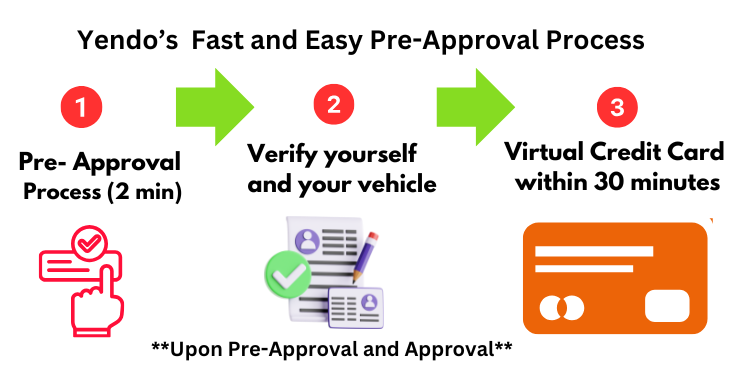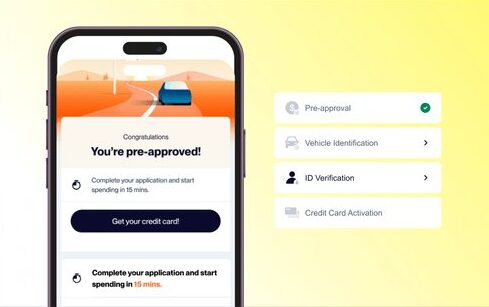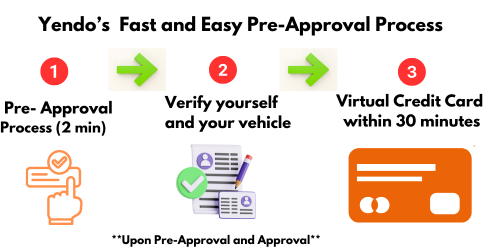Tom
How to Use a Credit Card Usage Calculator to Boost Your Credit Score
Looking for a credit card usage calculator to improve your credit score in 2025? Credit utilization is a measures how much of your available credit you’re using. Moreover, it’s a key factor in your credit score, making up 30% of your FICO score.
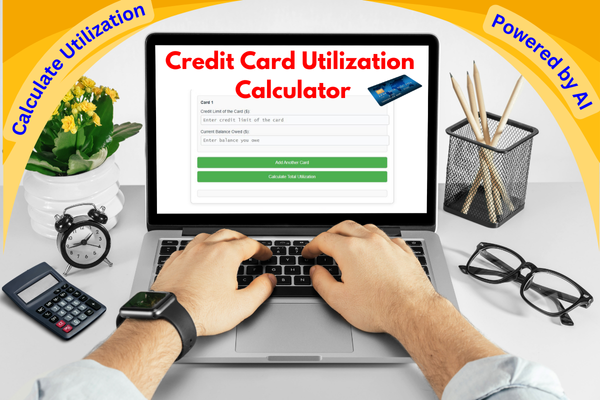
In this guide, I’ll explain what credit utilization is and why keeping it below 30% is ideal. I’ll also provide a step-by-step process to calculate credit utilization effectively and show you how to use our free credit utilization calculator. Additionally, I’ll share how credit cards like the Yendo Credit Card can help lower your utilization with higher credit limits.
Disclosure: This post contains affiliate links, and I may earn a commission if you make a purchase at no extra cost to you. I only recommend products I thoroughly researched and trust.
What Is Credit Utilization and Why Does It Matter?
Credit utilization refers to the percentage of your available credit that you’re currently using. For example, if you have a credit card with a $1,000 limit and a $300 balance, your credit utilization ratio is 30% ($300 ÷ $1,000). As a result, this ratio becomes the major factor in your credit score, second only to payment history.
Why Keep It Below 30% ?
Experts recommend keeping your credit utilization below 30% because:
- It Shows Responsible Credit Use: A low ratio indicates you’re not over-relying on credit, which credit bureaus like Experian, Equifax, and TransUnion view positively.
- It Boosts Your Credit Score: Staying below this threshold can improve your FICO score over time, as it demonstrates financial discipline.
- It Prevents Overextension: High utilization can signal to lenders that you’re at risk of missing payments, potentially leading to higher interest rates or denied applications.
For instance, if your total credit limit across all cards is $10,000, you should aim to keep your balances below $3,000 to maintain a healthy ratio. A credit utilization calculator can help you track this easily.
How to Use a Credit Card Usage Calculator: A Step-by-Step Guide
A credit card usage calculator simplifies the process of determining your credit utilization ratio, helping you take actionable steps to improve your credit score. Moreover, it offers a seamless way to track and optimize your credit usage. It’s available right here on CreditRewardsCards.com. Click this link to try our free Credit Card Utilization Calculator now.
So, do you want to see how it works? Watch this quick video to see it in action:
Click on this link to see it on Youtube:
The FREE Credit Card Utilization Calculator That Can Help BOOST Your Credit Score!.
Here’s how you can use it to calculate credit utilization:
Step 1: Enter Your Credit Limit Into The Credit Card Usage Calculator
Add the credit limit for each credit card you own, one by one, into the credit utilization calculator. Simply input the limit for each card as prompted.
Step 2: Enter Your Current Balance
Now, input the outstanding balance on each card in the corresponding field. The calculator allows you to add each card individually, so there’s no need to total your balances manually.
Step 3: Calculate Your Utilization
Click the “Calculate Total Utilization” button to instantly see your overall credit utilization percentage across all your cards
Step 4: Get AI Advice & Recommendations
After calculating, you’ll receive personalized AI-driven insights, tips, and powerful strategies. This will help you lower your utilization and moreover, maximize your credit score.
Step 5: Download Your Personalized Report
With your credit utilization results, you will receive a customized AI report that you can save or print. You get a detailed and personalized AI-powered recommendations report full of great advice and actionable strategies. As a result, you can follow this advice and strategies to maintain or improve your credit health.
If your overall utilization ratio is above 30%, you’ll want to take action to lower it. For example, a 30 percent credit utilization calculator can help you determine the ideal balance to stay below this threshold. If your total credit limit across all cards is $8,000, your balances should be under $2,400 (30% of $8,000) to maintain a healthy ratio.
Strategies to Lower Your Credit Utilization With A Credit Card Usage Calculator
Once you’ve used our credit card usage calculator to calculate credit utilization, here are some strategies to bring your ratio down:
- Pay Down Balances: Focus on paying off high-balance cards to reduce your overall utilization.
- Request a Credit Limit Increase: Contact your card issuer to ask for a higher limit. In truth, this approach can lower your ratio without changing your spending.
- Open a New Credit Card: Adding a new card with a high limit can increase your total available credit, as I’ll discuss in the next section.
Credit Cards to Lower Your Utilization: How Yendo Can Help
One effective way to lower your credit utilization is by increasing your total available credit. This is where credit cards like the Yendo Credit Card come in. The Yendo Credit Card offers up to $10,000 in credit limits, helping lower your utilization ratio significantly. For example, if your current total credit limit is $5,000 and you add Yendo’s $10,000 limit, your new total limit becomes $15,000, making it easier to stay below the 30% threshold recommended by a 30 percent credit utilization calculator.

In addition, Yendo doesn’t require a credit check, making it ideal for those with bad credit. It also reports to all three major credit bureaus (Experian, Equifax, TransUnion), helping you build credit with on-time payments. So, if you need to learn more, check out my in-depth Yendo reviews for 2025 or apply now at Yendo’s website.
Why Use a Credit Card Usage Calculator to Boost Your Score?
Using a credit card usage calculator offers several benefits:
- Accuracy: It provides a precise calculation of your utilization ratio, saving you from manual errors.
- Goal Setting: It helps you set a target balance to stay below 30%, as shown in the step-by-step guide.
- Personalized Insights: With our free credit utilization calculator, you get AI-driven advice and a downloadable report tailored to your credit situation.
- Motivation: Seeing your ratio and receiving actionable recommendations can motivate you to pay down debt or seek higher credit limits, such as with the Yendo Credit Card.
Additional Tips to Manage Your Credit with a Credit Card Usage Calculator
Beyond using a credit card usage calculator, here are more strategies to improve your credit score:
- Pay Your Balance Multiple Times a Month: This keeps your reported balance low, even if you use your card frequently.
- Monitor Your Utilization Regularly: Check your ratio monthly with our credit utilization calculator to ensure it stays below 30%, especially if you’re aiming for the 30% threshold.
- Avoid Closing Old Credit Cards: Closing accounts reduces your total available credit, which can increase your utilization ratio.
- Consider Secured Cards for Bad Credit: Cards like Yendo or OpenSky can help you build credit while providing higher limits to manage utilization.
Looking for more credit card options? Check out our Best Credit Cards for Young Adults with Bad Credit in 2025. For a broader approach, see our step-by-step guide to improve your bad credit with a credit utilization calculator.
Conclusion: Take Control of Your Credit Utilization With Our Credit Card Usage Calculator
In truth, a credit card usage calculator is a powerful tool that can help you boost your credit score by helping you manage your credit utilization. By keeping your ratio below 30%, using our free credit utilization calculator to track your progress, and leveraging credit cards like Yendo to increase your available credit, you can improve your financial health in 2025.

“Yendo was quick and easy. Simply done from my phone. I hardly had to leave the couch and the interest rate worked great for our budget. So I recommend Yendo to anyone who will listen. I’d say at least try the process. You’d be very happy.” Click here to see the full review.
Inspired by Mela’s experience? Explore how the Yendo Credit Card can help you lower your credit utilization and boost your score.
Ready to boost your credit? Apply for the Yendo Credit Card now!
For more details on Yendo, read my full Yendo reviews for 2025. Concerned about Yendo’s legitimacy? Check out my post addressing whether Yendo is a scam in 2025. Have you tried using our credit card usage calculator to manage your credit? Share your experience in the comments below—I’d love to hear your story!
Best Credit Cards for Young Adults with Bad Credit in 2025
Introduction to the Best Credit Cards for Young Adults in 2025
Are you a young adult struggling with bad credit and searching for the best credit cards for young adults in 2025? If so, you’re not alone. Many young adults face challenges building credit due to limited credit history or past financial mistakes, making bad credit credit cards a popular solution.
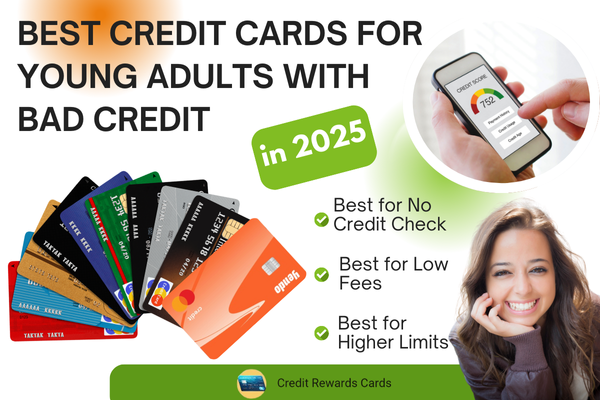
In fact, certain credit cards for young adults wonderful offer opportunities to rebuild credit without strict requirements. In this guide, I’ll explore the top credit cards for young adults, including options like the Yendo Credit Card, secured cards like OpenSky, and student cards. Moreover, by the end, you’ll know which card best suits your needs to start your credit-building journey. If you’re looking for even more options, check out our comprehensive credit card guide for young adults for a broader overview.
Disclosure: This post contains affiliate links, and I may earn a commission if you make a purchase at no extra cost to you. I only recommend products I thoroughly researched and trust.
1. Yendo Credit Card: Best for No Credit Check and Higher Limits
If you’re looking for the best credit cards for young adults with bad credit, the Yendo Credit Card stands out as a top choice in 2025. Unlike traditional secured cards, Yendo uses your vehicle title as collateral instead of a cash deposit, making it ideal for young adults who may not have extra cash on hand. For example, if your car is worth $10,000, you could qualify for a credit limit between $450 and $10,000—much higher than many secured cards.

If you want to learn more about the Yendo Credit Card, click the link to read our in-depth Yendo Reviews for 2025 blogpost.
Pros of the Yendo Credit Card for Young Adults
- No credit check required, perfect for bad credit.
- Reports to all three major credit bureaus (Experian, Equifax, TransUnion), helping you build credit with on-time payments.
- Higher credit limits based on your vehicle’s value.
Cons of the Yendo Credit Card for Young Adults
- Timely payments are important to avoid any risk of repossession.
- Comes with a 29.88% APR and a $40 annual fee.
In truth, Yendo is particularly appealing for young adults needing a higher credit limit without a cash deposit, offering flexibility to cover expenses like textbooks or emergencies. Additionally, its credit-building potential makes it a solid long-term option.
For a comprehensive review, check out my Yendo reviews for 2025 or apply now.
2. OpenSky Secured Visa: Best Credit Card for Young Adults with Low Fees
Moreover, another excellent option among credit cards for young adults with bad credit is the OpenSky Secured Visa. In truth, this card requires a cash deposit as collateral (starting at $200), which becomes your credit limit. However, it is a great choice for those who don’t want to use a vehicle title as collateral.
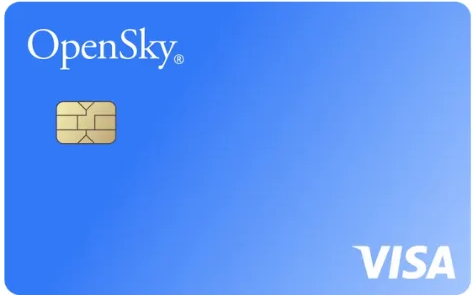
Pros of the OpenSky Secured Visa for Credit Building
- No credit check, making it accessible for bad credit.
- Low annual fee of $35.
- Reports to all three credit bureaus, aiding credit building.
Cons of the OpenSky Secured Visa for Credit Building
- Requires a cash deposit, which as a result, can be tough for cash-strapped young adults.
- No rewards program, unlike some student cards.
OpenSky is a safer bet if you’re worried about repossession risks with Yendo. For instance, a $200 deposit gets you a $200 credit limit, offering a controlled way to build credit. Learn more about secured cards at Experian’s guide on secured cards.
3. Discover it® Student Cash Back: Best for Students with Some Credit
While not specifically for bad credit, the Discover it® Student Cash Back card is worth considering among good credit cards for young adults who are students and have at least some credit history. In fact, Discover often accepts applicants with limited credit, making it a viable option for young adults transitioning from bad credit.

Pros of the Discover it® Student Cash Back for Young Adults
- 5% cash back on rotating categories (up to $1,500 per quarter, then 1%) and 1% on other purchases.
- No annual fee, which therefore is budget-friendly for students.
- First-year cashback match, thus doubling your rewards.
Cons of the Discover it® Student Cash Back for Young Adults
- Requires a credit check, which may result in denial for very bad credit.
- Rewards require activation each quarter, which can be inconvenient.
Therefore, this card is best for young adults who are students and can handle a credit check. For example, earning 5% cash back on dining can help with social expenses, while the first-year match adds extra value. However, if your credit is too poor, you might need to start with Yendo or OpenSky first.
4. Capital One Platinum Secured Credit Card: Best for Potential Upgrades
The Capital One Platinum Secured Credit Card is another strong contender for good credit cards for young adults with bad credit, especially those looking for a path to an unsecured card. In fact, like OpenSky, it requires a cash deposit (as low as $49 for a $200 credit limit), but Capital One offers potential upgrades to unsecured cards after responsible use.
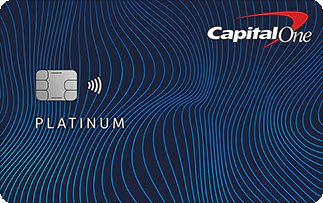
Pros of the Capital One Platinum Secured Credit Card for Credit Building in 2025
- Low deposit requirement ($49–$200 for a $200 credit limit).
- No annual fee, which as a result, will save you money.
- Opportunity to upgrade to an unsecured card after 6 months of on-time payments.
Cons of the Capital One Platinum Secured Credit Card for Credit Building in 2025
- No rewards, which might disappoint young adults looking for perks.
- Requires a credit check, though Capital One is lenient with bad credit.
In truth, this card suits young adults who want a path to an unsecured card without annual fees. Additionally, its low deposit makes it accessible if you’re short on cash but still want to build credit responsibly.
Comparing Credit Cards for Young Adults: Which Is Right for You?
So, choosing the best credit cards for young adults depends on your priorities. If you need a card with no credit check and higher limits, Yendo is ideal, especially if you own a vehicle—learn more by comparing Yendo to other no credit check credit cards in 2025. For instance, a $5,000 vehicle might get you a $2,500 credit limit with Yendo, compared to OpenSky’s $200 limit for the same deposit. On the other hand, OpenSky and Capital One are better if you prefer a cash deposit over vehicle collateral, offering lower fees and potential upgrades. Meanwhile, the Discover it® Student Cash Back card suits students with some credit history who want rewards.
Here’s a quick comparison:
- Yendo: Best for no credit check, $450–$10,000 (with vehicle title).
- OpenSky: Best for low fees, no rewards; but requires a deposit.
- Discover it® Student: Best for rewards, students; but requires a credit check.
- Capital One Platinum Secured: Best for upgrades, but low deposit; no rewards.
| Card Name | Credit Check | Annual Fee | Rewards | Credit Limit/Deposit |
|---|---|---|---|---|
| Yendo Credit Card | No | $40 | No | $450–$10,000 (vehicle title) |
| OpenSky Secured Visa | No | $35 | No | $200+ (cash deposit) |
| Discover it® Student Cash Back | Yes | $0 | Yes (5% cash back on rotating categories) | Varies (based on credit) |
| Capital One Platinum Secured | Yes (lenient) | $0 | No | $200+ ($49–$200 deposit) |
Looking for the best credit cards to build your credit in 2025, even with bad credit? Check out this video to learn about options that let you keep your car and boost your credit fast, including the Yendo Credit Card.
Final Thoughts: Start Building Credit Today in 2025
In conclusion, finding the best credit cards for young adults with bad credit in 2025 is easier than ever with options like Yendo, OpenSky, Discover, and Capital One. The Yendo Credit Card stands out as one of the best bad credit credit cards. Its no credit check policy and higher credit limits make it a top pick for young adults needing flexibility.

Hi, my name is Austin and I’ve recently started using Yendo… I fell on some hard times and they were here to help… I truly love it, and they’re there to help you when you need it. They’re willing to work with you if you fall behind on the payments, and that’s great. I encourage everybody to use it. Click here to see the full review.
Inspired by Austin’s experience? Take the first step toward building your credit with Yendo today!
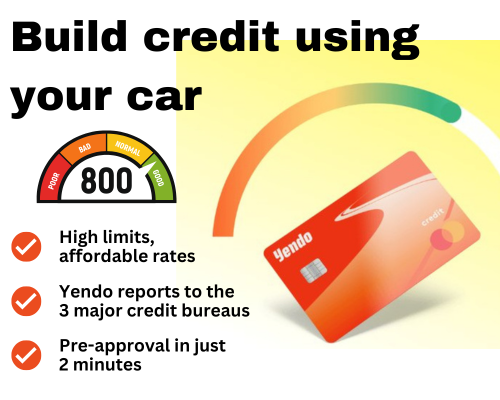
For a comprehensive review of Yendo, click on the link and check out my Yendo reviews for 2025 blogpost.
If you have bad credit and need to improve it, click on this link for a complete step-by-step guide How to Improve Your Bad Credit Score in 2025
However, secured cards like OpenSky and Capital One offer other alternatives if you’re not sure about using your vehicle as collateral. For students with some credit, Discover’s rewards make it a compelling choice.
Moreover, feel free to explore these cards for credit building 2025 goals and start improving your credit today! Have you tried any of these cards? Share your experience in the comments below.
Is Yendo Credit Card a Scam? Addressing Your Concerns in 2025
Are you wondering, is Yendo legit? If you’re researching the Yendo Credit Card in 2025, you might have concerns about its legitimacy. After all, a credit card secured by your vehicle title sounds unconventional, and skepticism is natural. Yendo reviews often highlight its benefits. But some users worry: Is Yendo Credit Card legit, or is it a scam?
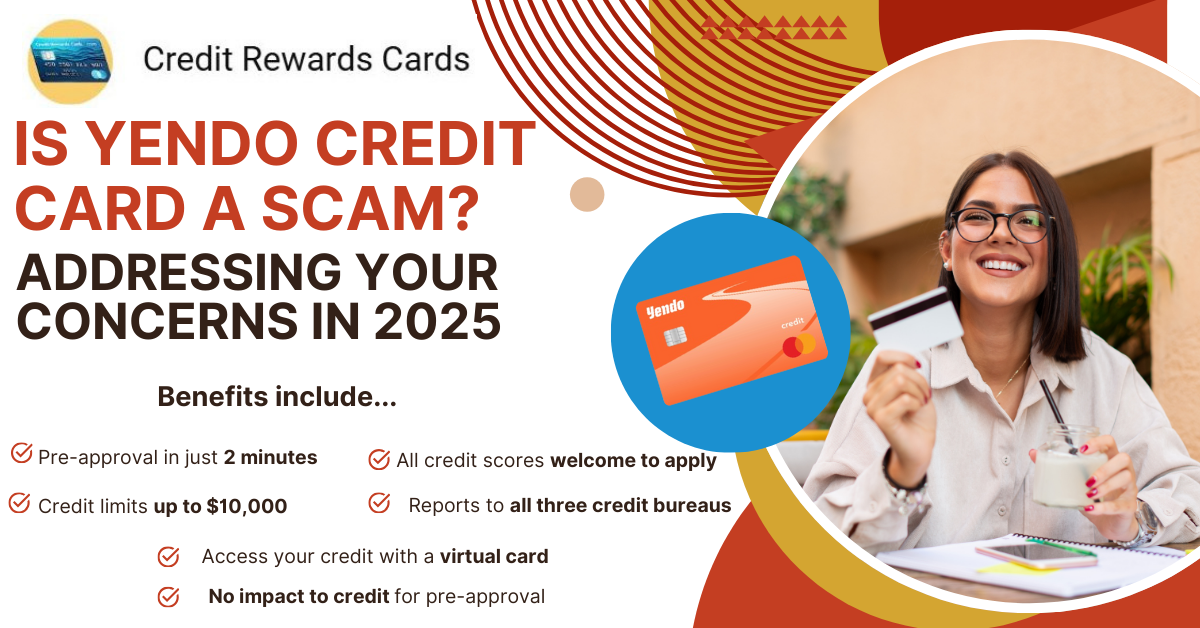
In this FAQ-style guide, I’ll address your top concerns. Such as “What happens if I miss a payment?”. And “How does Yendo protect my car title?”. By the end, you’ll have a clear picture of whether Yendo is a trustworthy option for your financial needs in 2025.
Disclosure: This post contains affiliate links, and I may earn a commission. If you make a purchase at no extra cost to you. I only recommend products I thoroughly researched and trust.
What Is the Yendo Credit Card?
First, let’s clarify what Yendo is. The Yendo Credit Card, issued by Cross River Bank, who is a member of the FDIC (Federal Deposit Insurance Corporation). It is a secured credit card that uses your vehicle title as collateral instead of a cash deposit. This means you can access credit limits from $450 to $10,000 based on your car’s value, without a credit check. For example, if your vehicle is worth $10,000, you might qualify for a higher credit limit than with traditional secured cards. However, this unique approach raises questions about its legitimacy, which I’ll address below.

Is Yendo Legit or a Scam? Examining the Evidence
Let’s tackle the big question: Is Yendo legit? The short answer is yes, Yendo is a legitimate fintech company. Founded in 2022 in Dallas, Texas, Yendo has a B+ rating from the Better Business Bureau (BBB). This indicates a solid track record for a company of its age. Additionally, Yendo has raised $165 million in funding. This includes $150 million in debt financing from i80 Group and $15 million in equity from strategic investors. As reported by Fintech Futures.com in May of 2024. This significant investment signals confidence from financial institutions in Yendo’s business model.
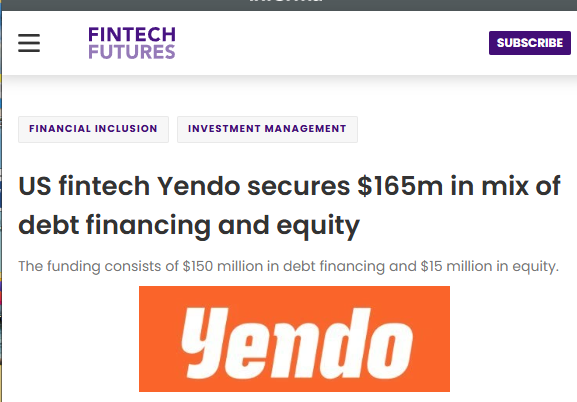
With this strong financial backing, Yendo proves it’s a legitimate option for those seeking a secured credit card. Ready to explore Yendo for yourself? Apply now.
Moreover, Yendo is partnered with Mastercard. It offers a real credit card that reports to all three major credit bureaus—Experian, Equifax, and TransUnion. This helps users build credit, a feature not typically associated with scams. However, some negative reviews on platforms like Trustpilot (average 3.2 stars) mention issues like application glitches or low credit limit. This can fuel skepticism. For instance, one user complained about a $450 credit limit despite a $10,000 vehicle value. However others praise Yendo’s quick approval process. These mixed experiences are common for new fintechs and don’t indicate a scam.
What Happens If I Miss a Payment with Yendo?
A common concern is, What happens if I miss a payment? Since Yendo uses your vehicle as collateral, the stakes feel high. If you miss a payment, Yendo may charge a late fee (up to $40, per their terms), and your account could be flagged as delinquent. After several missed payments—typically three months, according to some user reports on Reddit—Yendo may initiate repossession of your vehicle as a last resort to recover the outstanding balance. However, Yendo emphasizes that repossession is not their goal, as they lose money on each repossession, and they work with users to create payment plans to avoid this outcome.

For example, a Trustpilot reviewer noted that Yendo threatened repossession over a $50 past-due balance, but this was after multiple missed payments and lack of communication. To avoid this, make at least the minimum payment (1% of your balance or $50, whichever is greater) within 25 days of your statement. Additionally, Yendo’s app allows you to track payments and set reminders, helping you stay on top of your obligations.
How Does Yendo Protect My Car Title? Is Yendo Legit?
Another frequent question is, How does Yendo protect my car title? When you’re approved, you send your vehicle title to Yendo via FedEx (at their expense). Until the title is received, you get access to 40% of your credit limit (up to $1,500) via a virtual card. Once Yendo receives the title, they become a lienholder, but you retain ownership and can still use your car. Yendo stores your title securely, and their app includes fraud protection features like virtual card numbers for online purchases, reducing the risk of unauthorized use.
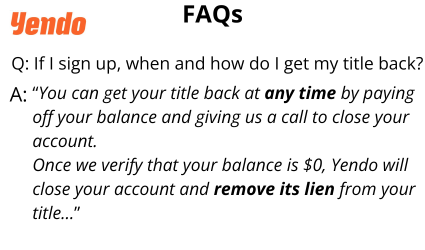
If you pay off your balance and close your account, Yendo returns your title. However, some users on the Yendo App Store page reported delays in account unblocking after sending their title, which caused frustration. For instance, one user waited from April to July 2024 for their account to be unblocked, though Yendo eventually resolved the issue. While these hiccups exist, Yendo’s processes are designed to protect your title, and their customer support team is available to address concerns.
Is Yendo Credit Card Legit for Building Credit?
Yes, the Yendo Credit Card is a legitimate tool for building credit. Because Yendo reports all account activity to the major credit bureaus, on-time payments can improve your credit score over time. For example, a Trustpilot user shared, “I’ve been making on-time payments, and my credit line increased!” This credit-building feature is a key benefit for those with bad credit, especially since Yendo doesn’t require a credit check for pre-approval. However, be mindful of the 29.88% APR and $40 annual fee, which can add up if you carry a balance.
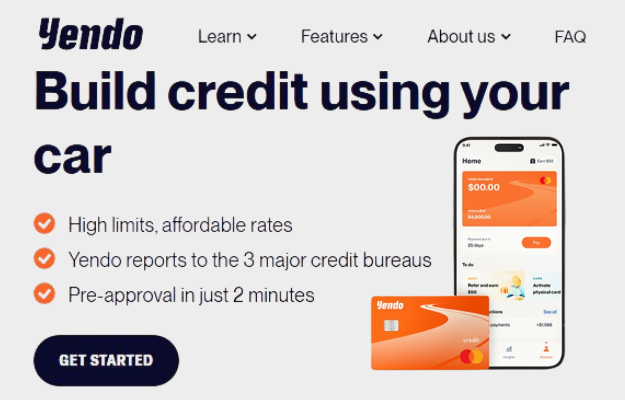
What Are the Risks of Using Yendo?
While Yendo is legit, it’s not risk-free. The biggest risk is repossession if you default on payments, as your car is collateral. Additionally, the high APR (29.88%) and annual fee ($40) make it more expensive than some secured cards that offer rewards or no fees—compare Yendo to other no credit check credit cards in 2025 to explore alternatives. Some users also report application issues, like delays or denials despite Yendo’s claim of no credit check, often due to insufficient credit history or vehicle ineligibility (e.g., cars older than 1996 don’t qualify). Therefore, weigh these risks against the benefits, especially if you’re prone to missing payments.
Want a Deeper Dive into Yendo?
If you’re still curious about Yendo, I’ve got you covered. For a comprehensive review of Yendo, including detailed user experiences and comparisons, check out my Yendo reviews for 2025 blogpost or apply now.
Final Thoughts: Is Yendo Legit and Right for You in 2025?
In conclusion, Yendo is not a scam—it’s a legitimate option for those with bad credit seeking a no credit check credit card. Its $165 million in funding, BBB rating, and partnership with Mastercard provide reassurance, though risks like repossession and high fees require careful consideration.

When I first got it,or when I was first getting it, I kind of didn’t know if it was like real or not… But I’m happy to say I got it. I’m glad I did… I definitely recommend it…Let me be the person to tell you it’s legit. Get it.
Click here to see the full review.
Joseph’s experience confirms Yendo’s legitimacy—ready to take the next step?
Convinced Yendo is legit? Apply for the Yendo Credit Card now to start building credit!
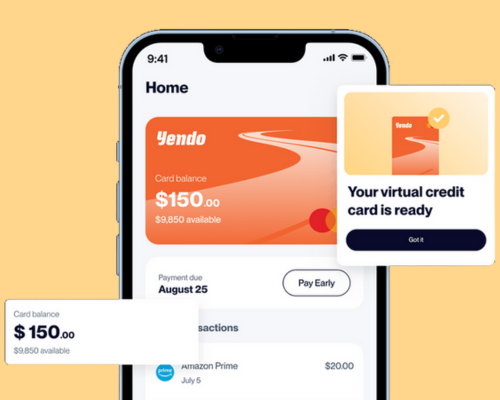
Apply for the Yendo Credit Card now to start building credit!
Looking for more credit card options to build your credit? Check out our guide on the best credit cards for young adults with bad credit in 2025 to explore alternatives like OpenSky and Capital One!
By addressing concerns like payment risks and title security, I hope this guide has clarified whether Yendo fits your needs. Have you tried Yendo? Share your experience in the comments below!
Comparing Yendo to Other No Credit Check Credit Cards in 2025
Looking for Yendo Credit Card reviews to decide if it’s the right no credit check option for you? Let’s break down how Yendo compares to other cards in 2025.
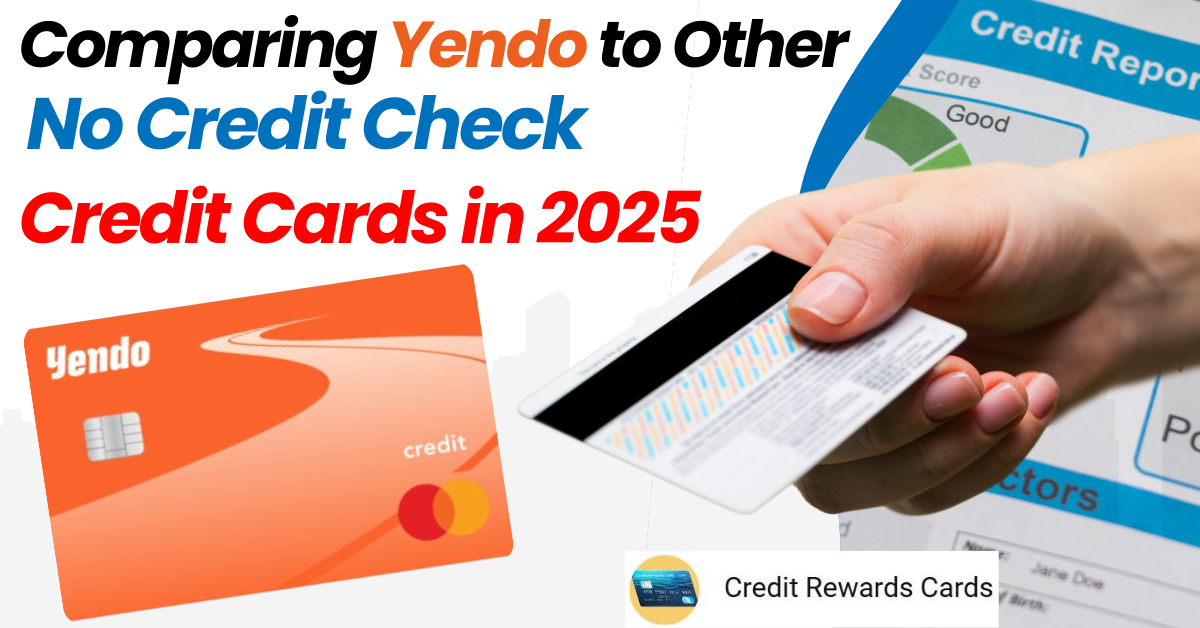
Introduction: Why Compare No Credit Check Credit Cards in 2025?
If you’re struggling with bad credit, finding a credit card that doesn’t require a credit check can feel like a lifeline. However, not all no credit check credit cards are created equal. In 2025, Yendo, OpenSky, and subprime cards cater to poor credit users but vary in features, costs, and benefits. For instance, the Yendo Credit Card uses a unique vehicle-secured approach, offering higher credit limits and lower APRs compared to alternatives like title loans. In this guide, we’ll dive into Yendo Credit Card reviews to compare Yendo to other no credit check credit cards, helping you decide which option best suits your needs. Want to understand what the Yendo Credit Card is all about? Let’s dive in.
Disclosure: This post contains affiliate links, and I may earn a commission if you make a purchase at no extra cost to you. I only recommend products I thoroughly researched and trust.
What Is the Yendo Credit Card?
The Yendo Credit Card is a secured credit card designed for individuals with bad credit or no credit history. Unlike traditional secured cards that require a cash deposit, Yendo uses your vehicle as collateral, meaning you don’t need to put down cash upfront. As a result, Yendo offers credit limits ranging from $450 to $10,000, depending on your car’s value, which is significantly higher than many other no credit check cards. Additionally, Yendo reports to all three major credit bureaus (Equifax, Experian, TransUnion), helping you rebuild your credit score with on-time payments. With an APR of 29.88%, it’s also more affordable than predatory alternatives like title loans, which can charge up to 300% APR.
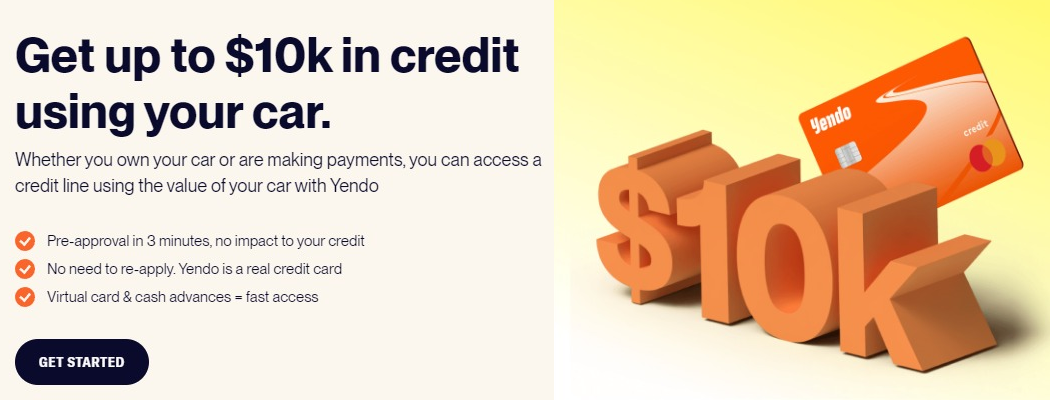
However, Yendo does require you to have a vehicle with a clear title (no outstanding loans) and a minimum value, which may not suit everyone. Nevertheless, its unique approach makes it a standout option for those who need a higher credit limit without a cash deposit.
Learn more about credit reporting at Experian.
Comparing Yendo to Other No Credit Check Credit Cards
To help you make an informed decision, let’s compare the Yendo Credit Card to other popular no credit check credit cards in 2025, such as the OpenSky Secured Visa and typical subprime cards for bad credit users. For example, we’ll look at credit limits, fees, APRs, and credit-building potential.
Comparison Table: Yendo vs. OpenSky vs. Subprime Cards
| Feature | Yendo Credit Card | OpenSky Secured Visa | Typical Subprime Card |
|---|---|---|---|
| Credit Check Required | No | No | No |
| Security Deposit | Vehicle title (no cash deposit) | $200–$3,000 cash deposit | Often none, but high fees |
| Credit Limit | $450–$10,000 (based on vehicle value) | $200–$3,000 (matches deposit) | $300–$1,000 |
| APR | 29.88% | 22.39% (variable) | 30%–36% (or higher) |
| Annual Fee | $0 (but $5.99–$12.99 monthly maintenance) | $35 | $75–$125 (first year, often $45–$99 after) |
| Credit Reporting | Reports to all three bureaus | Reports to all three bureaus | Varies (some don’t report) |
| Best For | Higher credit limits, vehicle owners | Low APR, small deposit | Quick approval, but costly |
Source: Data compiled from official websites and user reviews as of March 31, 2025.
Key Takeaways the Yendo Credit Card Reviews Comparison
- Credit Limits: Yendo shines with its higher credit limits ($450–$10,000), making it ideal for those who need more spending power to manage expenses or improve credit utilization. In contrast, OpenSky’s limit is capped at your deposit ($200–$3,000), and subprime cards often max out at $1,000.
- Costs: Yendo’s APR (29.88%) is competitive compared to subprime cards (30%–36%) and significantly lower than title loans (up to 300%). However, OpenSky offers a lower APR (22.39%), which could save you money if you carry a balance.
- Fees: Yendo has no annual fee but charges a monthly maintenance fee ($5.99–$12.99), which can add up. OpenSky’s $35 annual fee is more predictable, while subprime cards often have high first-year fees ($75–$125).
- Credit Building:Because Yendo and OpenSky report to all three credit bureaus, they’re better for rebuilding credit. Some subprime cards don’t report, limiting their usefulness for credit improvement.
Why Yendo Stands Out: Yendo Credit Card Reviews in 2025
Yendo’s vehicle-secured approach sets it apart from other no credit check credit cards. For instance, if you own a vehicle with a clear title, you can access a credit limit up to $10,000 without a cash deposit—a game-changer for those with bad credit who need more financial flexibility. Moreover, Yendo’s APR of 29.88% is far more affordable than title loans, which can trap users in a cycle of debt with rates as high as 300%. Additionally, Yendo’s credit reporting to all three bureaus helps you build credit over time, provided you make on-time payments.
Based on Yendo Credit Card reviews in 2025, users highlight its benefits for bad credit, appreciating the higher credit limits and the ability to avoid cash deposits, though some note the monthly maintenance fee as a downside. Overall, Yendo is a strong option for vehicle owners looking to rebuild credit without the high costs of subprime cards or title loans.
For a comprehensive review, check out my Yendo reviews for 2025 blogpost or apply now.
Alternatives to Yendo: OpenSky and Subprime Cards
OpenSky Secured Visa
The OpenSky Secured Visa is another no credit check option, requiring a cash deposit ($200–$3,000) that sets your credit limit. Because it has a lower APR (22.39%) and a modest $35 annual fee, it’s a good choice for those who want to minimize interest charges. However, the cash deposit requirement can be a barrier for some, and the credit limit is lower than Yendo’s. For a broader comparison, check out our guide on the best credit cards for young adults with bad credit in 2025.
Subprime Cards for Bad Credit
Subprime cards, like the First Access Visa or Total Visa, often target bad credit users with quick approvals and no credit checks. Unfortunately, they come with high costs—annual fees can be $75–$125 in the first year, and APRs often exceed 30%. Moreover, some don’t report to credit bureaus, limiting their value for credit building. Therefore, they’re best avoided unless you have no other options.
How to Choose the Right No Credit Check Credit Card with Yendo Credit Card Reviews
First, consider your needs. If you own a vehicle and need a higher credit limit, Yendo is a strong contender. On the other hand, if you prefer a lower APR and can afford a cash deposit, OpenSky might be better. Second, evaluate the costs—subprime cards often have hidden fees that can outweigh their benefits. Finally, ensure the card reports to credit bureaus, as this is crucial for rebuilding your credit score over time.
FAQ: Yendo Credit Card Reviews and Comparisons
What is the Yendo Credit Card, and how does it work?
The Yendo Credit Card is a secured card that uses your vehicle as collateral instead of a cash deposit. It offers credit limits from $450 to $10,000 and reports to all three credit bureaus to help you rebuild credit. Learn more.
How does Yendo compare to title loans?
Yendo’s APR (29.88%) is much lower than title loans (up to 300%), making it a more affordable option for bad credit users. It also helps build credit, while title loans typically don’t.
Is Yendo better than other no credit check cards?
It depends on your needs. Yendo offers higher credit limits and no cash deposit, but OpenSky has a lower APR. Subprime cards often have higher fees and fewer benefits.
Conclusion: Is Yendo the Best No Credit Check Credit Card for You?
In 2025, the Yendo Credit Card stands out among no credit check credit cards for its vehicle-secured approach, higher credit limits ($450–$10,000), and lower APR (29.88%) compared to title loans. While OpenSky offers a lower APR and subprime cards provide quick approvals, Yendo’s balance of affordability and credit-building potential makes it a top choice for vehicle owners with bad credit. Still wondering about Yendo’s trustworthiness? Check out our detailed guide on whether Yendo is a scam in 2025 for peace of mind. For a comprehensive review, check out my Yendo reviews for 2025 blogpost.
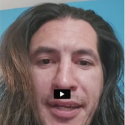
It’s been a great opportunity for me to build some credit, as well as pay some bills. That were coming up at an untimely event. Yendo was there to be able to give me the funds within 24 hours4. It’s been great ever since. Click here to see the full review.
Inspired by Jason’s success? Take the first step toward rebuilding your credit today!
Ready to rebuild your credit? Apply for the Yendo Credit Card now!

Not sure if Yendo’s vehicle-secured approach is right for you? Explore alternatives like OpenSky and Capital One in our guide on the best credit cards for young adults with bad credit in 2025. For a step-by-step guide to improving your credit, check out how to improve your bad credit score in 2025. Have you tried Yendo or another no credit check card? Share your experience in the comments below!
How to Improve Your Bad Credit Score in 2025: A Step-by-Step Guide
Learn how to improve your bad credit score with practical steps, including using a credit utilization calculator to manage your credit effectively.
Published March 28, 2025
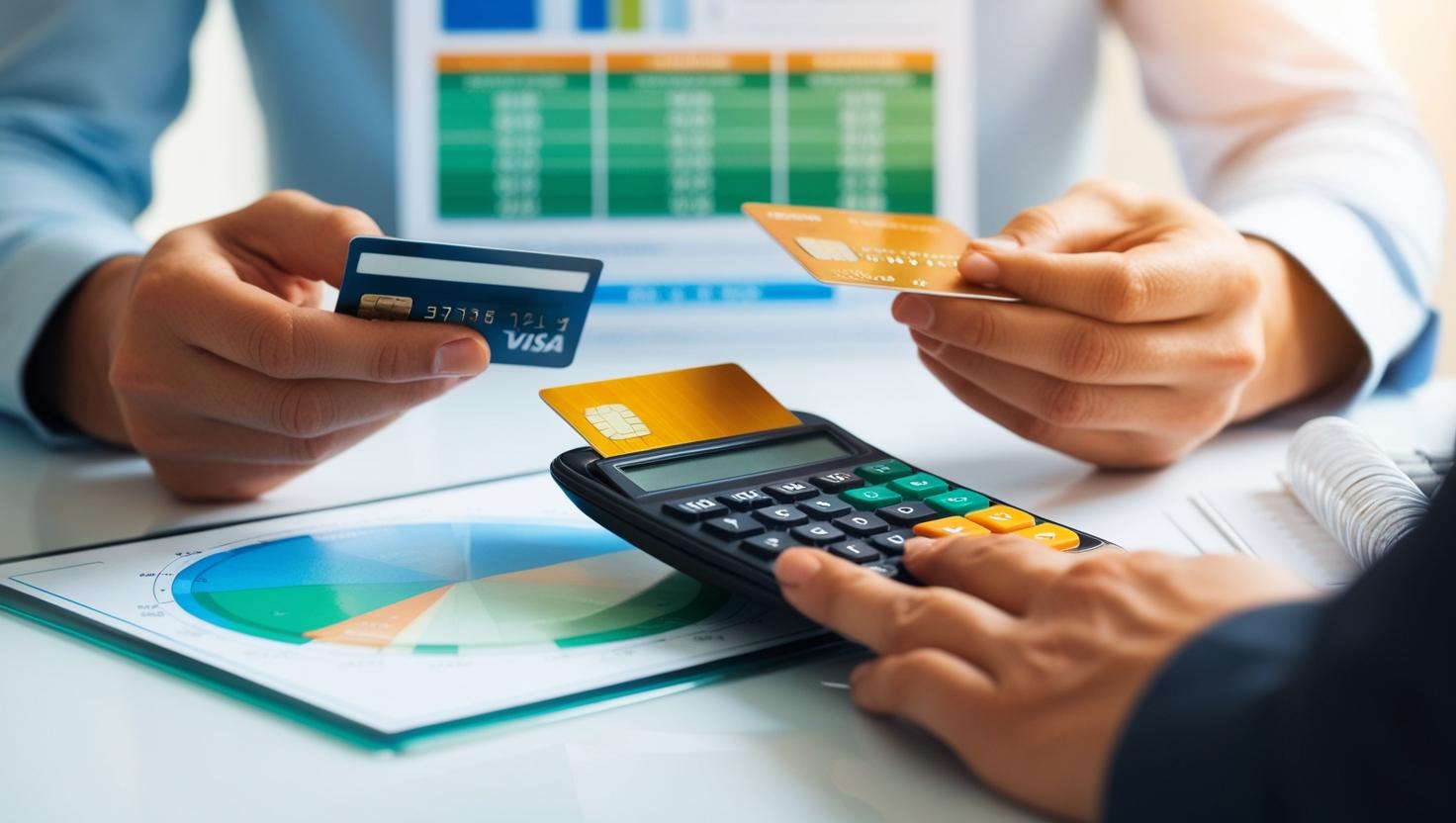
Struggling with a bad credit score and wondering how to improve it in 2025? You’re not alone—many people face the challenge of rebuilding their credit to unlock better financial opportunities, such as lower interest rates, easier loan approvals or even better rental agreements. A bad credit score – typically below 580 on the FICO scale – can feel like a major roadblock, but with the right strategies, like learning how to calculate credit utilization and using a credit utilization calculator to manage your credit, you can finally turn things around and set yourself up for success.
In this step-by-step guide, we’ll walk you through proven methods to improve your bad credit score. Moreover with a special focus on managing your credit utilization—a key factor that makes up 30% of your FICO score. We’ll also explain how to calculate your credit utilization, show you how to use a credit utilization calculator, and recommend tools like the Yendo Credit Card to help you rebuild credit without a hard credit check. Let’s get started on your path to better credit in 2025!
Disclosure: This post contains affiliate links, and I may earn a commission if you make a purchase at no extra cost to you. I only recommend products I thoroughly researched and trust.
Why Your Credit Score Matters in 2025
Your credit score is a three-digit number (ranging from 300 to 850 on the FICO scale) that reflects your creditworthiness. In fact, lenders, landlords, and even employers use it to assess your financial reliability.

Apply now.
A bad credit score can lead to:
- Higher interest rates on loans and credit cards.
- Difficulty getting approved for mortgages or rentals.
- Limited access to financial products.
In truth, improving your credit score opens doors to better financial opportunities. According to Experian, the average FICO score in the U.S. in 2024 was 715, and aiming for at least a “good” score (670–739) can make a big difference. Let’s dive into the steps to get there.
Step 1: Understand Your Credit Score and What Affects It
Before you can improve your credit score, you need to know where you stand and what factors influence it. For instance, the FICO score, the most widely used model, is based on five key components:
- Payment History (35%): Paying bills on time is the biggest factor.
- Credit Utilization (30%): The ratio of your credit card balances to your credit limits.
- Length of Credit History (15%): How long you’ve had credit accounts.
- Credit Mix (10%): A variety of credit types (e.g., credit cards, loans).
- New Credit (10%): Recent applications for credit.
For those with bad credit, focusing on payment history and credit utilization can yield the fastest results. Moreover, in this guide, we’ll zero in on credit utilization, as it’s a major lever you can pull to boost your score quickly.
Action Item: Check your credit score for free through services like Credit Karma or Experian. Review your credit report for errors (e.g., incorrect late payments) and dispute them with the credit bureaus (Equifax, Experian, TransUnion).
Step 2: Calculate Your Credit Utilization Ratio
What Is Credit Utilization?
Credit utilization is the percentage of your available credit that you’re currently using. It’s calculated as:
\[\text{Credit Utilization Ratio} = \left( \frac{\text{Total Credit Card Balances}}{\text{Total Credit Limits}} \right) \times 100\]For example, if you have two credit cards—one with a $500 balance and a $1,000 limit, and another with a $300 balance and a $2,000 limit—your total balance is $800, and your total limit is $3,000. Your credit utilization ratio is:
\[\left( \frac{800}{3000} \right) \times 100 = 26.67\%\]Why It Matters:
Credit utilization accounts for 30% of your FICO score, making it the second-most important factor after payment history. Experts, including those at FICO and Experian, recommend keeping your utilization below 30% to optimize your score. In addition, a high ratio (e.g., 70%) signals to lenders that you’re over-relying on credit, which can hurt your score significantly.
How to Calculate Credit Utilization Manually:
- List all your credit cards, their balances, and their credit limits.
- Add up your total balances (e.g., $800 in the example above).
- Add up your total credit limits (e.g., $3,000).
- Divide your total balances by your total limits and multiply by 100 to get the percentage.
Action Item: Calculate your credit utilization ratio today to see where you stand. If it’s above 30%, reducing it should be a priority.
Step 3: Use a Credit Utilization Calculator to Simplify the Process
First, calculating credit utilization manually can be time-consuming, especially if you have multiple credit cards. A credit utilization calculator makes it easy to determine your ratio and track your progress as you pay down debt.
Try Our Free Credit Utilization Calculator Below:
Use the interactive tool below to input your credit card balances and limits, calculate your overall utilization ratio, and get personalized AI advice on how to improve your credit score. You can also download a PDF report of your results to keep for your records.
| Card Name | Credit Limit ($) | Current Balance ($) | Utilization (%) |
|---|
Boost Your Credit with Yendo
Looking to improve your credit score? The Yendo Credit Card offers a great solution for those with bad credit:
- Up to $10,000 credit limit with no credit check
- Reports to all three credit bureaus to help build credit
- Lower APR (29.88%) compared to title loans (up to 300%)
Example Calculator Input:
- Credit Card 1 Balance: $500 | Limit: $1,000
- Credit Card 2 Balance: $300 | Limit: $2,000
Result: Your credit utilization ratio is 26.67%
How to Use the Calculator:
- Input the balance and credit limit for each of your credit cards.
- Click “Add Another Card” if you have more than one card.
- Click “Calculate Total Utilization” to see your overall ratio and get AI advice.
- Download your results as a PDF for future reference.
Why It Works: Using a credit utilization calculator helps you visualize your credit usage and set clear goals for reducing it, which of course, can directly improve your credit score over time.
Action Item: Use the calculator above to check your credit utilization ratio. Aim to lower it below 30% by paying down balances or increasing your credit limits.
Step 4: Lower Your Credit Utilization to Boost Your Score
Now that you know your credit utilization ratio, let’s explore strategies to reduce it and improve your credit score.
Strategy 1: Pay Down Your Credit Card Balances
The most direct way to lower your credit utilization is to reduce your credit card balances. Therefore, focus on paying off high-utilization cards first. For example, if one card is at 90% utilization ($900 balance on a $1,000 limit), paying it down to $300 will drop its utilization to 30%, significantly impacting your overall ratio.
Tip: Set up automatic payments or reminders to ensure you pay more than the minimum each month. Even small extra payments can make a difference over time.
Strategy 2: Request a Credit Limit Increase
If paying down debt isn’t immediately feasible, ask your credit card issuer for a higher credit limit. For example, if your $1,000-limit card increases to $2,000 and your balance stays at $500, your utilization drops from 50% to 25%. However, be cautious—requesting a limit increase may result in a hard inquiry, which can temporarily lower your score by a few points.
Tip: Only request a limit increase if you’re confident you won’t overspend with the extra credit.
Strategy 3: Use a Credit Card Designed for Bad Credit
For those with bad credit, getting approved for a credit limit increase or a new card can be challenging. This is where cards like the Yendo Credit Card come in. Yendo offers a vehicle-secured credit card with credit lines from $450 to $10,000, based on your car’s equity, without a hard credit check. By adding a new credit line, you can increase your total available credit, lowering your overall utilization ratio.
For a comprehensive review, check out my Yendo reviews for 2025 blogpost.
Example: If your current total credit limit is $3,000 with a $1,500 balance (50% utilization), adding a $4,000 Yendo credit line increases your total limit to $7,000. If your balance remains $1,500, your utilization drops to 21.4%—a significant improvement.
Action Item: Prioritize paying down high-balance cards, request a credit limit increase if appropriate, or consider a card like Yendo to expand your available credit. Click here to apply for it now. Recalculate your utilization ratio after each step to track progress.
Step 5: Make On-Time Payments to Build a Positive History
While credit utilization is crucial, payment history remains the largest factor in your credit score (35%) because it reflects your reliability to lenders. Moreover, late payments can stay on your credit report for up to 7 years, dragging down your score. To improve your bad credit:
- Set up automatic payments to ensure you never miss a due date.
- If you’ve missed payments in the past, contact creditors to negotiate removing negative marks (a “goodwill adjustment”) if you’re now in good standing.
- Use your credit card for small purchases and pay the balance in full each month to build a positive payment history.
Tip: If you’re using a card like Yendo, which reports to all three credit bureaus, on-time payments can steadily improve your score over time.
Action Item: Review your payment history on your credit report and set up reminders or autopay to ensure future payments are on time.
Step 6: Best Credit Cards for Bad Credit in 2025
Do you need to improve bad credit? Choosing the right credit card can accelerate your credit-building journey, especially if you have bad credit. Look for cards that:
- Don’t require a hard credit check (to avoid dinging your score).
- Report payments to all three credit bureaus (Equifax, Experian, TransUnion).
- Offer reasonable fees and interest rates.
One option to consider is the Yendo Credit Card, which offers up to $10K with no credit check, thus making it ideal for those with bad credit. Unlike traditional secured cards that require a cash deposit, Yendo uses your car’s equity as collateral, making it accessible for those with bad credit. It reports payments to credit bureaus, helping you build a positive history, and its APR of 29.88% is much lower than predatory title loans (which can exceed 300%). Plus, a higher credit line can lower your credit utilization ratio, as discussed earlier.
For a comprehensive review of Yendo, including user experiences and comparisons, check out my Yendo reviews in 2025 blogpost or apply now.
Other Options:
- Open Sky Secured Visa: Requires a cash deposit but has no credit check and a low annual fee ($35).
- Discover it Secured Card: Offers cashback rewards and a potential upgrade to an unsecured card after 7 months of good payment history.
For a deeper comparison of no credit check credit cards, check out our guide on comparing Yendo to other options in 2025.
Action Item: Research credit cards for bad credit and apply for one that fits your needs, like Yendo, to start building a positive credit history.
Step 7: Monitor Your Progress and Stay Consistent
Improving your credit score is a marathon, not a sprint. Therefore, you must monitor your progress regularly to stay motivated and adjust your strategies as needed:
- Check your credit score monthly through free services like Credit Karma or your bank.
- Use a credit utilization calculator to track your ratio as you pay down debt or add new credit lines.
- Review your credit report annually (or more often if you’re actively rebuilding) at AnnualCreditReport.com to ensure accuracy.
Consistency is key—making on-time payments, keeping your credit utilization low, and avoiding new hard inquiries will gradually improve your score. According to FICO, significant improvements can take 3–6 months, but small changes (like lowering utilization) can show up in as little as 30 days.
Action Item: Set a monthly reminder to check your credit score and utilization ratio. Celebrate small wins, like dropping your utilization below 30%, to stay motivated.
Frequently Asked Questions About Improving Your Bad Credit Score
What is a credit utilization calculator, and how does it help?
A credit utilization calculator helps you determine the percentage of your available credit you’re using. Keeping this ratio below 30% can boost your credit score by showing lenders you’re not over-relying on credit.
How do I calculate my credit utilization ratio?
Add up your credit card balances and divide by your total credit limits, then multiply by 100. For example, $1,000 in balances with $5,000 in limits equals a 20% utilization ratio. (Click here to access our Credit Utilization Calculator)
Can a credit card like Yendo really help with bad credit?
Yes! Yendo offers credit lines up to $10,000 with no credit check, reports payments to credit bureaus, and can lower your credit utilization by increasing your available credit. Learn more in my review here.
How long does it take to improve a bad credit score?
It depends on your starting point, but you can see improvements in 1–3 months by lowering credit utilization and making on-time payments. Major improvements may take 6–12 months.
Conclusion: Take Control of Your Credit in 2025
Improving your bad credit score in 2025 is entirely possible with the right strategies. By focusing on your credit utilization—using tools like a credit utilization calculator—and making on-time payments, you can start seeing results in as little as 30 days. Cards like the Yendo Credit Card can accelerate the process by providing accessible credit without a hard credit check, helping you lower your utilization and build a positive payment history.
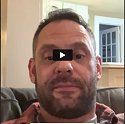
They make it so easy. They build credit. You get the money instantly and it’s easy to pay. What more could you say? Go ahead, do it. Get it done and see what happens. Great things.
Click here to see the full review.
Inspired by Garret’s great advice? Take the first step toward rebuilding your credit today!
Ready to rebuild your credit? Apply for the Yendo Credit Card now!

So, are you ready to get started? Calculate your credit utilization ratio today, explore credit cards for bad credit, and take the first step toward a better financial future. For more insights on Yendo, check out my detailed Yendo Credit Card review for 2025 or apply now.
Have you tried any of these strategies? Share your experience in the comments below—I’d love to hear your story!
Yendo Reviews 2025: Is the Yendo Credit Card Legit for Bad Credit?
Want to see the Yendo reviews on the credit card that people easily qualify for and depend on despite their bad credit? You’re not alone. In fact, many people face the challenge of finding a legit option that doesn’t require a perfect credit score.
Therefore, in this Yendo reviews guide for 2025, we’ll dive deep into the Yendo Credit Card to clarify whether it’s the right choice for rebuilding your credit. Specifically with a unique vehicle-secured approach, wherein Yendo offers up to $10,000 in credit with no credit check, but is Yendo legit, and can it truly help you?
To address this, we’ll firstly explore what users are saying. Secondly, we’ll break down how does Yendo work. Thirdly, we’ll compare it to other options on the market. In addition, whether you’re curious about its features, legitimacy, or fit for your financial needs, this comprehensive review has you covered.
So, without further ado, let’s get started and see if the Yendo Credit Card can be your path to better credit in 2025!
Disclosure: This post contains affiliate links, and I may earn a commission if you make a purchase at no extra cost to you. I only recommend products I thoroughly researched and trust.
What Is the Yendo Credit Card?
Undoubtedly, the Yendo Credit Card is a revolutionary financial tool designed to help individuals rebuild their credit, especially those with bad credit. Unlike traditional credit cards, Yendo operates as a vehicle-secured credit card, leveraging the equity in your car to provide access to credit without the usual barriers. Therefore, instead of requiring a cash deposit or a stellar credit score, Yendo uses your vehicle as collateral, allowing you to tap into its value for a credit line ranging from $450 to $10,000, with an average of $4,400..
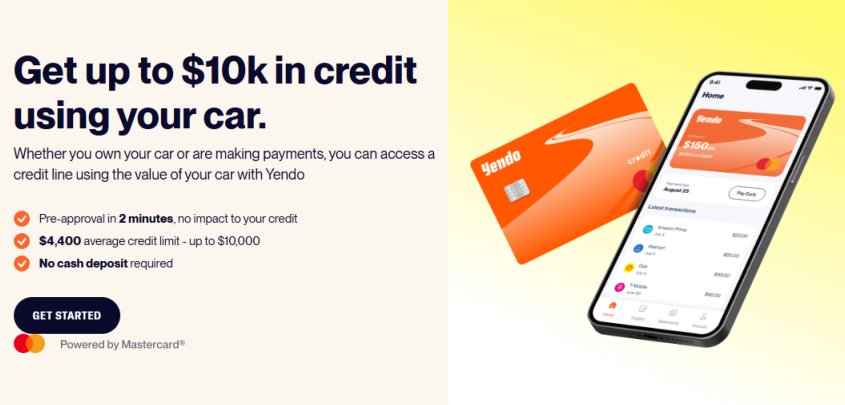
Moreover, this unique approach embraces a no credit check approval process. In fact, it focuses on the value of your car rather than solely your credit score, which ultimately makes it accessible to those turned away by conventional lenders.
Without a doubt, Yendo is ideal for people struggling with bad credit or those with no credit history who need a way to establish or improve their financial standing. And by reporting payments to major credit bureaus, it subsequently offers a practical path to credit rebuilding without the high fees or risks of title loans.
As a result, you retain full use of your car while benefiting from its equity, a feature that sets Yendo apart from traditional secured cards. So, whether you’re looking to pay off high-interest debt or build a positive credit profile, Yendo provides a flexible, innovative solution tailored to underserved borrowers.
What Is the Yendo Credit Card Game-Changing Approval Approach?
What truly makes Yendo stand out is its game-changing approval approach rooted in the company’s mission to “…offer affordable credit access to everyone”. In contrast to traditional lenders, Yendo doesn’t rely on your credit score to evaluate your application. Instead, it welcomes applicants of all credit backgrounds, as proudly stated on their home page: “All credit scores welcome to apply”. As a result, this inclusive philosophy ensures that more people can access the benefits of a credit card, making Yendo a ground-breaking option for those seeking a fresh start financially.
Moreover, to learn more about Yendo’s features and benefits, read our detailed blogpost titled: Yendo Credit Card: Best Vehicle-Secured Credit Card. This provides deeper insights into the card’s specifics.
Exactly what you’ve been looking for? Want to see the application process? Click on this link to visit Yendo.com and to see what they can do for you.
Curious about how it works or if it’s legit? Stay tuned as we explore further in this guide.
Yendo Credit Card Reviews: What Users Are Saying
Wondering what real users are saying about the Yendo Credit Card in 2025? Yendo credit card reviews in fact, showcase its appeal for those with bad credit, offering a lifeline through its innovative approach.
Yendo Reviews: Teresa
Teresa’s experience notably, stands out:
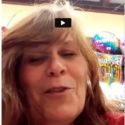
“I was able to pay off my high-interest credit cards… it really saved my life completely,” Click here to see the full review .
Her testimony highlighting how Yendo provides financial relief and debt management, specifically a game-changer for credit rebuilding. Her stress-free journey with Yendo’s easy process resonates with many users facing similar struggles.
Yendo Reviews: Vincent
In addition, the convenience and speed also shine in Yendo credit card reviews. Vincent noted:

“They approved me within a day, and I got my card within about a week or so… the overall experience has been pleasant, with no issues at all.” Click here to see the full review .
Yendo Reviews: Jose
Likewise, Jose echoed this, saying:

“I applied at 10 o’clock at night… the next morning my virtual card was activated… very quick, very easy,” Click here to see the full review .
In addition, praising the no credit check process that delivers fast funds—ideal for urgent needs like his trucking job.
Yendo Reviews: Melissa
Furthermore, Melissa added:

“The process was super fast, and they gave me part of the money up front… it was just so easy” Click here to see the full review .
Her words thereby reinforcing Yendo’s accessibility for bad credit users needing quick solutions.
To summarize, these glowing reviews position Yendo as a trusted option. But is Yendo legit, and how does it work behind the scenes? We’ll dive into those questions in the next section.
Want to Hear More Experiences and Yendo Reviews From Real Users?
Yes, these glowing reviews position Yendo as a trusted option in 2025. But is Yendo legit, and moreover, how does it work behind the scenes? We’ll dive into those questions next. If you’ve used Yendo, share your story below!
In truth, Yendo has helped countless people improve their financial situation with quick approval, credit-building features, and no cash deposit requirements. Check out more video and text reviews from satisfied Yendo customers to see how this card can benefit you.

Is Yendo Legit? Can You Trust This Credit Card?
With glowing Yendo credit card reviews praising its accessibility, a key question arises: is Yendo legit? For those with bad credit seeking a vehicle-secured credit card, trust is crucial, especially with a no credit check credit card using your car as collateral. For instance, Yendo, a fintech innovator, offers credit lines up to $10,000 via vehicle equity—a unique approach which, in turn, raises some skepticism. In fact, evidence confirms its legitimacy.
Firstly, Yendo is registered with the Better Business Bureau (BBB). Secondly, it recently secured a $165 million investment to fuel growth, as reported by Businesswire.com, signaling strong industry trust in its model. Moreover, user feedback shows initial doubt turning to trust after seamless experiences. For example, Joseph’s review states: “I kind of didn’t know if it was real… but I’m glad I did”—shows initial doubt turning to trust after a seamless experience.
Consequently, Yendo’s transparency about collateral terms and payment reporting to credit bureaus further builds confidence, ultimately helping credit card for bad credit users rebuild scores, unlike predatory title loans. For a deeper dive into addressing concerns about Yendo’s legitimacy, check out our post Is Yendo Credit Card a Scam? Addressing Your Concerns in 2025.
Want to hear more about Yendo’s legitimacy? Check out our video review below:
After watching, read on to learn how Yendo works or apply now .
Legitimacy, however, requires responsible use—missing payments risks repossession, a standard secured lending clause. Yendo’s quick approval and support, as reviews note, also affirm reliability. Still, research terms and consult an advisor before applying. So, is Yendo legit? Yes, with diligence of course.

Next, we’ll explore how does Yendo work. Additionally, please share your insights on Yendo’s legitimacy below…
How Does Yendo Work? A Step-by-Step Guide
After exploring Yendo credit card reviews and confirming is Yendo legit, let’s dive into how does Yendo work—a key question for bad credit users. Yendo, a vehicle-secured credit card, offers a no credit check credit card by leveraging your car’s equity, moreover, making it ideal for those denied traditional credit. Here’s the step-by-step process.
How Does Yendo Work: The Pre-Approval Process
First and foremost, Yendo’s standout feature is its fast and easy pre-approval process that takes just 2 minutes to complete. Consequently, this allows you to be pre-approved without any impact on your credit score. Specifically, this soft inquiry assesses your vehicle and personal details to determine eligibility, thus avoiding the credit hits of traditional applications. Then, once you’re pre-approved, apply online by submitting photos of your car and its title. After that, send your title via a secure service like FedEx, a step that activates your virtual card quickly. As Jose shared, “The next morning my virtual card was activated… very quick, very easy.” In fact, you can access your virtual credit card within 30 minutes, making Yendo a quick solution if you need fast credit.
How Does Yendo Work: The Post-Approval Process
Post-approval, you receive a physical credit card for bad credit with credit lines from $450 to $10,000, while, at the same time, retaining car use. Additionally, Yendo reports payments to credit bureaus, thereby aiding credit rebuilding, and offers a revolving line of credit—specifically, pay it down, and your limit refreshes. Furthermore, Susanna praised the support: “It’s easy to apply… they have the staff to assist you.” Moreover, timely payments are key to avoid collateral risks, typical for no credit check credit card products.
Ready to get started? Apply for the Yendo Credit Card today and see how much credit you can get based on your car’s value.
This streamlined process therefore underscores Yendo’s appeal in 2025. Next, we’ll compare it in Yendo vs. Other Vehicle-Secured Credit Cards. Share your application experience below…
Yendo vs. Other Vehicle-Secured Credit Cards
Wondering how Yendo stacks up against other vehicle-secured credit card options in 2025? For instance, Yendo reviews highlight its edge for bad credit users, but let’s compare it to alternatives like traditional title loans and secured cards to see why it’s a standout credit card for bad credit. Notably, Yendo’s no credit check process sets it apart, offering credit lines up to $10,000 by leveraging your car’s equity without impacting your score—a feature title loans can’t match, as they often involve high interest rates and repossession risks.
In contrast, (and unlike traditional secured cards requiring cash deposits), Yendo uses your vehicle as collateral, freeing up funds while you retain car use. As a result, the table below highlights key differences:
| Feature | Yendo | Traditional Secured Cards |
|---|---|---|
| Collateral | Your car’s equity | Cash deposit |
| Credit Limit | $450 – $10,000 based on car value | Usually equal to deposit amount |
| Upfront Cost | No cash deposit required | Cash deposit required $200+ |
| Annual Fee | $40 | Varies (some have no annual fee) |
In fact, Yendo also outshines title loans. Moreover, as Wendy noted: “It is so much better than any title loan… the interest rate is reasonable.” Importantly, the table below shows Yendo’s lower APR and flexible terms:
| Feature | Yendo Credit Card | Car Title Loans |
|---|---|---|
| Annual Percentage Rate (APR) | 29.88% | Approximately 300% |
| Monthly Interest Rate | 2.49% | Around 25% |
| Typical Loan Fees | Low to none | High origination, service, and processing fees |
| Interest Accumulation | Based only on outstanding balance | High accrual rates, rapid debt growth |
| Repayment Flexibility | Revolving line; carry balance month-to-month | Full repayment often required quickly, risk of repeated borrowing |
| Early Repayment Penalties | None | Some lenders may charge prepayment penalties |
Yendo vs. Title Loans: Cost and Terms Comparison
Yendo, of course, reports payments to credit bureaus, thereby, aiding credit rebuilding, unlike many title loans. Specifically, its 2-minute pre-approval and 30-minute virtual card access (see how does Yendo work) add speed, which is further backed by a $165 million investment (confirming is yendo legit). For a broader comparison with other no credit check credit cards, check out our guide on comparing Yendo to other no credit check credit cards in 2025.
Now, given these advantages, Yendo undoubtedly stands out as the best choice for bad credit users. To experience these benefits, apply for the Yendo Credit Card today.
Next, explore Key Features of the Yendo Credit Card. Share your thoughts below…
Why Choose the Yendo Credit Card in 2025?
After diving into Yendo reviews, confirming is Yendo legit, and understanding how does Yendo work, why should you choose Yendo in 2025? Because, this vehicle-secured credit card offers unmatched benefits to people with bad credit. Specifically, its no credit check process, 2-minute pre-approval, and 30-minute virtual card access make it a fast credit card for bad credit, as seen in Yendo credit card reviews. Moreover, credit lines up to $10,000, based on your car’s equity, provide flexibility without cash deposits, while payment reporting helps rebuild your credit. For a step-by-step guide on improving your credit with tools like Yendo, see our post How to Improve Your Bad Credit Score in 2025.
In addition, a standout reason is the cost savings. Yendo’s APR of 29.88% is significantly lower than title loans’ rates, which can exceed 300%. Use the calculator below to see your savings, and learn more about managing credit utilization in our guide How to Use a Credit Card Usage Calculator to Boost Your Credit Score.
Savings Calculator:
See How Much You Can Save With Yendo
Repayment Summary
| Loan Provider | APR (%) | Time Period | Total Repayment ($) |
|---|---|---|---|
| Yendo | 29.88% | ||
| Title Loan | 125.99% | ||
| Title Loan | 165.99% | ||
| Title Loan | 229.99% | ||
| Title Loan | 302.99% |
**Annual Percentage Rates (APR) and terms sourced from the AmericanTitleLoan.com website.**
This interactive tool shows how Yendo’s no credit check credit card saves you money over time, consequently, a key advantage over alternatives (see Yendo vs. Other Vehicle-Secured Credit Cards). For example, Teresa’s story—“I was able to pay off my high-interest credit cards… it really saved my life”—highlights the financial relief Yendo provides. Moreover, its $165 million investment underscores industry trust, making it a reliable choice for 2025.
Furthermore, Yendo’s generous limits make it a strong choice for anyone wanting to maximize their available credit. Therefore, go ahead and give it a try. Click on the link to see how high your credit line can go with Yendo.
In addition, Yendo combines speed, affordability, and credit-building potential, making it a top pick for those needing accessible credit. So, are you ready to apply? Explore Yendo’s website for more details, or alternatively, please share your experience below to join the conversation...
Frequently Asked Questions About The Yendo Credit Card
What are Yendo credit card reviews saying in 2025?
Users praise Yendo for its accessibility and benefits for bad credit, with no credit check approval. Learn more in our Yendo Credit Card Reviews section.
Is Yendo legit for a vehicle-secured credit card?
Yes, Yendo is registered with the BBB and backed by a $165 million investment, confirming its legitimacy. Check details in our Is Yendo Legit? section.
How does Yendo work as a no credit check credit card?
Yendo uses your car’s equity for a fast 2-minute pre-approval and 30-minute virtual card access. Explore the step-by-step guide in our How Does Yendo Work? section.
How does Yendo compare to other vehicle-secured credit cards?
Yendo offers higher limits and no cash deposits compared to traditional secured cards, plus lower APRs than title loans. See the comparison in our Yendo vs. Other Vehicle-Secured Credit Cards section.
Why should I choose the Yendo credit card in 2025?
Yendo provides cost savings, credit-building, and fast approval, making it ideal for bad credit users. Calculate your savings and learn more in our Why Choose the Yendo Credit Card in 2025? section.
What is the Yendo credit card and how can it help?
Yendo is a vehicle-secured credit card offering up to $10K with no credit check, helping bad credit users rebuild credit. Get started in our What Is the Yendo Credit Card? section.
Looking For Other Credit Card Options?
Are you looking for other credit card options? Check out our comprehensive credit card guide for young adults. It provides a detailed guide on selecting the best credit cards for young adults, emphasizing options that help build credit, offer cash back or rewards, and have low fees. For more options tailored to bad credit, see our post Best Credit Cards for Young Adults with Bad Credit in 2025. These resources highlight the best cards, detailing their pros and cons, what to look for in a credit card, budgeting tips, security features, and the impact of credit cards on credit scores to help you make informed financial decisions.
NO CREDIT CHECK! Fast Pre-Approval! See How Thousands Are Using Their Car to get Up To $10K
Disclosure: This post contains affiliate links, and I may earn a commission if you make a purchase at no extra cost to you. I only recommend products I thoroughly researched and trust.
Bad credit? No credit? No problem.
Use your car’s value to unlock a credit line up to $10,000.
No hard credit check required.
Rebuild your credit and get the financial freedom you deserve.
If you’ve been denied for credit cards or loans because of your credit score, you’re not alone. Millions of Americans face the same struggle every day. But what if your car could be the key to unlocking the credit you need – without the stress of rejection or high interest loans? With a Yendo Credit Card, it can. And the best part? It only takes a few minutes to find out how much your car could unlock for you.
Want to learn more about the Yendo Credit Card and what people are saying about it? Read our comprehensive Yendo Reviews 2025: Is the Yendo Credit Card Legit for Bad Credit?
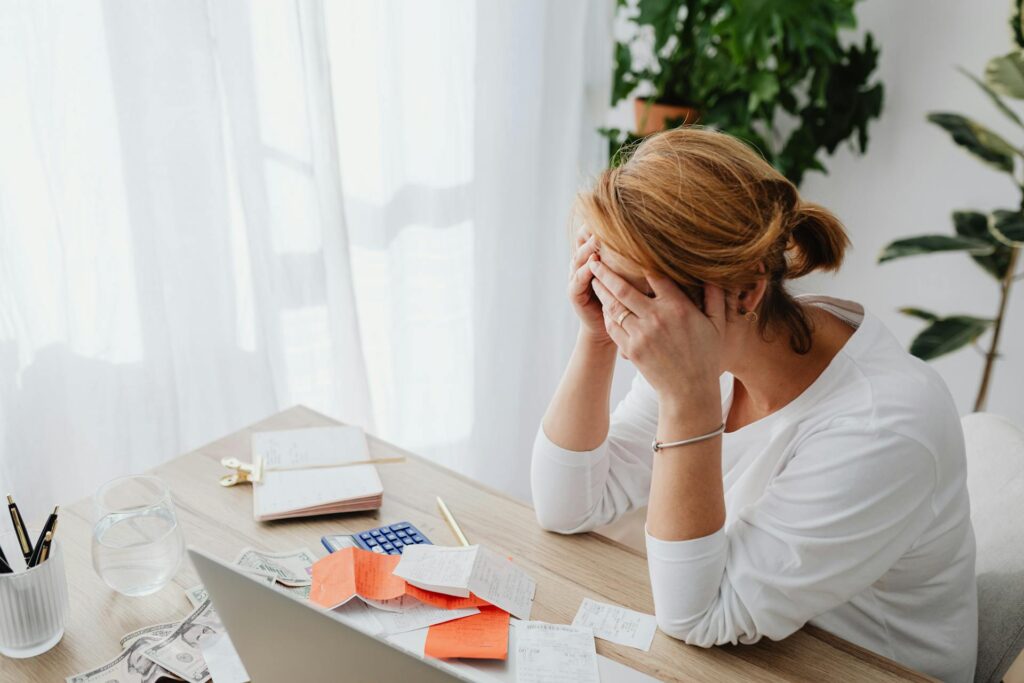
Are you:
Tired of being turned down for credit cards because of your credit score?
Struggling to find a way to rebuild your credit without sky high fees?
Worried about wasting time on applications that lead nowhere?
Do you:
Need emergency funds but don’t want to risk losing your car?
But what if there was a way to turn your car’s value into the credit you need – without the stress of rejection or high-interest loans?
Curious how much your car could be worth? Use our easy tool to estimate your equity and potential credit limit in seconds!
How Much Credit Could Your Car Unlock? Check Now and Get Up To $10K!
Evaluation Result:
Disclaimer: This tool provides an estimated value based on the inputs provided. Actual market value may vary.
Click on this link to go to Yendo, where you can get an exact valuation of your vehicle’s borrowing power and learn about the Yendo Credit Card .

Let Yendo Turn Your Car Into a Financial Lifeline!
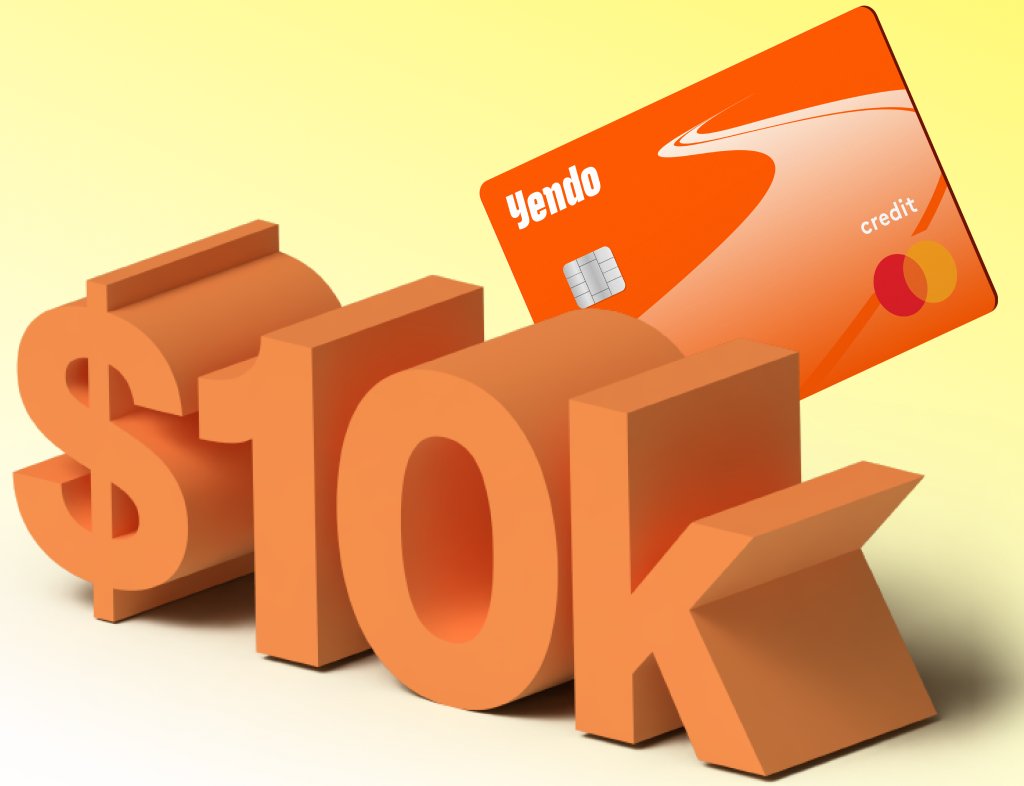
The Yendo Credit Card is different.
Instead of relying on your credit score, it uses the equity in your car to secure a credit line up to $10,000.
No hard credit check.
No rejection.
Just fast, affordable access to the funds you need - while keeping your car and rebuilding your credit.
Want to learn more about Yendo before applying? Check out my Yendo reviews for 2025.
Get Your Credit Line in 3 Easy Steps—No Paperwork, No Waiting
“Worried it’ll take weeks or require stacks of documents? With Yendo, it’s faster and easier than you think. Here’s how it works:
✅ No appointments ✅ No credit score required ✅ Keep driving your car
🔍 1. Check Your Car’s Equity
“See how much your car is worth in seconds—no commitment.”
📝 2. Apply Online
“Fill out a quick application with no hard credit check.”
✅ 3. Get Approved
“Receive a credit line up to 80% of your car’s value.”
💳 4. Use Your Card
“Shop, pay bills, or handle emergencies—anywhere Visa® is accepted.”
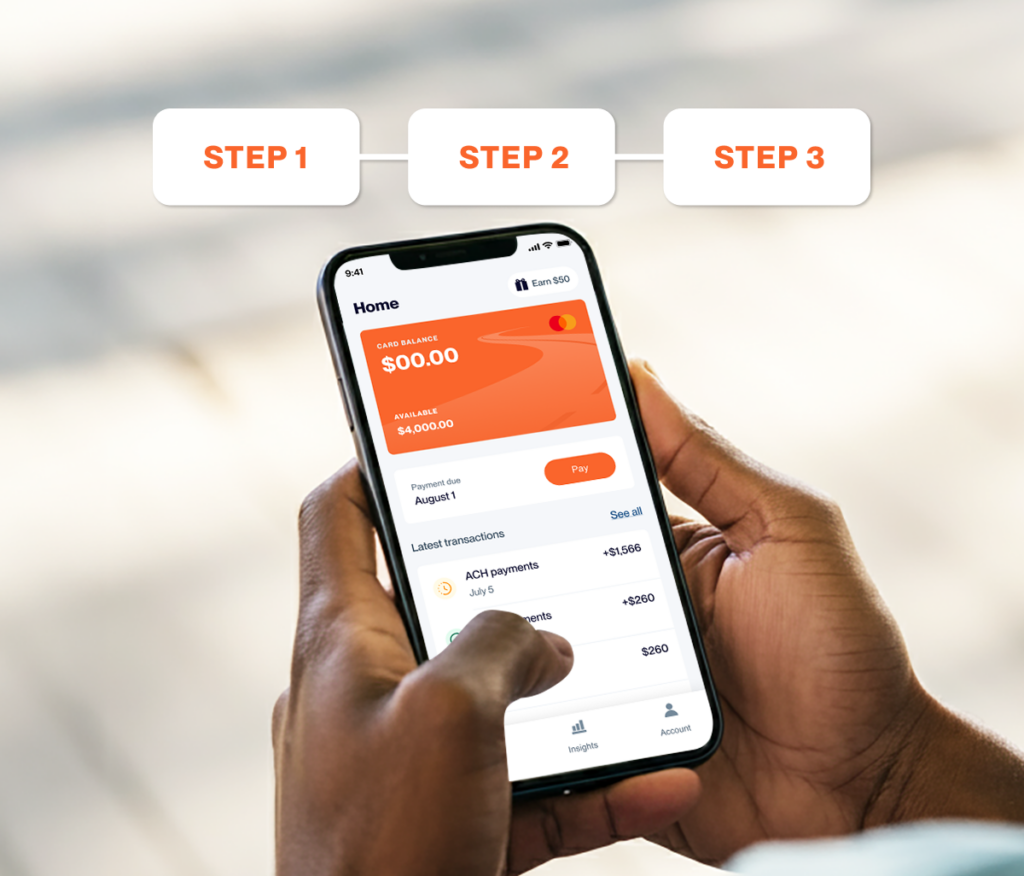
Ready to get started?
Check your eligibility now - it’s fast, free, and won’t affect your credit score!
Yendo Just Raised $165 Million - Join Thousands Already Securing Their Financial Freedom
Yendo’s innovative approach has attracted $165 million in funding from top investors, fueling its mission to help car owners like you unlock financial freedom. With rapid growth and thousands already benefiting, Yendo is expanding access to even more people.
Don’t miss your chance to be part of this growing movement. Apply today before demand surges and approval criteria tighten!
Click Here To: → Check Your Eligibility Now
Act Now Because Spots Are Limited!
Yendo is currently available in 38 states, and spots are filling up fast. Apply now to secure your place before eligibility changes!
Did you know that early applicants may be more likely to qualify for higher credit limits with the Yendo Credit Card as Yendo grows. Don’t wait—your car’s value could unlock even more opportunities!
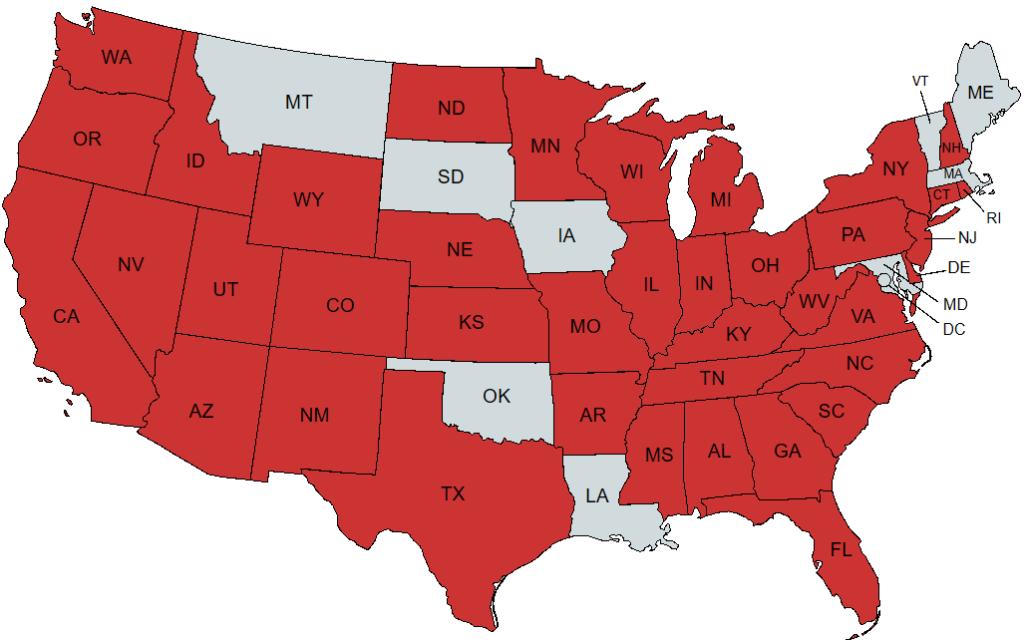
Available States:
Alabama, Arizona, Arkansas, California, Colorado, Connecticut, Delaware, Florida, Georgia, Idaho, Illinois, Indiana, Kansas, Kentucky, Michigan, Mississippi, Missouri, Montana, Nebraska, Nevada, New Hampshire, New Jersey, New Mexico, New York, North Carolina, North Dakota, Ohio, Oregon, Pennsylvania, Rhode Island, South Carolina, Tennessee, Texas, Utah, Virginia, Washington, West Virginia, Wisconsin, Wyoming.
Don’t wait—Check Your Eligibility Today!
Join Thousands Who’ve Transformed Their Finances with Yendo
You’re not alone. Thousands of people just like you—facing bad credit, no credit, or financial emergencies—have turned to Yendo to unlock the credit they need. And they’re not just getting approved; they’re rebuilding their credit, paying off debt, and taking control of their financial futures.
Here’s what some of them have to say:

"...it's been a great opportunity for me to build some credit, as well as pay some bills"- Jason
Click here to see the full review.

"I love the fact that I can make payments through Apple Pay. I can make payments through my bank accounts, and it’s very convenient. "- Khary
Click here to see the full review.
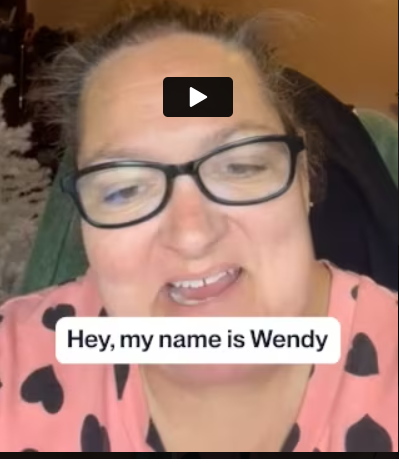
"It was super easy, you can do everything online, on the app, on your phone." - Wendy
Click here to see the full review.
The Yendo Credit Card has helped countless people improve their financial situation with quick approval, credit-building features, and no cash deposit requirements. Check out more Yendo reviews from satisfied customers to see how this card can benefit you.
Your Questions, Answered
We know trying something new can feel overwhelming, especially when it comes to your finances. That’s why we’ve included the most common questions about the Yendo Credit Card and Yendo reviews to put your mind at ease. Whether you’re worried about payments, building credit, or keeping your car, we’ve got you covered.
Here’s everything you need to know:
Yendo Credit Card FAQs
Want to learn more about the Yendo Credit Card’s features and benefits? Check out our in-depth review: Yendo Credit Card: Best Vehicle Secured Credit Card.
Ready to Take Control of Your Finances?
Check your eligibility now—it’s fast, free, and won’t affect your credit score! Here’s how easy it is to get started:
[Get Started]: → Check Your Eligibility Now
Early Applicants and the Best Benefits
Did you know? Early applicants may be more likely to qualify for higher credit limits as Yendo grows. By applying now, you’re not just securing a credit line—you’re positioning yourself for future financial flexibility. Don’t wait—your car’s value could unlock even more opportunities!

The types of vehicles allowed to apply include:
- Card
- Light Duty Trucks
- vans
- Sport Utility Vehicles (SUVs)
Click Here To: → Secure Your Position Today
Don’t Let Bad Credit Hold You Back
Use your car’s value to unlock the financial freedom you deserve with the Yendo Credit Card. Apply now—it only takes 2 minutes!
Apply Now & Check Your Eligibility
Use Your Car’s Value to Unlock The Financial Freedom You Deserve.
Remember, pre-approval takes just 2 minutes and won’t affect your credit score. Don’t wait—your car could be the key to a brighter financial future.

Yendo Credit Card: Best Vehicle Secured Credit Card ($4,400 average credit limit – up to $10,000)
Disclosure: This post contains affiliate links, and I may earn a commission if you make a purchase at no extra cost to you. I only recommend products I thoroughly researched and trust.
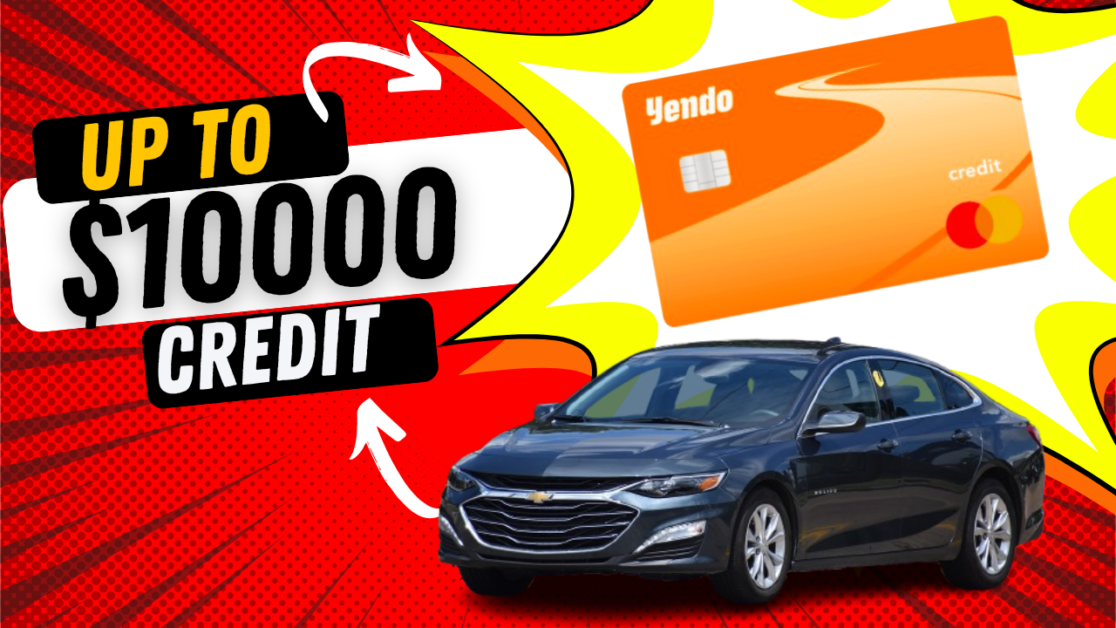
Looking for a credit card that offers high limits and affordable rates, even if you have bad credit or limited funds? The Yendo Credit Card is the first credit card that uses your vehicle’s equity to secure higher limits at better rates and terms than traditional title loans or secured credit cards. Yendo Credit Cards have credit lines ranging from $450 up to $10,000, with the average being $4,400 in available credit. By far, it’s designed to be the best credit card to rebuild credit with. As one of the top rebuilding credit cards with no deposit, it provides a unique solution for those looking to improve their credit without needing an upfront cash deposit.
To see what real users are saying about their experiences with Yendo, check out our comprehensive Yendo Reviews for 2025.

Title loans and secured credit cards require excessive fees, taking possession of your vehicle, a large upfront security deposit and a good credit score.
Yendo eliminates the need for excessive fees and allows you to keep using your car while leveraging its equity to secure credit.
For those struggling with a bad credit score, Yendo’s innovative approval approach is a a game-changer because it looks at several criteria, instead of your credit score.
This creates a faster, more “accessible-to-all” method for obtaining approval and beginning to build or rebuild credit.
Side Note: According to the NerdWallet article 5 Things to Know About the Yendo Credit Card, “The Yendo card isn’t the only asset-secured credit card on the market, but it may be one of the only ones specifically tailored for automobile owners.“
In this post, we’ll explore what Yendo is, how it works, its key features, and why it’s a smarter alternative to high-fee title loans and traditional secured cards for building or rebuilding your credit.
What is a Vehicle Secured Credit Card ?
A vehicle secured credit card is a type of credit line that uses the equity in your car to secure a higher credit limit, offering an alternative to traditional secured credit cards, which usually require a cash deposit. This approach leverages the value of an asset you already own your vehicle allowing you to access a credit line without needing to tie up cash or make an upfront payment.
The Yendo Credit Card is a vehicle secured credit card. It’s unique in this way by using your vehicle as collateral so it can offer higher credit limits and lower fees than typical secured cards. Importantly, you retain full ownership and use of your car while benefiting from its value as financial backing for the card.
With a vehicle secured credit card, you gain the flexibility of a regular credit card along with the opportunity to build or rebuild your credit, as payments are reported to the major credit bureaus. This makes it especially beneficial for those with less-than-perfect credit looking for an accessible way to establish or improve their credit history.
This video sums it up well…
Key Benefits of the Yendo Credit Card
- Your Vehicle’s Built-Up Equity as a Financial Lifeline: Instant access to the value of your car when you need money fast.
- High Credit Limit Credit Card: Ranging from $450 to $10,000, (with an average of $4,400) depending on your car’s value.
- Game-Changing Approval Approach: An approval process based on criteria and not your credit score.
- Fast Pre-Approval Process: Get pre-approved in 2 minutes with no impact on your credit score.
- Instant Access to Credit: Get instant credit access with your virtual credit card within minutes of your approval.
- No Cash Deposit Required: Rebuilding credit cards with no deposit use your car’s value instead of a cash deposit.
- Low Interest Rate: APR of 29.88%, far lower than typical title loan rates, which can reach up to 300%.
- Fast Cash Advance: Offers fast cash advances, allowing you to access funds quickly when needed.
- Customer Vehicle Ownership Mindset: Keep full ownership of your car while leveraging its equity.
- Credit Building: Reports to Experian, Equifax, and TransUnion, helping you build credit.
- Drastically Lower Your Monthly Payments: Pay $306 per month less by refinancing your car loan.
- Multiple Payment Options: Including bank transfers, online payments, and traditional methods like mailing checks and cash payments.

This Yendo customer was so appreciative of how Yendo helped her that she was quoted as saying: “[Yendo]…saved my life literally. I was able to pay off my high interest credit cards. “ Click here to see the full review.
Ready to take advantage of these great key benefits? Click here to start with Yendo today.
Using Your Built-Up Vehicle Equity as a Financial Lifeline
If you need money right away but don’t have cash on hand or available credit, Yendo allows you to tap into your built-up vehicle equity to immediately access the necessary funds. This is the value of your car that you’ve earned as you pay down your loan and your car retains or increases its worth. This provides a financial lifeline, giving you quick access to cash while keeping your car, allowing you to continue using it as normal. In a nut shell this approach helps you:
1.Leverage your vehicle’s worth for credit
2.Access necessary funds quickly
3.Keep and use your car as normal
4.Avoid the hassle of selling your vehicle
5.Tap into a financial lifeline when traditional options are limited

It’s an efficient and practical solution for people who need access to money quickly and need to keep their car as well.
Information on using your car’s equity, and ownership can be found and verified on Yendo’s how it works page, and FAQ page.
Yendo: The High Credit Limit Credit Card ($450 – $10,000)

The Yendo credit card is considered a high credit limit credit card because it offers credit limits between $450 and $10,000 with an average of $4,400 in credit. This is based on the make, model, mileage, condition of your vehicle, ownership status as well as your ability to make timely repayments. (Many secured credit cards offer only $200-$5000).
The types of vehicles allowed to apply include:
1.Cars
2.Light Duty Trucks
3.Vans
4.Sport Utility Vehicles (SUVs)
The vehicle itself must be 1996 or newer and be in working condition. Each credit line permits one vehicle. You must either own the vehicle outright or have sufficient equity in it. This service is also available to people who are still making payments on their vehicles.
Full details on vehicle eligibility, credit limits, and application criteria can be found and verified on Yendo’s FAQ page.

Vincent, a Yendo customer, was amazed at how high of a credit limit he received. He was quoted as saying: “My experience with them has been really good. I would highly recommend them. The credit limit is high.” Click here to see the full review.
Yendo’s generous limits make it a strong choice for anyone wanting to maximize their available credit. Give it a try. Click on the link to see how high your credit line can go with Yendo.
Game-Changing Approval Approach
Yendo’s has a adopted game-changing approval approach when it comes to evaluating you as an applicant. The reason behind this is the company’s mission. Yendo’s mission “…is to offer affordable credit access to everyone”. They do not consider your credit score when evaluating your application for a credit card and all the benefits that come with it. It’s even displayed on their home page: “All credit scores welcome to apply”. It’s a more “accessible-to-all” way to get approved. They look at:
Your Vehicle’s:
- Make: Your car’s manufacturer: (Honda, Toyota, Ford, etc).
- Model: You car’s model: (Honda Accord, Toyota Corolla, etc).
- Year: The production year of your car.
- Mileage: The number of miles you have driven your car.
- Condition: The physical condition of your car including any wear and tear or damage.
- Equity: The difference between your car’s market value and any outstanding loans you still owe on it.
- Status of Ownership: If you own your car or have sufficient equity in it. This service also for people who are still making payments on their cars.
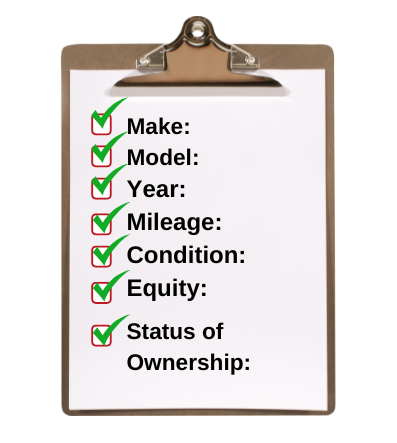
Your Credit History
Yendo reviews your credit history, and not your credit score. In your credit history they are looking for patterns of responsible financial behavior. Things like:
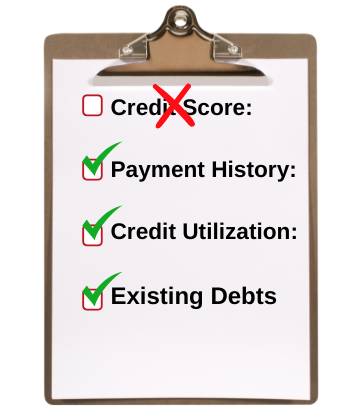
- Payment History: If you have been making your credit card payments on time.
- Credit Utilization: What percentage of your available credit you are using.
- Existing Debts: If you have a significant amount of outstanding debt or not.
Yendo typically approve people who have a pattern of being responsible financially, even if their credit score is not the greatest. This allows them to offer credit options to people whom other credit card companies may not consider.
Your Income and Expense Ratio
Yendo looks at your income and expenses to make sure you can handle the new payments without struggling. They want to confirm that your income is enough to cover your current bills and any payments for the Yendo card, so you don’t end up with more debt than you can manage.
Vehicle details, credit history information and income and expense can be found and verified on Yendo’s vehicle ID page, and the how-it-works page.

Candice, a Yendo customer, explains that her application was approved. She was quoted as saying: “…my credit was not the best and nobody else could give me a loan…But [with Yendo] I did get approved for it. “ Click here to see the full review.
Need some financial help, but you have less than perfect credit? Click here to get started with Yendo today!
Fast Pre-Approval Process
The Yendo credit card offers a fast and easy pre-approval process that takes just 2 minutes to complete, allowing you to be pre-approved without any impact on your credit score. This means that Yendo conducts a soft inquiry, which does not affect your credit rating. During pre-approval, Yendo assesses basic details about your vehicle and personal information to determine if you qualify for further steps.
This streamlined process provides users with immediate feedback and allows them to quickly move forward with their application, avoiding the long wait times and potential credit score hits typically associated with traditional credit card applications. Once approved, you can access your virtual credit card within 30 minutes, making Yendo a quick solution if you need fast credit.
Approval time and process details can be found and verified on Yendo’s home page, the how it works page, and the get pre-approved enrollment page.
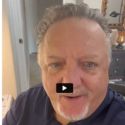
This Yendo customer was very impressed with the speed of Yendo’s pre-approval and approval process. He was quoted as saying: “…in minutes I had my available credit sent to me…and I don’t even have a card yet…” Click here to see the full review.
Want quick access to your available credit? Click here to get started with Yendo today!
Your Virtual Card Provides Instant Access to Your Credit
Yendo’s virtual credit card offers several key advantages. Here are the ones I’ve found to be the most useful:
Instant Access To Your Money
You’ll gain instant access to a portion of your credit line with a virtual credit card that Yendo will assign to you about an hour after you complete your application and mail in your title. You can use your virtual credit card to access your credit and start making purchases immediately. You can use it online or with Apple Pay, Samsung Pay, or even Google Pay. The company will send your physical credit card to you by mail in about 3-7 days after that.
Extra Layer of Protection
The virtual card adds an extra layer of protection against fraud. It does this by assigning the card a temporary and unique card number instead of your actual credit card number. In this way you wont be sharing your actual credit card number when making purchases, . This is especially useful for online transactions where data breaches can be a concern.
Seamless Mobile Integration
Yendo integrates its virtual card with their mobile app, enabling you to manage your accounts properly, track and better control your spending, and make payments on the go, no matter where you are.
- Manage your account: At any time, you can log in review your account balance. You can see your most recent transactions, and track your overall credit usage in real time. This allows you to better control your finances.
- Track your spending: The Yendo app is set up to track your spending habits. This is a huge help when trying to build or rebuild your credit. If you know where your money is going, you are in a better position to stay on budget.
- Make payments on the go: The mobile app, makes the payment process super simple. As easy as accessing your phone. Whatever the payment, the apps makes the process efficient and effortless. It can be done anytime, anywhere, without the hassle of visiting your bank or having logging in to your computer.
This intergration offers a major benefit for users who require quick, secure and convenient access to their funds at any time and from any location.
Yendo’s vertual credit card key advantages can be found and verified on the Yendo vitual credit card page, the credit building page and the app page.

Melissa, a Yendo customer, was amazed at how quickly she got her money. She was quoted as saying: “The process was super fast, and they gave me part of the money upfront until they got my title, and then I got the rest of the money…” Click here to see the full review.
Want instant access to your credit? Click here to get started with Yendo today!
Rebuilding Credit Cards with No Deposit: Yendo vs. Traditional Secured Credit Cards
How Yendo Works:
Instead of requiring a traditional cash deposit, Yendo is one of the top rebuilding credit cards with no deposit required. It uses the equity in your vehicle as collateral to secure your credit line. This allows you to access a higher credit limit without needing to put down any upfront money, offering financial flexibility even if you don’t have liquid funds readily available.
Yendo prides itself on providing customers with this flexibility, offering a reliable safety net to fall back on when needed. By leveraging your car’s value, Yendo ensures a more accessible and secure solution compared to cash-secured cards, allowing you to retain your savings while still accessing the credit you need.
Traditional Secured Credit Cards:
In contrast, most secured credit cards require a cash deposit that typically becomes your credit limit. For example:
- The deposit amount often ranges from $200 or higher
- Your credit limit usually equals your deposit amount
- The deposit is held as collateral and may be refundable if you close the account in good standing or upgrade to an unsecured card
Key Differences: Yendo VS Traditional Secured Cards
| Feature | Yendo | Traditional Secured Cards |
|---|---|---|
| Collateral | Your car’s equity | Cash deposit |
| Credit Limit | $450 – $10,000 based on car value | Usually equal to deposit amount |
| Upfront Cost | No cash deposit required | Cash deposit required $200 + |
| Annual Fee | $40 | Varies (some have no annual fee) |
Side Note: It’s important to note that the Yendo credit card requires a $40 annual fee. Most traditional secured card do not.
The no cash deposit and vehicle equity key points can be found and verified on the Yendo getting started page. The Traditional Secured Credit Cards key points acan be found and verified in the Credit Karma article titled: How a secured card deposit relates to your credit line.
Low Interest Rate and Flexible Terms Compared to Title Loans
The Yendo Credit Card offers a more sustainable and affordable credit option with a fixed Annual Percentage Rate (APR) of 29.88%. This translates into a manageable monthly interest rate of just 2.49%. Traditional title loans can reach APRs of up to 300%. This can translate into very high monthly interst rates of 25%. Historically, title loans often come with hidden fees like origination or service fees. Yendo doesn’ do that. It provides a clear, straightforward cost structure.
Additionally, Yendo allows flexible repayment without the need for frequent loan renewals and has no prepayment penalties This allows users to pay down their balance faster if they choose. In a nutshell, this makes Yendo an attractive alternative for people looking to access credit using their vehicle’s equity without being subjected to the high costs associated with title loans.
The table below highlights how Yendo’s low interest rate and flexible credit terms stand out against the high costs and restrictive conditions often associated with title loans.
| Feature | Yendo Credit Card | Car Title Loans |
|---|---|---|
| Annual Percentage Rate (APR) | 29.88% | Approximately 300% |
| Monthly Interest Rate | 2.49% | Around 25% |
| Typical Loan Fees | Low to none | High origination, service, and processing fees |
| Interest Accumulation | Based only on outstanding balance | High accrual rates, rapid debt growth |
| Repayment Flexibility | Revolving line; carry balance month-to-month | Full repayment often required quickly, risk of repeated borrowing |
| Early Repayment Penalties | None | Some lenders may charge prepayment penalties |
Note: Title loan APRs and fees vary widely, often leading to debt traps for borrowers due to repeated loan renewals and high-interest rates.
Side Note: According to the AOL article Exclusive: Fintech Yendo has raised $150 million in debt and $15 million in equity, Jordan Miller, the founder of Yendo, was quoted as saying, “…Yendo offers a fixed APR of 29.88%, which is designed to help subprime consumers access credit at a lower, more predictable rate compared to traditional title loans, where rates can soar.”

Mela was very impressed by Yendo’s low interest rate. She was quoted as saying… “.. the interest rate worked great for our budget.” Click here to see the full review.
Looking for a low interest rate? Click here to get started with Yendo today!
Try Our Saving Calculator and Calculate Your Savings With Yendo
If you’re looking for a high credit limit credit card without the need for a deposit, the Yendo Credit Card might be the perfect fit. This vehicle secured credit card provides competitive rates compared to traditional title loans, making it a smart choice for rebuilding credit affordably.
Our Savings Calculator compares Yendo’s competitive 29.98% APR against traditional title loans with rates soaring up to 302.99% APR. You can easily see the total repayment amount and exactly how much money you can save with Yendo.
Simply enter the amount you’d like to borrow and select your loan period to reveal the difference—it’s shocking! Go ahead, try it now and discover why Yendo reviews consistently highlight this card as a top choice for credit building with no deposit required.
Savings Calculator:
See How Much You Can Save With Yendo
Repayment Summary
| Loan Provider | APR (%) | Time Period | Total Repayment ($) |
|---|---|---|---|
| Yendo | 29.98% | ||
| Title Loan | 125.99% | ||
| Title Loan | 165.99% | ||
| Title Loan | 229.99% | ||
| Title Loan | 302.99% |
**Annual Percentage Rates (APR) and terms sourced from the AmericanTitleLoan.com website.**
Like the results? Ready to save with a more affordable credit option? Start your application with Yendo now!
Yendo's interest rate compared to a traditional title loans interest rate can be found and verified on the Yendo home page.
Fast Cash Advance
The Yendo credit card offers fast cash advances as a quick and convenient way to access funds when you need them. You have a daily limit of up to $400 and you can withdraw up to 50% of your total credit limit, Yendo allows cardholders to tap into their available credit for emergency cash. Keep in mind that cash advances incur a 3% fee.
Interest starts accruing immediately at a fixed APR of 29.88%. It's important to repay these advances as soon as possible to avoid accumulating high costs.
Yendo's cash advance details can be found and verified on the Yendo cash advance page.
Yendo's Customer Vehicle Ownership Mindset vs. The Title Loan Mindset
When comparing Yendo’s approach to a vehicle secured credit card with traditional title loans, the priorities and values of each become clear. This contrast highlights a difference in how customer needs and financial stability are viewed. Below, we’ll explore how Yendo and title loans address vehicle ownership and borrower support.
Yendo Prioritizes You
The Yendo's mindset is to support of your as much as possible and to make sure that you remain the owner of your vehicle. They prioritizes you. How do I know this? Because in their FAQ section "If I miss a payment, do I lose my car?" it clearly states:
"No. If you miss a payment or pay late, you will not lose your car. We exist to help people get ahead financially, and we want to support you as much as we can. If you can't make your payments, give us a call so we can work with you".
This is not the case with title loans.
Title Loans Prioritize the Lender
The title loan mindset and structure prioritizes the lender’s ability to recover their money over the borrower’s financial well-being. In this article titled "Car Title Loans: What You Need To Know", the Lending Tree explains that title loans carry high interest rates and fees, with lenders often allowing loans to roll over repeatedly, which traps borrowers in debt cycles. This shows that the system is built to extract as much repayment as possible, even at the borrower’s expense.
To provide further proof please view this article in the MilitaryTimes.com that discusses a significant settlement involving a title loan company that has been accused of engaging in illegal lending practices targeting military families.
The scope of unlawful and overcharging practices of some Title Loan companies can also be found and verified in the same article but posted on the Consumer Financial Protection Bureau's website: CFPB Orders TitleMax to Pay a $10 Million Penalty for Unlawful Title Loans and Overcharging Military Families.
It's important to understand that the key difference between Yendo’s mindset and a traditional title loan lies in the level of risk and purpose of the lien. (Click here to access the article "What is a lien on a car?").
Purpose of the Lien
In a traditional title loan, the lien is placed on your car as collateral specifically for the purpose of securing a loan, and if you default on the payments, the lender can take possession of your vehicle.
With Yendo, the lien is placed to secure a credit line (not a lump-sum loan) based on your vehicle’s equity. The main goal is to help you build credit, rather than simply providing short-term cash like with a title loan.
Risk of Repossession
Traditional title loans are high-risk because if you miss payments, the lender can repossess your car, as they hold the lien to secure their money.
Yendo does not operate in the same way. While they hold a lien on your vehicle, they don’t focus on repossessing the car as the first course of action if payments are missed. Their model is more geared toward improving your credit, offering a secured credit line where you still retain possession of the vehicle, even during the repayment period, as long as you maintain good standing.
As proof of this, Nerdwallet wrote in one of their articles that according to that an email statement from Yendo founder and CEO Jordan Miller, repossession is only considered after all other recovery options have been tried and exhausted. He also clarified that a single missed payment will not trigger repossession as long as customers communicate to Yendo about their financial challenges.
You can view the statement in the article here: 5 Things to Know About the Yendo Credit Card
Ownership
In the FAQ section of the Yendo website, for the question "Will this affect the ownership of my car?" Yendo states:
"No. Even though we become a lienholder on your title, your car remains in your possession, and you will remain listed as the owner.".
In both Yendo’s model and a traditional title loan, the vehicle owner retains legal ownership of the car, but in a title loan, missing payments leads to a higher risk of losing that ownership through repossession.
If flexibility is key for you, Yendo’s model allows you to keep using your vehicle while benefiting from its equity. Start with Yendo here to unlock that hidden value without giving up access to your car.
The Lien Release Process
This is difference between how a title loan company releases the lien on your vehicle and how and Yendo releases the lien:
The Title Loan Lien Release Process
In a traditional title loan, the lien on your car is only released after you repay the entire loan, including any accrued interest and fees. This process can often be costly and challenging, especially because title loans typically come with high-interest rates. If payments aren’t made, the lender has the legal right to repossess the vehicle as soon as there is a default, putting the borrower’s ownership at great risk. (You can read more about it here in this article by Investopedia titled "How to Get the Title After Paying Off a Car Loan".)
The Yendo Lien Release Process
Yendo’s approach is different as it operates more like a credit card than a title loan. With Yendo, once you fully pay off any outstanding balance and close the account, the lien is removed, and your vehicle title is returned. Since Yendo provides a revolving line of credit rather than a one-time loan, it places a lien to secure the credit line rather than setting terms that could lead directly to repossession. Their focus is on credit building, and they emphasize that repossession is a last resort, making it safer in terms of retaining ownership during financial hardships.
Their process was structured this way because their focus is on helping users build credit rather than taking possession of the vehicle. You can verify and read about it here on Yendo's website in the article titled "How to Obtain Your Vehicle Title After Closing Your Yendo Account". That webpage is actually a complete guide on title validation and the title release process.
In Summary
Yendo's mindset is different from a traditional title loan because it places less emphasis on repossession and more on providing an accessible credit line without the immediate threat of losing your vehicle.
A Great Credit Card To Rebuild Credit With
A Yendo credit card is a great credit card to build credit with. It's also a great credit card to rebuild credit with. This is because it reports your payment activity to all three major credit bureaus: Experian, Equifax, and TransUnion. . This means that with responsible usage, such as making on-time payments, over time you can build and improve your credit score. Since payment history accounts for 35% of your FICO® credit score, consistently paying your Yendo credit card balance on time will help establish a positive credit profile. Unlike some secured credit cards that might not report to all bureaus,

Yendo ensures that your credit-building efforts are recognized across all three major reporting agencies, giving you a better chance to improve your credit standing.
Additionally, if you have a title loan, on-time payments usually do not help improve your credit score, as most title lenders do not report to credit bureaus.
Yendo, however, ensures that your responsible financial behavior is properly reflected in your credit report.
Yendo is my recommended tool for building or rebuilding credit without hidden fees. Get started with Yendo here to start building your credit the smart way.
The listing of the three mejor credit bureaus and a breakdown of how the FICO® credit score is calculated can be found and verified on the Yendo build your credit page.

Jason, a Yendo customer, thanked Yendo and said.. "...it's been a great opportunity for me to build some credit, as well as pay some bills" Click here to see the full review.
Looking to rebuild your credit? Click here to get started with Yendo today!
Side Note: The Yendo Credit Card is a valuable option for those looking to establish or rebuild their credit. If you’re a young adult exploring additional credit options, see our guide on Exploring The Best Credit Cards For Young Adults for more recommendations.".
Lower Your Monthly Payments by $306
By getting the Yendo credit card, you can refinance your existing auto loan and dramatically lower your monthly car payments. The average reduction of around $306 per month. This estimate is based on the average savings when comparing previous auto loan payments to the new Yendo loan payments over a 36-month repayment period.
How is this possible? How does Yendo do this?
This is possible because Yendo does one of two things depanding on your specific sutuation. Yendo will either:
- Refinance your current auto loan at a lower interest rate (or)
- Refinance your current auto loan and extend the loan term, spreading your monthly payments over a longer period.
Both approaches result in drastically lowering your monthly payments. Additionally, the refinancing process allows you to access a line of credit of up to $10,000, depending on the value of your vehicle. Yendo is known as a high credit limit credit card. As the loan is paid down, the available credit limit increases, giving you greater flexibility with your finances. This is particularly helpful for people who have subprime or poor credit. It provides them access to credit at more favorable rates compared to other financing options, such as title loans.
Watch this video to see that just by filling out the Yendo application form you can:
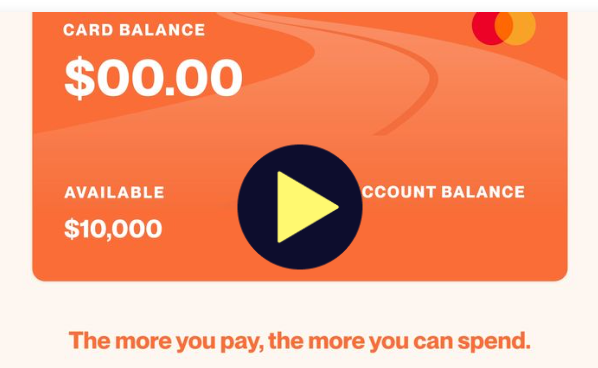
- Get instant access to the Yendo credit card
- Lower your monthly payments by $306 a month (or more)
- Have access a line of credit of up to $10,000
- Pay down your auto loan while increasing your credit limit
- Pay back your loan and still be allowed to make purchases via the Yendo app
Lower monthly payment options and details can be found and verified on Yendo's auto-refinancung page, and this fintech finance news blogpost.
Side Note: It’s important to note that while lower monthly payments can be beneficial in the short term, extending a loan term may result in paying more interest over the life of the loan. Consider your overall financial situation when evaluating this option.
Multiple Payment Options
Yendo provides several convenient payment options for flexibility:
- ACH via Bank Account: You can make payments directly from your bank account through ACH transfers.
- Mail a Check: Traditional methods, such as mailing a check, are also available.
- Debit Card, Apple Pay, Google Pay, PayPal: Digital payment options are supported through PayNearMe (with additional fees for these methods).
- Cash Payments: You can make cash payments at select retail locations using PayNearMe.
The multiple payment options can be found and verified on Yendo's credit-card-payments page.

Khary, after having treid Yendo was quoted as saying: "I love the fact that I can make payments through Apple Pay. I can make payments through my bank accounts, and it’s very convenient. " Click here to see the full review.
Ready to experience the convenience of Yendo for yourself? Click here to get started with Yendo today!
Industry Leadership and Financial Backing
Yendo’s innovative approach to vehicle-secured credit recently attracted a massive $165 million investment to support its expansion. This funding is a testament to the growing recognition of Yendo’s unique value proposition in the credit market. According to PYMNTS.com, this backing positions Yendo as a pioneering force in credit innovation, allowing it to provide higher credit limits and better affordability compared to traditional loan products. A similar Businesswire.com article was featured in Yahoo Finance.
This significant funding boost also strengthens the company’s ability to offer services that are more inclusive for individuals with poor or limited credit histories. By using the equity in vehicles as collateral, Yendo provides a safer, lower-cost borrowing alternative, which can help consumers rebuild their credit effectively.
You can read the full article in both PYMNTS and Yahoo-Finance
You can read the full article in both PYMNTS and Yahoo-Finance.
Is the Yendo Credit Card the Right Credit Card For Me ?
The most important point to all this is to know if the Yendo credit card is the right credit card for you. If this vehicle secured credit card is your best option. The most common questions in knowing are:
1. Are you looking for a higher credit limit even if your credit score is low?
2. Do you need immediate access to credit?
3. Would you rather avoid putting up a security deposit altogether?
4. Are you looking to avoid high title loan rates?
5. Are you looking to rebuild your credit?
6. Do you mind borrowing against the equity of your car?
7. Do you mind paying slightly more interest than on a secured credit card?
The best way to know is to compare the Yendo credit card with a title loan and a secured credit card. To list the Pros and Cons of the most impactful features of each and to then decide what's best for you.
Yendo Compared to Title Loans and Secured Credit Cards.
Yendo credit cards have been purposefully built to outperform both title loans and secured credit cards in several key areas that matter most to consumers, such as credit limit, interest rates, and accessibility. They offer unique benefits that appeal to a wide range of users. Depending on individual financial situations, they may not be the best fit for everyone. Ultimately, it's up to the individual to decide what's right for themselves.
Below are the Pros and Cons of Yendo credit cards, helping you decide if it's the right choice for your needs.
Pros of a Yendo Credit Card:
Credit Limit: Yendo offers a higher potential credit limit (up to $10,000) compared to most secured cards, which typically max out around $5,000. This higher limit provides more financial flexibility to users.
Interest Rate: While Yendo's 29.88% APR is higher than some secured cards, it's significantly lower than title loans, which can have astronomical rates up to 300%. This makes Yendo a much more affordable option for borrowing.
Vehicle Possession: Unlike title loans, Yendo doesn't require vehicle possession, allowing cardholders to continue using their car.
Security Deposit: Unlike secured credit cards, Yendo doesn't require a cash depot because it uses your car's built-in equity as collateral. This makes it more accessible to those without savings.
Credit Building: Yendo reports to credit bureaus, helping users build credit history, unlike title loans which typically don't. This feature is on par with secured cards also making it a great credit card to rebuild credit.
Approval Speed: With a virtual card available within 30 minutes of approval, Yendo offers much faster access to credit than traditional secured cards, which can take 1-2 weeks for approval and card delivery.
Overall Advantage: Yendo combines the credit-building benefits of secured cards with the higher limits and quick access of title loans, while offering more reasonable interest rates and terms than title loans. This unique combination positions Yendo as a superior option for many consumers, especially those with limited credit options.
Cons of a Yendo Credit Card:
Annual Fee: Yendo charges a $40 annual fee, while some secured cards might have no annual fee.
Interest Rate: Although lower than title loans, Yendo's APR of 29.88% is higher than some secured cards.
Owning a Vehicle: Approval depends on the vehicle's equity, limiting availability to those who don't own or partially own a vehicle.
Fees for Cash Advances: Cash advances incur a 3% fee, and interest accrues immediately, making it expensive if not repaid quickly.
Risk of Repossession: While you don’t lose your car automatically, abusing the system and failing to meet the card’s payment requirements could lead to the risk of repossession. Yendo only considers this as a last resort action.
Visual Comparison of the Pros and Cons
To simplify the decision, here’s a quick comparison of the Yendo credit card, title loans, and secured credit cards:
Pros and Cons of the Yendo Credit Card
| Features | Yendo Card | Title Loans | Secured Cards |
|---|---|---|---|
| Credit Limit | $450-$10,000 | Based on vehicle value | $200 to $5,000 |
| Interest Rate (APR) | 29.88% | Up to 300% | 15%-30% |
| Requires Vehicle Possession | No | Yes | N/A |
| Builds Credit (Credit Bureaus) | Yes | No | Yes |
| Approval Speed | 30 min (virtual card) | Immediate cash, high risk | 1-2 weeks |
| Annual Fee | $40 | No annual fee, but high initial costs | Varies, some have no fee |
| Owning a Vehicle | Required for approval | Required and used as collateral | Not required |
| Fees for Cash Advances | 3% fee, immediate interest | May incur additional fees | Varies, sometimes fee applies |
| Risk of Repossession | Possible, but always last resort | High, car repossessed on default | Not applicable |
For those looking to avoid the high costs of traditional loans, Yendo offers a balanced alternative. Check out Yendo here to see how it can work for your financial needs.
Side Note: It’s important to note that the Yendo combines the credit-building benefits of secured cards with the higher credit limits and quick access of title loans. It does this while offering more reasonable interest rates and terms than title loans. It may not be the perfect solution for everyone. On the whole, this unique combination positions Yendo as a superior option for many consumers, especially those with limited credit options.
The Yendo Application Process: As Easy As 1-2-3
Applying for the Yendo Credit Card is a breeze, whether your car is fully paid off or you’re still making payments. Yendo simplifies the entire process, ensuring you can unlock your vehicle's equity with minimal hassle. Here’s how it works in just three simple steps:
If Your Car Is Paid Off:
Step 1: Get Pre-Approved
Download the Yendo app and fill out some information about yourself and your car to get pre-approved in just 2 minutes—with no impact to your credit score.
Step 2: Verify Yourself and Your Car
Once pre-approved, verify your information by taking photos of your car and ID. Make sure to keep your phone handy for this quick step.
Download Yendo’s Vehicle ID Verification Process: A Step-by-Step Guide (PDF)
Step 3: Access Your Money
After approval and completing the card activation process, you’ll access part of your credit limit through a virtual card while your physical card is mailed to you. Activate your card once it arrives for full access.
Download Yendo’s Title Validation and Title/Lien Release Process: A Complete Guide (PDF)
If You’re Making Payments on Your Car:
Step 1: Get Pre-Approved
Download the Yendo app and fill out some information about yourself and your car to get pre-approved in just 2 minutes—with no impact to your credit score.
Step 2: Transfer Your Loan
Digitally transfer your existing auto loan to Yendo. The entire application process takes just minutes to complete.
Step 3: Access Your Money
After approval, you’ll get access to part of your credit limit with a virtual card while your physical card is mailed to you. Activate the physical card once it arrives to unlock your full credit limit.

Wendy, a Yendo customer, was quoted as saying: "It was super easy, you can do everything online, on the app, on your phone." Click here to see the full review.
Love to do everything online? Click here to get started with Yendo today!
Real Users Love Yendo: Yendo Reviews
People really love Yendo. Customers are sharing their positive experiences, and it’s clear they appreciate the innovative approach Yendo brings to credit. Many users highlight how easy and user-friendly the application process is, making it simple to access credit when they need it most. They also love the flexibility that comes with using their vehicle's equity, allowing them to get the funds they need without the usual hassle. And let's not forget about the customer support! Users frequently mention how responsive and helpful the team is throughout their journey, making their experience even more enjoyable.
But don't take our word for it, here’s what real users have to say:
Yendo Credit Card Review with William:
In the video review, William shares his positive experience with the Yendo. He refers to the Yendo credit line a being "an awesome, awesome thing that they've done".
What Willian Experienced:
- Quick Approval Process: He praises Yendo’s fast approval, noting that users can receive a virtual card within 30 minutes. This quick access is a major advantage for those needing immediate funds.
- Reliable Credit Building: He mentions how Yendo reports to major credit bureaus, helping users improve their credit scores over time. This feature makes it a reliable option for building or rebuilding credit.
- Ease of Access: He appreciates the card’s accessibility, as it does not require a cash deposit, making it easier for those without significant savings to obtain a credit line.
Ready to experience quick approval and reliable credit building just like William?
Apply for your Yendo credit card today and get started in minutes. Access a virtual card within 30 minutes and start building your credit with ease. Learn More...
(This video review and many others can be found on Yendo's Reviews page.)
Yendo Credit Card Review with Austin:
In this video review, Austin shares his experience and positive views on Yendo, emphasizing How great I think they truly are".
What Austin Experienced:
- Quick Approval and Ease of Use: Austin highlights the easy, hassle-free application process, making Yendo accessible to a broad range of users. The quick approval ensures customers can get immediate access to their funds.
- Affordability and Accessibility: He praises Yendo for not requiring a cash deposit, unlike many secured cards, which opens doors for people without substantial savings to obtain a credit line.
- Great Customer Support: He mentions how supportive and responsive the Yendo team is, making the experience smooth and reassuring for users.
Want a credit card that’s easy to use and backed by great customer support?
Apply for Yendo today and see why Austin found it "great" for affordability and accessibility. With no cash deposit required and a simple application process, you can get quick access to credit when you need it. Learn More...
(This video review and many others can be found on Yendo's Reviews page.)
Yendo Credit Card Review with Susanne:
In this video review, Susanne shares how Yendo has been a crucial financial tool for her, stating, “Yendo is helping me to stay afloat.” She explains how the card provides necessary support during tough financial times, making it easier for her to manage expenses
What Susanne Experienced:
- Financial Stability: Susanne emphasizes how Yendo has been a lifeline, offering a manageable credit solution that helps her cover expenses and stay financially stable without taking on high debt.
- Ease of Accessibility: She appreciates that Yendo doesn’t require a cash deposit, which made it easier for her to get started and gain access to credit quickly.
- Practicality: The flexibility and straightforward terms of Yendo have been beneficial for her, offering an alternative to more expensive or rigid financial products.
Need a credit line to help you manage tough financial times?
Discover how Yendo can be your financial lifeline, just like it was for Susanne. With no cash deposit needed and flexible terms, it’s easier to stay afloat and cover your expenses without high-interest debt. Apply Now
(This video review and many others can be found on Yendo's Reviews page.)
Yendo Credit Card Review with Jose:
In this video review, Jose shares his thoughts on how "Yendo is very effective and very beneficial". He emphasizes the positive impact that the Yendo credit card has had on his financial situation, and how a reliable and useful tool it is.
What Jose Experienced:
Jose highlights the straightforward and efficient way Yendo operates, providing users with immediate access to credit and helping them manage their finances without complications.
- Effectiveness: Jose highlights the straightforward and efficient way Yendo operates, providing users with immediate access to credit and helping them manage their finances without complications.
- Credit Building: He points out how Yendo helps users improve their credit scores by reporting to major credit bureaus, making it a practical tool for those looking to rebuild their credit.
- User-Friendly Experience: The convenience and accessibility of the Yendo card are also mentioned by Jose, who appreciates how easy it is to apply and get approved.
Looking for an effective and reliable credit solution?
See why Jose calls Yendo “very effective and very beneficial.” With its straightforward application, quick credit access, and credit-building features, Yendo can help simplify your financial management. Start building your credit today with a user-friendly card designed to support your needs. Apply Now.
(This video review and many others can be found on Yendo's Reviews page.)
Want to Hear More Experiences and Yendo Reviews From Real Users?
Yendo has helped countless people improve their financial situation with quick approval, credit-building features, and no cash deposit requirements. Check out more video and text reviews from satisfied Yendo customers to see how this card can benefit you. Explore More Yendo Reviews
Final Thoughts on the Yendo Credit
If you’re looking for a practical way to tap into your vehicle’s equity without taking on the risk of a title loan or secured credit card, the Yendo Credit Card is a smart choice. You should seriously consider this vehicle secured credit card. With credit limits that range from $450 to $10,000 (and an average $4,400) , Yendo offers a unique solution that leverages the hidden value of your car for accessible, affordable credit.
Is Yendo Right for You?
Whether you’re building or rebuilding your credit, need a high credit limit credit card, or simply want a card that works with your financial reality, Yendo stands out for its innovative use of vehicle equity. Unlike traditional cards or title loans, Yendo keeps your car in your hands and makes your financial goals a priority.
Ready to unlock the power of your car’s value? Sign up for the Yendo Credit Card today to enjoy high credit limits, reasonable rates, and peace of mind. Don’t miss the chance to use your vehicle as a financial lifeline without the risk of losing it.
Disclosure: This post contains affiliate links, and I may earn a commission if you make a purchase at no extra cost to you. I only recommend products I thoroughly researched and trust.
Advanced Credit Card Hacks (Part 2): Maximizing Rewards for Business and Student Cards
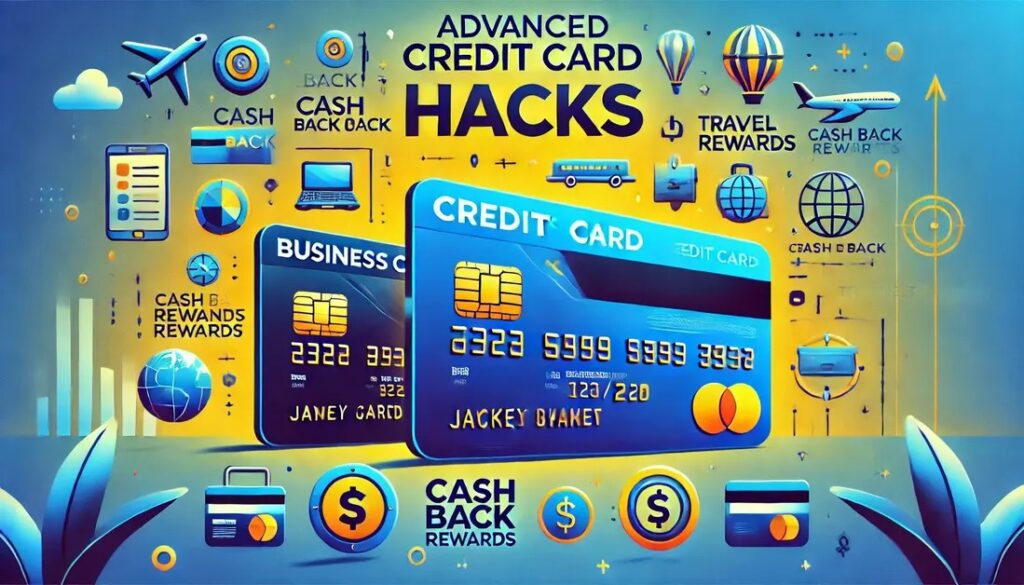
Credit Card Hack:– “a strategic method or technique used to maximize the benefits of credit cards, such as earning more rewards, reducing interest costs, or enhancing your credit score“.
Discover advanced credit card hacks tailored specifically for business owners and students. Are there any specialized ones that can help entrepreneurs maximize their business expenses or assist students in building credit while earning rewards?
Absolutely!
Join us as we explore a new frontier of financial optimization. In this guide, we’ll uncover sophisticated strategies designed to amplify the benefits of both business and student credit cards. Whether you’re managing company finances or navigating the world of credit as a student, these advanced techniques will help you extract maximum value from every transaction.
We’ll explore strategic method or technique that go beyond the basics, focusing on the unique opportunities presented by business and student cards. Get ready to transform your spending into a powerful tool for financial growth and reward accumulation.
Ready to take your reward game to the next level? Great! Let’s begin our journey into the world of advanced credit card hacks for business and student cards.
If you haven’t done so already, click here here to access Part 1 of this blog post series “Advanced Credit Card Hacks (Part 1): How To Maximize Your Cash Back And Cashback Rewards“. Learn how to make the most of your Cash Back and Cashback rewards.
Maximizing Rewards for Business and Student Cards
Welcome to Advanced Credit Card Hacks (Part 2). Mastering the credit card strategies discussed below is essential for those looking to maximize rewards for their Business or Student credit cards. These strategies are the key to unlocking the full potential of your cards. Whether you’re a small business owner seeking to optimize every business expense or a student aiming to build credit while earning valuable rewards, knowing how to strategically leverage your credit cards can make a significant difference.
Business credit cards offer unique opportunities to maximize rewards on business-related expenses. A student credit card can provide a solid foundation for young adults to build credit responsibly all while earning perks. This section delves into advanced strategies tailored specifically for both business and student credit cards. It offers important insights to help you make the most out of every dollar spent. By mastering these techniques, you’ll be well on your way to maximizing your credit card’s potential, ensuring that every swipe works harder for you.
1. Business Credit Cards
When it comes to maximizing the benefits and rewards from credit cards, business credit cards offer unique advantages tailored specifically to the needs of small businesses and entrepreneurs. These cards are powerful instruments for earning significant rewards, accessing valuable perks, and managing cash flow more effectively. By understanding the foundational aspects of business credit cards, you can strategically position your business to gain the most from every transaction, and ultimately boosting profits.
1.1 Introduction to Business Credit Cards
So what is a Business Credit Card?
As the name implies, it’s a credit card that is designed specifically for business owners and entrepreneurs. With this type of credit card, business owners and entrepreneurs can pay for their business expenses and earn benefits and rewards in the process. Benefits and rewards that are tailored to business needs.
Benefits like:
- Expense tracking
- Employee credit card with customizable spending limits.
- Purchase Protection
- Fraud Protection
- Cash Flow Management
Rewards on:
- Office Supplies
- Travel and Dining
- Telecommunications
- Advertising
By understanding the foundational aspects of business credit cards, you can strategically position your business to gain the most from every transaction, ultimately boosting your bottom line.
1.2 Leveraging Business Credit Cards for Rewards
What you want to do is to take full advantage of the benefits and rewards of the cards you’re using. You want to generate the most rewards from your everyday business expenses. To do this, you must leverage your business cards. This is where their true power lies. It could be cash back, or travel points, or any other perk. Leveraging your business credit card effectively can lead to significant savings and benefits. This type credit card hack can dramatically increase the value you receive back.
So how can you leverage your business cards?
By aligning your spending patterns with your card’s usage. So for example, if your business spends a lot of money on office supplies, or travel, or advertising, then apply for a card that offers high rewards in these categories. This will dramatically increase the value you receive back. You can even study the specific rewards structure of your card and plan your spending according to that. This will further maximize your rewards and benefits.
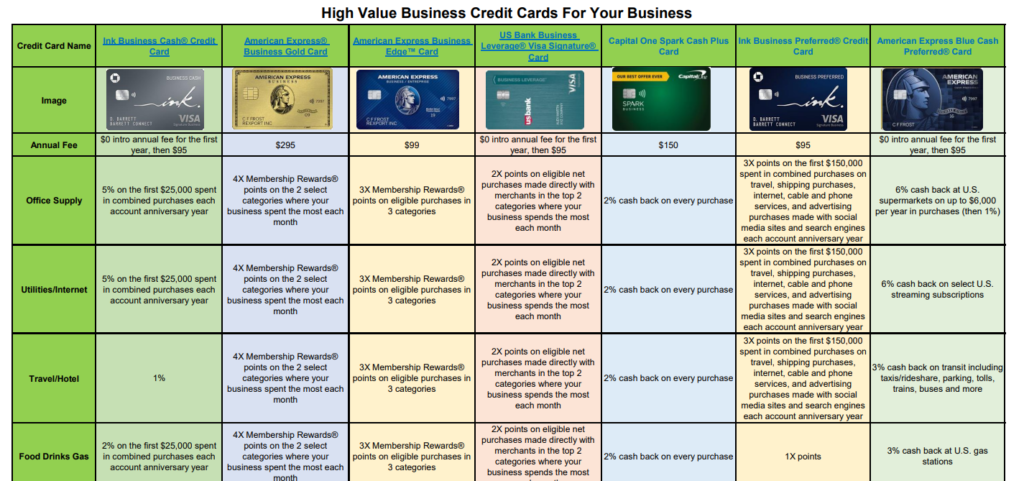
Click the link to download this “High Value Business Credit Cards For Your Business” chart. It list all the business credit cards discussed in this section. It also covers their Cash Back and Rewards, their Sign-up Bonus, Annual Fee and Key Features.
1.3 Choosing the Right Business Credit Card
Choosing the right and best business credit card for your company is more than just selecting the one with the highest reward level. You need to look deeper. This credit card hack involves evaluating several key factors. You need to examine:
Spending habits: In what area or category does your business spends the most amount of money?
Rewards categories: Does the card’s highest rewards and benefits categories align with your spending habits?
Annual fee: Compare the rewards and benefits to the annual fee cost. At first, a card with a higher fee might seem costly. It could be well worth it If it offers valuable perks (such as travel benefits, expense management tools, or rewards) that far exceed the fee in value.
Additional perks: Consider addition perks like travel benefits or an employee credit card with spending limits. Or integration with accounting software or an expense management tool.
The goal is to find a card that not only rewards your everyday spending, but also supports your business operations. By selecting a card that aligns with your business strategy, you set yourself up to maximize rewards and make your business spending work harder for you.
1.4 Maximizing Category Rewards on Business Expenses
So you’ve selected the best business credit card for your business as outlined in the previous section. Great. Now it’s time to maximize your rewards by making the most of the card’s features. This credit card hack involves utilizing category bonuses effectively. Most business cards are designed with specific features that help you get great value out of your spending. Your job is to study these features. To know them very well and to know how to use them effectively.
1.4.1 Utilize Category Bonuses Effectively
You need to find and identify the spending categories where your card offers the most rewards. Is it in dining? What about travel or office supplies? Then you need to align your spending with these categories to earn more points, rewards or cash back. For example:
1.4.1.1 Office Supplies
If you buy a lot of office supplies use a card that offers 5x the points or 5% cash back on office supply purchases. Buy all your office supplies with this card. This is a simple, very well-used credit card hack. Consider a card like the:
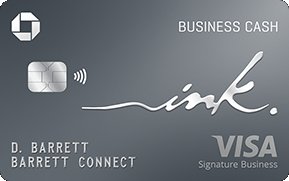
Ink Business Cash® Credit Card
Earn 5% cash back
“Earn 5% cash back on the first $25,000 spent in combined purchases at office supply stores and on internet, cable and phone services each account anniversary year.“
1.4.1.2 Travel
If travel is a big part of your business, select a card the gives you 3x the points on travel related services. Use the card to pay for the airline tickets, the hotel stays and the car rentals. Maximize your rewards by putting everything travel related on this card. Consider a card like the:
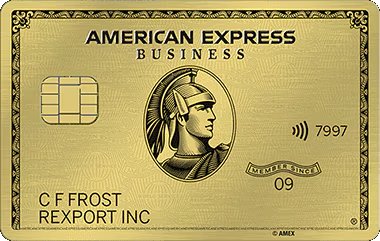
American Express® Business Gold Card
3x the points on travel
“Earn 3x points on airfare purchased directly from airlines and 3x points on hotel stays booked directly through Amex Travel.“
1.4.1.3 Entertainment and Dining
If client entertainment and dining is a major factor of your business, use a card that offers 3x the points or 3% cash back on entertainment and dining expenses. Maximize your rewards by using this card to pay for the business lunches, the dinners, the catered events and the nights out.
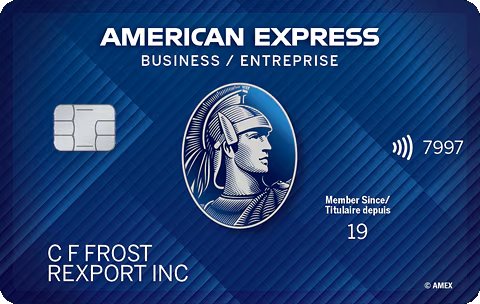
American Express Business Edge™ Card
Up to 3X the points on entertainment and dining
“Earn 3X the points on eats & drinks and rides & gas – up to 75,000 Membership Rewards® points and then earn 1X the points on all other purchases.”
1.4.2 Optimize Employee Credit Card Usage
Some business credit cards offer additional cards for the employees of the business. This can be a huge opportunity to maximize your rewards on business expenses. So now your sales representatives, office managers and purchase department can all help increase your rewards.
1.4.2.1 Set Smart Spending Caps For Each Employee
Tailor card limits to each team member’s role and purchasing needs. A sales rep who frequently travels for business may have a spending limit of $5,000 per month for travel-related expenses. This allows them to book flights, hotels, and meals without needing prior approval for each transaction. An office manager might have a limit of $1,000 per month specifically for office supplies, ensuring they can purchase necessary items without exceeding the budget. This approach keeps spending in check while racking up rewards on necessary costs.
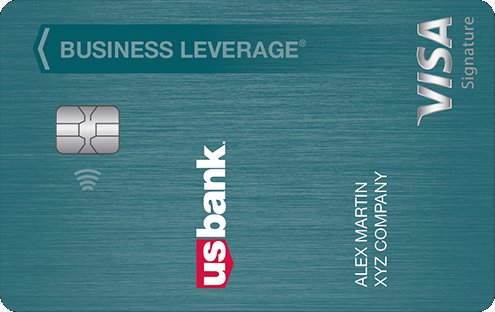
US Bank Business Leverage® Visa Signature® Card
No annual fee for employee cards
“… all of the transactions made by each of your employees and make a single payment to your account. “
1.4.2.2 Keep an Eye on the Bottom Line
Most corporate cards offer top-notch expense tracking tools. You can use a platform like Expensify or Concur that integrates with your business credit cards. This allows you to view real-time spending by each employee. It will flag any transactions over their assigned limits or any unusual spending patterns. Things like a sudden spike in restaurant expenses from a particular employee. This bird’s-eye view helps you better manage your bottom line, make savvy decisions about resource allocation and maximize your reward potential.
1.4.2.3 Educate Employees on Rewards Maximization
Teach your staff the importance of using the right card for the right type of purchase. This will help you take full advantage of the potential of employee cards and how quickly they can accumulate rewards and points. For example, have them use the “higher rewards for travel” business card to book and pay for all the travel related expanses. Things like the airfare, the hotel and the car rental. Have them use the “higher rewards for office supplies” business card to pay for the office supplies. The same principle can be applied to entertainment. Your employees should be aware of which card to use to maximize the rewards earned on these transactions.
Employee Credit Card Maximum Rewards Chart
| Credit Card | Employee Cards | Travel | Office Supplies | Dining | Advertising | Transportation | Other Bonuses |
|---|---|---|---|---|---|---|---|
| American Express Business Gold Card | Yes | 4X points on airfare | 4X points on U.S. purchases for office supplies | 4X points at restaurants | 4X points on select U.S. advertising | No specific bonus | 4X points on U.S. gas stations |
| Chase Ink Business Preferred | Yes | 3X points on travel | No specific bonus | No specific bonus | 3X points on advertising purchases with social media sites and search engines | No specific bonus | 3X points on shipping purchases and internet, cable, and phone services |
| Capital One Spark Miles for Business | Yes | 2X miles on all purchases | 2X miles on all purchases | 2X miles on all purchases | 2X miles on all purchases | 2X miles on all purchases | 5X miles on hotel and rental car bookings through Capital One Travel |
| American Express Business Platinum Card | Yes | 5X points on flights and prepaid hotels booked through Amex Travel | No specific bonus | No specific bonus | No specific bonus | No specific bonus | 1.5X points on eligible purchases of $5,000 or more |
| Chase Ink Business Cash | Yes | No specific bonus | 5% cash back on office supply stores | 2% cash back at restaurants | No specific bonus | 2% cash back at gas stations | 5% cash back on internet, cable, and phone services |
| American Express Blue Business Plus | Yes | 2X points on all purchases (up to $50,000 per year) | 2X points on all purchases (up to $50,000 per year) | 2X points on all purchases (up to $50,000 per year) | 2X points on all purchases (up to $50,000 per year) | 2X points on all purchases (up to $50,000 per year) | No additional bonuses |
| U.S. Bank Business Leverage® Visa Signature® Card | Yes | 2% cash back if in top 2 spending categories | 2% cash back if in top 2 spending categories | 2% cash back if in top 2 spending categories | 2% cash back if in top 2 spending categories | 2% cash back if in top 2 spending categories | 2% cash back on top 2 spending categories each month |
1.4.2.4 Centralize Reimbursements
Some businesses have a reimbursement policy for their employees who pay out-of-pocket for specific expenses. Don’t let your employees pay out-of-pocket for anything. Instead, have them use their assigned business credit card to make eligible purchases. This does two things. Firstly, it eliminates or makes the process of getting reimbursed for expenses more efficient. Secondly, it earns the business rewards that may have been otherwise missed.
So as an example, an employee who attends a conference may have to pay for registration, lodging and meals. From now on, these business expenses will be charged to the employee’s assigned business credit card instead of them paying for it. The expenses will be paid by the card and the business will gain the rewards in return.
1.4.2.5 Put Regular Bills on Autopilot
Determine which employee cards will handle your recurring business charges. Things like subscriptions, software fees, or utilities. This set-it-and-forget-it approach keeps the rewards flowing without any extra effort. It’s an inventive way to spread spending across multiple cards and hopefully multiple rewards.
So as an example, you would assign a company card to handle regular recurring expenses. Monthly software subscriptions like Adobe Creative Cloud and Microsoft Office. Or utility bills likle your internet connection ,or electricity. By charging these to a designated employee card, you ensure consistent rewards accumulation. If your team has a card that earns 2% cash back on all purchases, charging a $100 monthly software subscription can earn $2.00 in rewards each month.
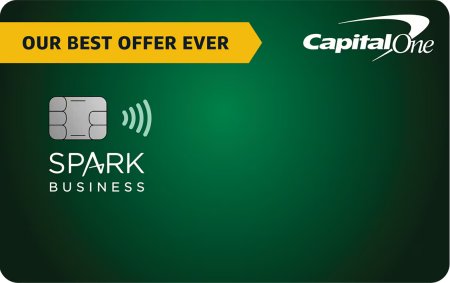
Capital One Spark Cash Plus Card
2% cash back on every purchase
“Earn unlimited 2% cash back for your business on every purchase, everywhere, no limits or category restrictions.“
By implementing these examples, you can enhance your spending management strategy, optimize rewards, and streamline your financial processes effectively.
Click here to discover 11 benefits of using employee business cards or Corporate Cards as they are also referred to: “11 Benefits of Corporate Cards for Business“.
1.5 Strategies for Meeting High Minimum Spend Requirements
Snagging that juicy sign-up bonus often means spending a hefty sum in a short time. For small businesses watching their cash flow, this can be tricky. But with some clever planning, you can hit that target without breaking the bank.
1.5.1 Timing Your Application
Try syncing your card application with times when you know you’ll be shelling out more cash than usual. Let’s say you run a small bakery and know you’ll need to replace your industrial mixer soon, costing around $5,000. You could apply for a new business credit card just before making this purchase, using it to meet a large chunk of the minimum spend requirement.

Ink Business Preferred® Credit Card
90,000 bonus points
“Earn 90,000 bonus points after you spend $8,000 on purchases in the first 3 months after account opening.“
1.5.2 Shifting Regular Payments
Got a big inventory restock coming up? Instead of paying your $1,000 monthly inventory bill by check, switch it to your new credit card for 3-4 months. This easily adds $3,000-$4,000 towards your minimum spend.
1.5.3 Prepaying Expenses
Many landlords, utility companies, and insurance providers are cool with you paying a few months ahead. This can give you a quick boost towards that spending goal. So if your business pays $500 monthly for office rent, you could arrange to prepay 6 months ($3,000) on your new card. This helps meet the spend requirement without increasing overall expenses.
1.5.4 Additional
And don’t forget about those big-ticket items you usually pay by check or bank transfer. Vendor services, contracts, even taxes – many of these can go on plastic, turning necessary costs into reward-earning opportunities.
With some savvy planning and a bit of strategy, you can nail those minimum requirements and unlock those sweet bonuses without putting the squeeze on your cash flow.
1.6 Strategic Decision-Making: Business vs. Personal Credit Cards for Maximizing Rewards
1.6.1 Business Card Advantage
Business cards are tailor-made for company needs, dishing out perks for things like office supplies, travel, and ads. Plus, they often come with nifty tools for keeping tabs on business expenses and employee spending. For example, imagine you own a marketing agency. A business card offering 4X the points on advertising spend could be ideal, as you frequently purchase online ads for clients.
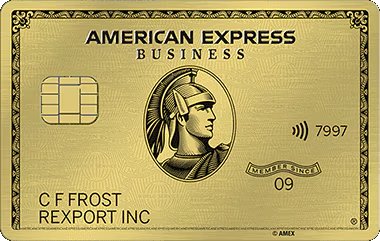
American Express® Business Gold Card
Earn 4X Membership Rewards® points
“Earn 4X Membership Rewards® points on the 2 categories where your business spends the most in each billing cycle from 6 categories: Purchases at US media providers for advertising in select media (online, TV, radio)“
1.6.2 Personal Card Benefits
Sometimes a personal card might actually be the better bet for certain spending categories. Maybe it offers killer rewards on groceries or gas, which could be big-ticket items for your business. If you’re dropping serious cash in an area where a personal card shines, it might be worth whipping that one out instead. For example, let’s say you run a small catering business and spend heavily on groceries. A personal card offering 6% cash back at supermarkets might outperform a business card for those specific purchases.
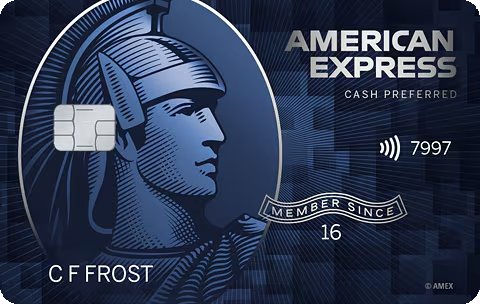
American Express Blue Cash Preferred® Card
6% cash back on groceries
“Earn 6% cash back on groceries Up to $6,000 per year in purchases at U.S. supermarkets.“
1.6.3 Mixing Strategies
Sometimes, depending on the situation you may need to combine or mix the two strategies to achieve the highest rewards possible. The following can be a real life example of a consultant who travels frequently to meet with clients.
Consultant Example: Sarah is a business consultant who frequently travels for client meetings. She has both a business credit card and a personal credit card.
>>Business Credit Card Usage
- Office Supplies: Sarah uses her business credit card, which offers 2x points on office supplies, to purchase items like notebooks, pens, and software subscriptions. For instance, she spends $200 on office supplies in a month, earning 400 points.
- Client Dinners: When meeting clients for dinner, she uses the same business card, which offers 3x points on dining expenses. If she spends $150 on a dinner, she earns 450 points for that transaction.
>>Personal Credit Card Usage
- Flights: For her travel, Sarah has a personal credit card that offers 3x points on airline purchases. When booking a flight for a client meeting costing $600, she uses her personal card, earning 1,800 points.
- Hotels: Similarly, when booking a hotel for a two-night stay at $300 per night, she uses her personal card, earning another 1,800 points (3x points on hotel stays).
That said, business cards often bring more to the table. We’re talking higher spending limits, detailed expense tracking, and the ability to hand out cards to your team. And let’s not forget – keeping business and personal spending separate is crucial for staying organized and keeping the taxman happy.
The secret sauce? Take a good, hard look at the rewards and perks of each card type, and match them up with how your business actually spends money. This way, you can strategically pick the plastic that’ll give you the biggest bang for your buck, making sure every swipe is working overtime for your bottom line..
2. Student Credit Cards
When it comes to building credit history and managing finances while in school, student credit cards offer unique advantages tailored specifically to the needs of college and university students. These cards are valuable tools for establishing credit, earning rewards on everyday purchases, and learning financial responsibility. By understanding the key features of student credit cards, you can make informed decisions about your finances and set yourself up for financial success after graduation.
2.1 Introduction to a Student Credit Card
So what is a Student Credit Card?
As the name implies, it’s a credit card that is designed specifically for college and university students. With this type of credit card, students can make purchases, build credit history, and earn benefits and rewards in the process. These cards often come with features and perks tailored to student life and financial situations.
Benefits like:
- Lower credit limits to help manage spending
- Easier approval process for those with limited credit history
- Educational resources on credit management
- Lower or no annual fees
Rewards on:
- Groceries and dining
- Textbooks and school supplies
- Transportation and gas
- Entertainment and streaming services
By understanding the basics of a student credit card, young adults can start building their credit responsibly while enjoying benefits that align with their student lifestyle. This foundation can set them up for financial success as they transition into their post-graduation careers.

Click the link to download this “High Value Student Credit Cards” chart. It list all the student credit cards discussed in this section. It also covers their Cash Back and Rewards, their Sign-up Bonus, Annual Fee and Key Features.
2.2 Maximizing Rewards While Building Credit Early
Building credit is essential, but why not earn valuable rewards simultaneously? Here’s how to optimize your approach:
2.2.1 Pay in Full and On Time
This is the golden rule of credit card use. Paying your balance in full each month avoids interest charges and demonstrates responsible borrowing to lenders. For example, if you charge $300 in textbooks and groceries, make sure to pay off the full $300 by the due date. This habit will set you up for success when applying for premium cards with lucrative sign-up bonuses in the future.
2.2.2 Start with a Rewards Card
Don’t settle for a basic card. Choose one that aligns with your spending patterns. For instance, if you frequently order takeout or study at coffee shops, look for a card that offers extra points or cash back on dining and cafes. You can earn unlimited 3% cash back on dining, entertainment, and grocery store purchases, making it an excellent choice for students looking to maximize their rewards while managing their budgets.
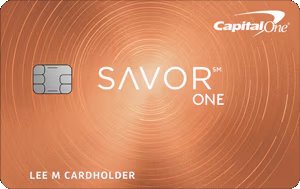
Capital One SavorOne Rewards for Students Card
Unlimited 3% cash
“Earn unlimited 3% cash back on dining, entertainment, popular streaming services & at grocery stores. $0 annual fee. Plus, earn a $50 cash bonus.“
2.2.3 Keep Your Credit Utilization Low
Aim to use less than 30% of your credit limit to maintain a healthy credit score. If your limit is $1,000, try to keep your balance under $300. This doesn’t mean you can’t spend more than $300 per month – just pay off your balance multiple times throughout the month to keep the reported utilization low. This strategy allows you to earn more rewards while protecting your credit score.
2.2.4 Leverage Small, Frequent Purchases
Use your card for everyday expenses like groceries, transportation, or school supplies. This approach helps build a consistent credit history and accumulates rewards steadily. For example, let’s say you spend $200 a month on groceries, $80 a month on transportation and $20 a month on school supplies. By using a card that earns 1.5% cash back, you’d earn $54 in rewards over a year on purchases you would make anyway.
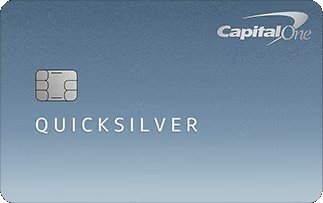
Capital One Quicksilver Student Cash Rewards Credit Card
1.5% cash back
“Earn unlimited 1.5% cash back on every purchase, every day.“
2.3 Best Student Cards for Maximizing Rewards
Not all student cards are created equal. Here’s how to spot the gems and make the most of your card choice:
2.3.1 Look for Cards with No Annual Fee
A good course of action for students is to keep away from cards that have annual fees. Avoid credit cards that charge you a fee for the privilege of using them. There are plenty of rewarding zero-fee cards out there. As a student, your income will be more than likely limited. Annual fees can hurt you financial and eat into your rewards earnings. Avoid them when you’re just starting out.
Your Best option:
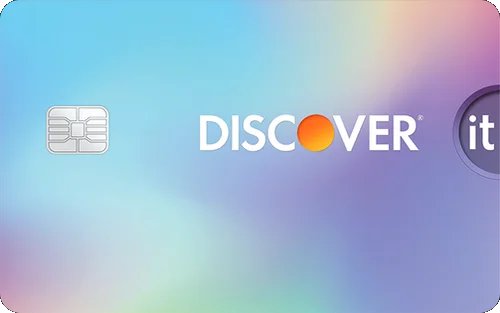
The Discover it® Student Cash Back Card. It has no annual fee and offers 5% cash back on rotating categories each quarter (up to $1,500 in purchases, then 1%), plus 1% cash back on all other purchases. This card also provides a unique bonus: a $20 statement credit each school year your GPA is 3.0 or higher for up to 5 years.
2.3.2 Consider Cards with Introductory Bonuses
Some student cards offer easier sign-up bonuses as an incentive for new student cardholders. They are more attainable than premium rewards cards sign-up bonuses. This is great for students who have limited spending power. They typically have lower spending thresholds, usually ranging from $500 to $1,000 within the first 3 months of account opening.
Your Best option:
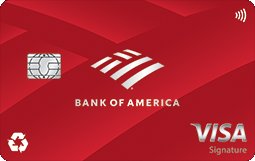
The Bank of America® Customized Cash Rewards Credit Card for Students offers a $200 online cash rewards bonus after making at least $1,000 in purchases in the first 90 days of account opening. This may be a good fit if your regular spending is $350 dollars or higher per month. It’s like getting a 20% discount on your purchases.
(As a side note:)
The Capital One Quicksilver Student Cash Rewards Credit Card offers a $50 bonus after spending $100 within the first 3 months from account opening. It’s not the highest bonus, but it’s incredibly easy to earn.
2.3.3 Choose Cards with High Rewards on Everyday Purchases
It’s a good idea to focus on the cards that give you extra points or cash back on the things you regularly buy. If you’re always buying food on campus, choose a card that offers 3% back on dining. Look for cards with bonus categories that match your spending habits. This will help you to maximize your earnings. If you qualify, this hack does not require the credit card to be a student credit card.
Your Best option:
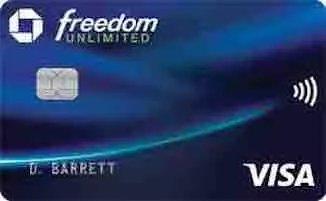
The Chase Freedom Unlimited® Credit Card offers 3% cash back on dining at restaurants, including takeout and eligible delivery services. It also offers a 1.5% cash back on all purchases. It’s an excellent card for students who want to earn dining and purchase rewards. It even offers $0 annual fee. This card is not directly marketed as a student card, but it’s available to students with a credit history.
2.3.4 Evaluate Redemption Options
Flexibility is a key factor in maximizing credit card rewards. Basically, you want a card that gives you options. The freedom to use your hard-earned points and cash back as you see fit. Some cards only let you redeem for statement credits. That’s not too bad because you get to pay down the balance of the card. It’s even better if you can get actual cash back. Or maybe choose from a variety of gift cards.
Your best bet is to look for cards that let you redeem your rewards in multiple ways. This way, you’re not locked into one redemption method. One month you may need cash back to cover some unexpected expenses. The next month you might want to treat yourself to a gift card for your favorite store. You should have the flexibility and freedom to do so.
With some cards, you can transfer points to travel partners. This is great for maximizing your travel rewards. You might be able to get more value for your points by transferring them to an airline or hotel loyalty program.
Your Best option:
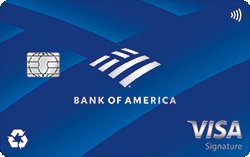
The Bank of America® Travel Rewards Credit Card For Students is worth looking in to out. It’s quite flexible when it comes to using your rewards. You can use your points to offset travel expenses, get cash back, or even snag some gift cards. What’s great is that when you use your points for travel, each point is worth a penny. Therefor 10,000 points = $100 off your travel costs. Pretty good for a student card.
Selecting the right credit card is a personalized choice. Consider your spending habits and the rewards that excite you. Choose a card that aligns with your lifestyle and spending patterns. This way, you’ll maximize your rewards while building credit. Remember, the perfect card is the one that suits your unique needs.
2.4 Maximizing Rewards with Limited Student Budgets
Being a student is not easy. Managing a tight budget is often a reality that most students live with. That doesn’t mean you can’t take advantage of credit card rewards. Yes you can. Here are some strategies to help you make the most of your spending:
2.4.1 Stick to the Essentials
Use your credit card for purchases that are essential to you. Whatever you need on a regular basis. Things like groceries, transportation, and school supplies. For example, let’s say you spend $50 a week on groceries. Choose a credit card that can get 3% cash back at groceries, retail purchases and gas as well. This will help you to maximize your earnings. If you qualify, this hack does not require the credit card to be a student credit card.

American Express Blue Cash Everyday® Card
3% cash back
“Earn 3% cash back at groceries, retail purchases and gas as well up to $6,000 per year in purchases (then 1%).“
So here’s the breakdown:
$50 per week on groceries = $2,600 per year
3% cash back on $2,600 = $78 in cash back rewards
This card will earn you $78 a year just for buying the food you were going to buy anyway. This American Express card has no annual fee. This makes it is very popular among students and young adults. Remember, the key is to use the card for essential expenses. Make sure you don’t overspend just to earn the rewards.
2.4.2 Take Advantage of Category Bonuses
Student credit cards usually offer bonus rewards in more that one category. This allows you to earn more on your required spending. For example, let’s say you spend $100 a month online to pay for things like your cable, your internet connection, your phone plan and streaming services. Choose the, you can get 3% cash back in the online shopping category (which includes cable, internet, phone plans, and streaming).This will help you get rewards for the purchases you would make anyway.
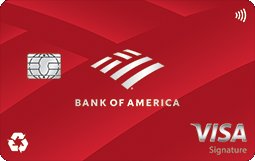
Bank of America® Customized Cash Rewards Credit Card for Students
3% cash back
“Earn 3% cash back in the online shopping category (which includes cable, internet, phone plans, and streaming). It’s 3% and 2% cash back on the first $2,500 in combined purchases each quarter.“
So here’s the breakdown:
$100 per month on online shopping = $1,200 per year
3% cash back on $1,200 = $36 in cash back rewards
So by taking advantage of online category bonus of this card, you can earn $36 in cash back in a year. All the meanwhile paying what you’ve already been paying. Without a change in your spending habits. This makes your regular expenses more affordable. It also helps you build your credit history. Remember, the key is to use the card for purchases you would make anyway, and not to overspend just to earn rewards.
2.4.3 Stack Rewards with Student Discounts
Many retailers offer student discounts. This happens both online and off. These discounts can be very profitable if you know what to do. Your goal here is to try to combine the student discount with your credit card rewards. If you do this, you will maximize your overall savings in a big way. If done correctly, this credit card hack allows you to save twice the money on a single purchase.
For example, let’s say that you’re buying $200 worth of textbooks from a retailer. The retailer is offering a 10% student discount on those textbooks. Choose a student credit card that can get you 5% cash back on rotating categories each quarter. This is up to the quarterly maximum when you activate. You also get 1% cash back on all other purchases.
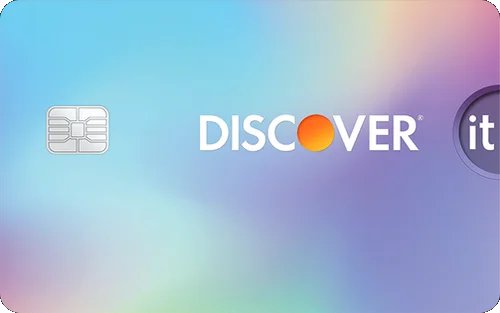
Discover it® Student Cash Back Card
5% cash back
“Earn 5% cash back on rotating categories each quarter up to the quarterly maximum when you activate. 1% cash back on all other purchases.“
So here’s the breakdown:
Original textbook price: $200
10% student discount: -$20
Price after student discount: $180
5% cash back on $180: $9
Total savings: $20 (student discount) + $9 (cash back) = $29
By stacking your student discount with your credit card rewards, you’ve saved $29 on a $200 purchase, which is about 14.5% in total savings.
Now, the Discover it® Student Cash Back Card also states that it will “match your cash back at the end of your first year“. This extra bonus can potentially double your rewards.
The key is to look for opportunities to combine discounts with your credit card rewards, maximizing your savings on purchases you need to make anyway.
2.4.4 Utilize Loyalty Programs
Loyalty programs are extremely popular in the retail industry. They turn shoppers into frequent shoppers. Depending on the credit card you use, you can basically double the rewards on your purchases. Your goal here is to pair these loyalty programs with the rewards offered by your card. For example, let’s say you spend $200 in restaurants and the restaurant has a 10% cash back customer loyalty discount. Choose a card that can get you 2% cash back at gas stations and restaurants.
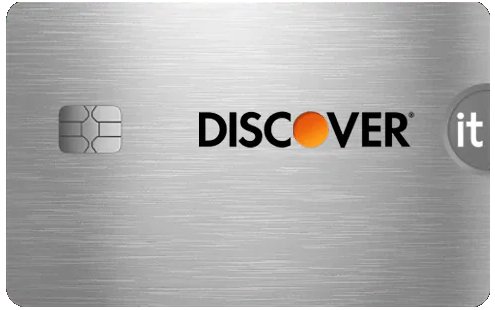
Discover it® Student Chrome Card
2% cash back
“Earn Earn 2% Cashback Bonus® at Gas Stations and Restaurants on up to $1,000 in combined purchases each quarter, automatically. Plus, earn unlimited 1% cash back on all other purchases.“
So here’s the breakdown:
Original restaurant bill: $200
Restaurant loyalty discount (10%): -$20
Actual amount paid: $180
Discover it® Student chrome cash back (2% on restaurants): $3.60
Total savings: $20 (loyalty discount) + $3.60 (cash back) = $23.60
Additionally, this credit card requires no annual fee and is designed for students. So you’re saving $23.60 on a $200 meal, which is equivalent to an 11.8% total discount. Simply by combing the restaurants loyalty program with your credit card’s reward program. If you do this for a year, you will spend $2,400 on dining. Your total savings will be $283.20 ($240 from the loyalty discount and $43.20 from cash back).
In this specific example, the saving don’t end there. The Discover it® Student Chrome Card will match all the cash backs you’ve earned at the end of your first year. This added feature doubles your rewards for the first year. The key is to use this strategy for purchases you would make anyway, and not to overspend just to earn rewards or discounts.
2.5 Leveraging Long-Term Financial Health for Better Rewards
The key to being able access and take advantage of the full potential of credit card rewards is to build a strong financial foundation. If you focus on your long-term financial health, you’ll will qualify for better credit card options. You’ll also be in a position to maximize the value of your rewards.
This section will guide you through the steps of first establishing good credit habits and then transitioning to high-reward credit cards. We’ll explore how to improve your credit score, which opens doors to premium card offers, and then how to strategically upgrade your credit cards to take advantage of more lucrative benefits and perks. Whether you’re just starting out or looking to level up your rewards game, these strategies will help you enhance your financial well-being while enjoying more valuable credit card rewards.
Let’s dive into the specifics of each:
2.5.1 Establishing Good Credit Habits
Building strong credit habits is step one. It’s essential for everything that comes after. Good habits improve your credit score. They also teach you valuable financial management skills that will serve you well throughout your life. Remember, credit card companies are looking for responsible borrowers. People who will respect the terms of borrow and pay the debt back promptly and on time. In other word, people who can handle credit wisely. By demonstrating these qualities, you’re setting yourself up for better offers and more lucrative rewards in the future. This is what you need to do establish good credit habits….
2.5.1.1 Pay Your Bills on Time
This cannot be overstated. Pay your bills on time . Show the lenders that your are reliable. It’s not only about avoiding late fees ands the possibility of a higher credit rate. Late payments can hurt your credit score. A poor credit score can deny you many opportunities in the future. As a fail safe, you can set up automatic payments or create a bill payment calendar.
Click here to read an excellent Nerdwallet article on how to “Set Up Automatic Credit Card Payments, Forget the Late Fees“. Click here to access WordTemplatesOnline’s “Free Bill Pay Checklists and Calendars (Edit & Printable)“.
2.5.1.2 Keep Your Credit Utilization Low
Don’t max out your cards. This makes you look like your heavily dependent on credit and that you don’t manage money well. Credit card companies prefer to see that you’re using only a small portion of your available credit. This shows them that you’re a responsible financial manager. The benchmark is at about 30%. Try to keep your credit utilization below 30% of your total available credit. So if you have a card with a $1,000 limit, try to keep your balance under $300.
So this credit card hack stipulates that if you have large purchase to make, pay it off immediately. If that’s not possible, try to spread the cost across multiple cards. This will keep every cards card utilization low. For example, let’s say you if need to make a $900 purchase. You have three cards each with a $1,000 limit. Charge $300 to each card and keep all three at 30% utilization instead of maxing out one card.
Lower utilization rates are even better. Usually people who have the highest credit scores often keep their utilization rates below 10%. This send a positive signal to lenders about your creditworthiness. This can lead to better credit offers and terms in the future.
2.5.1.3 Why Is It Important To Check Your Credit Report
So why is it important to check your credit report? What are you looking for? The truth is that it’s not just about detecting possible errors. This credit card hack is a preventative, common sense approach t credit. It’s about understanding your credit profile and detecting any signs of identity theft early on.
So what should you look for? When reviewing your report, look for:
- Accounts you don’t recognize
- Incorrect personal information
- Late payments you know you made on time
- Outdated negative information that should have dropped off
If you spot any inaccuracies, dispute them immediately with both the credit bureau and the company that reported the information. This process can be initiated online, by phone, or by mail.
There are three major credit bureaus in the US. They are Equifax, Experian, and TransUnion. Once a year, you’re entitled to free credit reports from each of the three major credit bureaus. You can get your reports at AnnualCreditReport.com. This is the only official site authorized by federal law to provide these free reports. Now as of 2023, you can actually access your reports weekly for free through this same site.
Just so you know, your credit report does not include your credit score. This is explained in the next section. People sometimes assume that they are one in the same. They are two very different tools that are used to assess a person’s creditworthiness.
So by regularly monitoring your credit report, your in a position to immediately address any issues or errors. This is one of the best ways maintain a healthy credit profile. This, in turn, can lead to better credit card offers with more lucrative rewards programs. Stay vigilant and proactive. You’re not just protecting your financial reputation – you’re positioning yourself to take full advantage of the best credit card rewards available in the market.
2.5.1.4 What Is The Difference Between A Credit Report And A Credit Score?
So, what is the difference between a credit report and a credit score? Great question! A credit report is a more in-depth understanding of your credit history and can help you take targeted steps to improve it. A credit score is a quick assessment or numerical summary of that history.
Credit Report:
- A comprehensive document detailing your credit history
- Includes information about your credit accounts, payment history, and public records
- Used by lenders to evaluate your creditworthiness in detail
Credit Score:
- A numerical representation of your creditworthiness, typically ranging from 300 to 850
- Calculated using information from your credit report
- Provides a quick snapshot of your credit health for lenders
Key Differences:
- Format: Reports are detailed documents; scores are single numbers
- Calculation: Reports compile raw data; scores use algorithms to interpret that data
- Use: Lenders use reports for in-depth analysis and scores for quick assessments
- Accessibility: Scores are not included in your free annual credit report
Your credit score can be seen on your credit or loan statements. It can be obtained through a credit or housing counselor or a credit score service. It can also be purchased from one of the three three major credit bureaus listed above.
Click the icon below to see a sample credit report form Equifax.
This chart explains how your credit score is graded by lenders and financial institutions.
| Category | FICO Score Range | Description |
|---|---|---|
| Exceptional | 800-850 | Most likely to receive the best terms and lowest interest rates. |
| Very Good | 740-799 | Considered favorable by most lenders. |
| Good | 670-739 | May face higher interest rates or stricter terms. |
| Fair | 580-669 | Difficulty qualifying for credit or face the highest costs when borrowing. |
| Poor | 300-579 | Difficulty qualifying for credit or face the highest costs when borrowing. |
*FICO stands for the Fair Isaac Corporation, which developed the FICO Score as a method to evaluate credit risk based on information from credit reports. The FICO Score is widely used by lenders to assess an individual’s creditworthiness and determine the terms of loans and credit products. It ranges from 300 to 850, with higher scores indicating lower credit risk and better borrowing terms.
2.5.2 Transitioning to High-Reward Credit Cards
So, you’ve established good credit habits and improved your credit rating. That’s amazing. It’s now time to level up your credit card game and transition to high-reward credit cards. This credit card hack will take you from a student cards to a regular credit cards with higher rewards. It will allow you to take advantage of more lucrative benefits and perks. Here’s how to strategically upgrade your credit cards:
2.5.2.1 Research and Compare Cards
The first thing you need to do before researching and comparing credit cards is to find out where your money is going. Be honest with yourself and take a good look at your spending habits. Are you a frequent traveler or do you prefer staying home? Do you spend more on groceries or do you prefer dining out? Your spending patterns should guide your card choice.
If you want to research credit cards, there is a great tool that we’ve created that uses AI to conduct amazing research . It’s called Best Credit Cards. It will help you find the best credit cards with the best benefits. You can search by rewards, points, cash backs, balance transfers, travel incentives, interest rates, credit ratings, and much more. It’s also very easy to use. You can check it out here:
Now if you want to compare cards, there a two great tools that you can use. Nerdwallet’s Side by Side Credit Card Comparison Tool and Forbes’ Credit Card Comparison tool. You simply select the cards you want to compare and review the key features displayed side-by-side. Things like annual fees, rewards rates, and APR offers. It’s a great way to easily evaluate which card best fits your financial needs and goals.
When comparing, don’t just focus on flashy rewards rates. Consider these key factors:
- Annual Fees: Sometimes, a card with a fee offers enough value to offset the cost.
- Interest Rates: Important if you might carry a balance.
- Welcome Bonuses: These can provide significant upfront value.
- Rewards Rate: Look at earn rates in categories where you spend most.
- Additional Perks: Travel insurance, airport lounge access, or purchase protection can add significant value.
Use the comparison tools to input your average monthly spending in different categories. This will help calculate potential rewards earnings for each card, making it easier to see which one offers the best value for your specific spending habits.
Remember, the best card for someone else might not be the best for you. Take the time to thoroughly compare options based on your unique financial situation and spending patterns. This careful research will help you find a card that maximizes your rewards and fits your lifestyle.
2.5.2.2 Strategically Time Your Applications
Be careful with this credit card hack. You need to time your credit card applications when transitioning from other types of cards to high-reward credit cards. Why? Because of the impact each application has on your credit score. It’s important to understand that each time you apply for a new card, a hard inquiry is placed on your credit report. This can temporarily lower your credit score. So, in order to minimize this impact and increase your chances of approval do the following:
- Space out your applications: The waiting period between applications should be at least 3-6 months. This will give your credit score time to recover from each application hard inquiry.
- Apply for the best cards first: Start with the one that have the best rewards. Start earning points and rewards immediately. Less important cards can be applied for later
- Consider the Chase 5/24 Rule: Some issuers, like Chase, have rules limiting approvals if you’ve opened too many new accounts recently. Be aware of these rules when planning your card strategy.
- Monitor your credit score: Use free credit monitoring services to track your score and time your applications when your score is at its peak.
By being strategic about when and how you apply for new cards, you can transition to high-reward cards more smoothly and with less impact on your credit health.
Utilize Advanced Reward Strategies:
Once you have a high-reward card, explore advanced strategies like point transfers to airline or hotel loyalty programs. This strategy can significantly increase the value of your rewards. For example, transferring points to a frequent flyer program might offer better redemption rates than using them for cash back.
Example:
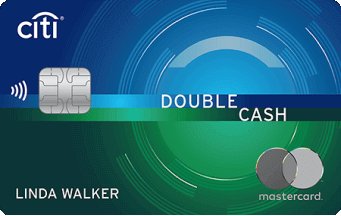
A graduate with a solid credit history transitions from a student card to the Citi® Double Cash Card, which offers 2% cash back on all purchases (1% when you buy, plus 1% as you pay). They also open a travel rewards card to take advantage of travel-related perks and bonuses, maximizing their rewards based on their lifestyle.
By focusing on long-term financial health and strategically transitioning to cards with higher rewards, you can significantly enhance the benefits you receive from credit cards. This credit card hack not only boosts your rewards but also supports your overall financial well-being.
If you haven’t done so already, click here here to access Part 1 of this blog post series “Advanced Credit Card Hacks (Part 1): How To Maximize Your Cash Back And Cashback Rewards“. Learn how to make the most of your Cash Back and Cashback rewards.
Advanced Credit Card Hacks (Part 1): How To Maximize Your Cash Back And Cashback Rewards
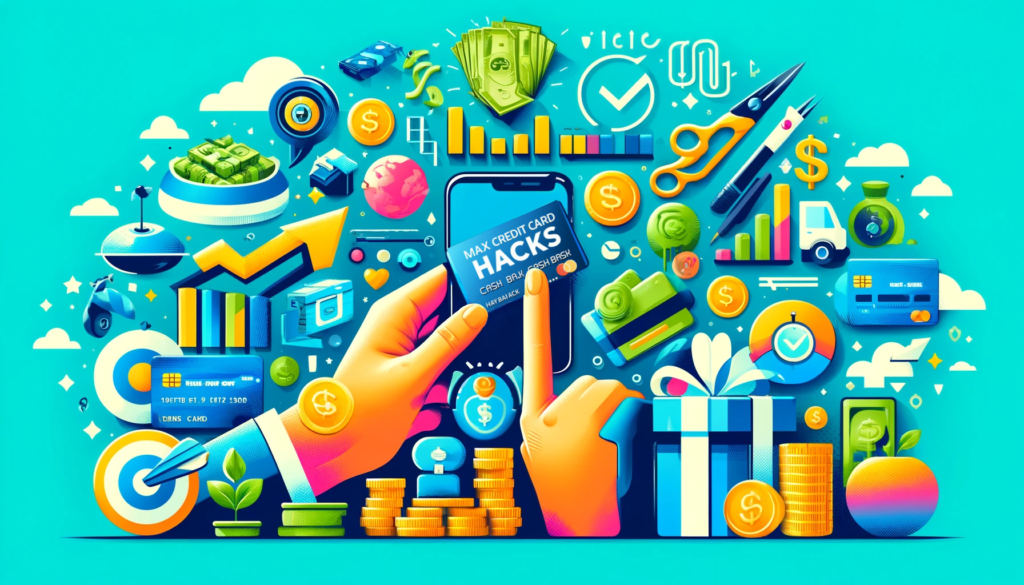
Credit Card Hacks
Discover the best credit card hacks to maximize both your cash back and cashback rewards. Ready to get started? Here we go…
Are there any credit card hacks that can help you make money on your purchases or at least get some rewards for your patronage?
Oh, Yes there are….
So come along for the ride. Let’s embark on a journey to financial savvy where we unravel the secrets to maximizing your cash back and cashback rewards. Whether you’re a seasoned shopper or a newcomer to the world of credit, this guide is your golden ticket to turning everyday purchases into a treasure trove of returns.
We’re going to see several credit card hacks specifically tailored to helping you maximize your cash back and several specifically tailored at maximizing your cash back rewards.
Once you’re done here, click the link to access Part 2 of this blog post series “Advanced Credit Card Hacks (Part 2): Maximizing Rewards for Business and Student Cards“. Learn how to boost rewards and unlock the secrets of high earnings business and student credit cards.
The first thing we need to do is differentiate between cash back and cashback rewards. They’re close but not exactly the same.
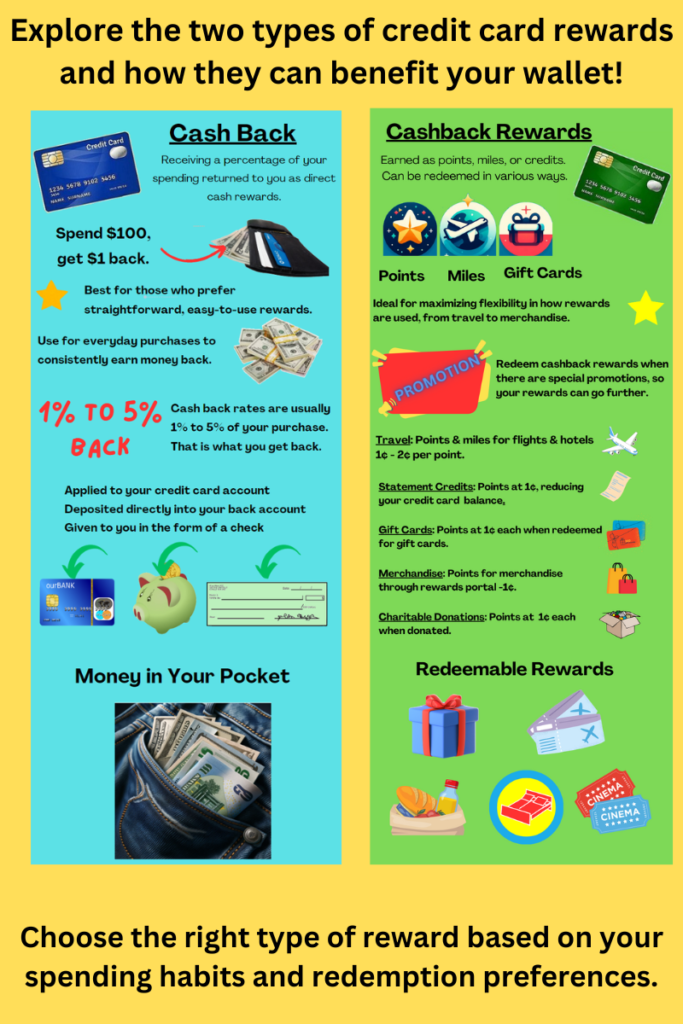
1. What is Cash Back
1.1 Cash Back Definition
Cash back is simply a credit card benefit that refunds you a small amount of money (in different forms) when you buy something. You get cash back on a purchase.
1.2 Cash Back Forms
The cash back can be refunded to you in many forms depending on the credit card company that you are dealing with. Firstly, the cash back amount that you earned because of your purchase, can be applied directly to your credit card account, thus lowering the balance that you owe on that card. Secondly, it can be deposited directly into your back account in the form of money. Thirdly, it can be given to you in the form of a check that you can deposit into your bank account.
1.3 Straightforward Approach
Cash back on a credit card is straightforward. You buy something with the card, you get a percentage back in cash. That’s it.
1.4 Maximum Cash Back Amounts
Cash back rates are usually 1% to 5% of your purchase. That is what you get back. Moreover, it’s usually capped at a few hundred dollars. There may be exceptions, but this is the industry norm.
1.5 Real Life Example
If you spend $2000 on a new Smart TV, you can get back anywhere from $20 to $100, once again, depending on the credit card company you’re dealing with.
$2,000 at 1% = $20 $2,000 at 3% = $60 $2,000 at 5% = $100
2. What are Cashback Rewards
2.1 Definition of Cashback Rewards
Cashback rewards can be more flexible than straight cash back. They can take on many different forms. In truth, they appeal and cater to wider range of customers, satisfying many.
2.2 Cashback Rewards Forms
Cashback rewards typically come in the form of points, miles, statement credits, and gift cards. So let’s take a look at each….
2.2.1 Points
Credit card points are the most common form of cashback rewards. Every time you buy something with your card, you can earn points. You can then redeem those points for rewards like
- Merchandise
- Entertainment
- Travel accommodations
- Gift cards
- Statement credit
- Charitable Donations
- Investment Contributions and even
- Cash Back
2.2.2 What Are Miles On A Credit Card
So, what are miles on a credit card? Credit card miles are usually geared towards the travel industry. Here as well, when you buy something you earn miles. You can then redeem those miles for rewards like:
- Travel Upgrades
- Travel Packages
- Flights
- Airport Lounge Access
- Baggage Fees
- Airline Handling Charges
- Hotel Rooms
- Car Rentals
- Cruises
- Shopping
Click here to access our blog post “What Are Credit Card Miles: Ultimate Beginner’s Guide (Everything You Need To Know)“.
2.2.3 What Are Statement Credits
What are statement credits? Statement credits are rewards offered by credit card issuers that let cardholders use their earned points to decrease their credit card balance. Essentially, you collect points through your purchases, which vary depending on the spending category—commonly, categories such as dining, travel, and groceries offer higher points.
Once you have enough points, you can choose to convert them into a statement credit. This process will apply a credit to your account, effectively lowering the amount you owe on your card. This method of using your rewards points is straightforward and can directly reduce your monthly credit card bill.
2.2.4 Gift Cards
Another form of cashback rewards are gift cards. These gift cards are usually issued the for major retailors. Here are the categories gift cards generally cover…
- Retail Stores: (Amazon, Target, Walmart, Macy’s etc…)
- Restaurants and Services: (Starbucks, Olive Garden, Chipotle, Uber Eats, DoorDash etc…)
- Entertainment: (iTunes, Google Play, Netflix etc…
- Airlines and Hotels: (Southwest, Delta, Marriott, Hilton etc…)
- Gas Stations: (Shell, ExxonMobil etc…)
- Home Improvement Stores: (Home Depot, Lowe’s etc…)
- Grocery Stores: (Whole Foods, Kroger etc…)
- Specialty Stores: (Sephora, Best Buy etc…)
2.3 Diversified Approach
Because of the many different forms these rewards come in, redeeming cashback rewards can take a diversified approach. This may involve meeting minimum spending requirements, maximizing your bonus categories, and tracking your points and miles.
2.3.1 Meeting Minimum Spending Requirements
Many credit card rewards programs offer significant sign-up bonuses that require you to spend a certain amount of money within a specific timeframe after opening your account. Here is what you need to consider:
- Understanding Requirements: Know the exact amount you need to spend and the time frame. For example, a card may offer a $200 bonus after you spend $1,000 in the first three months.
- Planning Major Purchases: Aligning major purchases or bills with this spending requirement can help you meet the threshold without unnecessary spending.
- Budget Integration: Incorporate this spending into your budget to avoid carrying a balance that could incur interest, negating the value of the rewards earned.
2.3.2 Maximizing Bonus Categories
Credit cards often offer enhanced rewards rates on specific categories such as dining, travel, groceries, or gas. To make the most of these bonuses you need to consider:
- Category Rotation: Some cards rotate these categories quarterly and require you to activate the bonus. Keep track of these changes and plan your spending accordingly.
- Permanent Bonuses: Other cards offer permanent bonuses on certain categories. Use these cards strategically for everyday spending in their high-reward categories.
- Supplementary Cards: If your primary card doesn’t offer high rewards in a category you spend heavily in, consider getting a supplementary card that does.
2.3.3 Tracking Your Points and Miles
Managing your points or miles effectively is important if you’re looking to maximizing your rewards. Here’s how you can keep track and utilize them efficiently:
- Regular Monitoring: Regularly check your points or miles balance. You can go through your online banking portal or their mobile app. This helps you keep track of how many points you’ve earned and if there are any discrepancies.
- Understanding Redemption Values: It’s important to become familiar with the different redemption options and their value. This of course depends on the credit card company you’re using. As an example, points might be worth more when used for travel bookings through the card issuer’s portal instead of cash back or merchandise.
- Expiration Policies: Make sure you know the expiration dates of your points or miles. Some programs require activity on the account to keep points active, while others might have a fixed expiration date regardless of account activity.
2.4 Cashback Rewards Amounts
The dollar value of cashback rewards—whether in the form of points, miles, statement credits, or gift cards—varies significantly. This variation depends on the credit card issuer and the specific type of reward. Below, you’ll find a detailed overview of how each type of cashback reward is typically valued.
2.4.1 Travel Redemptions
Points and miles redeemed for travel-related rewards, such as flights and hotel stays, generally offer the best value. Their value can range from 1¢ to 2¢ or more each. This is particularly true when points or miles are transferred to an airline or hotel partner, where they can potentially increase in value depending on the specific redemption.
2.4.2 Statement Credits
Redeeming points for statement credits is straightforward and reliable, with each point usually valued at approximately 1¢. This method directly reduces your credit card balance, effectively converting points to cash.
2.4.3 Gift Cards
Points redeemed for gift cards typically hold a value of 1¢ per point. Occasionally, credit card issuers may offer promotions that enhance the value of points when converted to gift cards, enticing customers to opt for this redemption method.
2.4.4 Merchandise
Points redeemed for merchandise, such as electronics, home appliances, or sports equipment, through the credit card’s rewards portal often yield a lower value, frequently less than 1¢ per point. Although merchandise redemptions generally offer less value compared to other options, special deals or discounts available exclusively through the rewards portal can sometimes make this a more attractive option.
2.4.5 Charitable Donations
Redeeming points for charitable donations preserves their value at 1¢ per point, allowing you to contribute to causes you care about directly through your credit card’s reward system.
2.5 Real Life Examples
Let’s explore practical ways to maximize your cashback rewards through these real-life scenarios. Each example demonstrates effective strategies for using points and miles in everyday situations.
Example 1: Travel Rewards Maximized
Consider transferring 50,000 points from your credit card to an airline partner. Normally, a round-trip ticket to Europe can cost $1,200. By using transferred points, you could secure this flight for free, valuing each point at approximately 2.4¢.
50,000 points at 2.4¢/point = $1200
This method not only saves money but enhances the value received from your points.
Example 2: Statement Credits
Use 30,000 points to deduct $300 from your credit card bill, especially helpful after major purchases like home upgrades.
30,000 points at 1¢/point = $300
This redemption directly decreases your expenses, with each point offering a solid return of 1¢.
Example 3: Gift Cards During Promotions
During special promotions, redeeming 20,000 points might get you $250 worth of gift cards, instead of the usual $200.
20,000 points —–> $250 gift cards = 25% Bonus
This 25% bonus enhances your purchasing power, ideal for holiday shopping.
Example 4: Merchandise Redemption
If you’re interested in new tech, using 35,000 points might fetch a $350 camera through your rewards portal.
35,000 points at 10% = $350
Occasionally, promotions could increase the worth of your points by an additional 10%, making such redemptions more valuable.
Example 5: Charitable Donations
Donating 10,000 points to charity can be both fulfilling and financially wise. This action converts your points into a $100 donation, maintaining their 1¢ value per point and aiding a cause you care about without impacting your wallet.
10,000 points at 1¢/point = $100
2.6 Maximizing the Best Credit Card Rewards
To truly maximize the best credit card rewards, it’s crucial to fully grasp the variety of rewards programs on offer. Each card typically targets different spending categories such as travel, dining, or groceries, offering enhanced points for these areas.
Consider a credit card that rewards additional points for grocery shopping if you frequently spend in this category. Such targeted strategies are especially beneficial for optimizing rewards through regular expenses.
By strategically using your card for all suitable purchases and clearing the balance monthly, you avoid interest while maximizing rewards. Implementing these strategies ensures you’re effectively utilizing the best credit card rewards available, making every purchase more rewarding.
So now, let’s take at look at the reason you’re here…
Download the Quick-List

Click here to download a handy quick-list of both the Cash Back and Cashback Rewards credit card hacks mentioned below. Learn how to maximize both types of rewards and check out our FREE bonus offer inside.
3. Cash Back Credit Card Hacks
Here are several credit card hacks specifically tailored to help you maximize your Cash Back. With that in mind, let’s delve deeper into each of these strategies and see how you can effectively optimize each hack so you can get the most amount of money possible back in your pocket.
3.1 Select Optimal Cash Back Cards
Really take a moment to review your monthly expenses. Firstly, break down where your dollars are going, be it groceries, dining out, or utility bills. Secondly, once you’ve pinpointed your highest spending categories, look for credit cards that offer exceptional cash back rates specifically for those categories. For example, let’s say that you find that your family’s food expenses are your biggest budget item. There are cards that offer exceptional cash back on supermarket purchases, potentially up to 6%. This can add up to big savings over time.
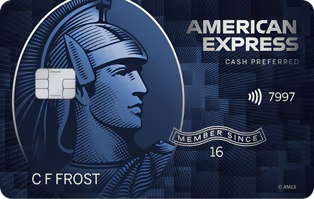
The ideal credit card for this credit card hack is the Blue Cash Preferred® Card from American Express. Perfect for those who spend a lot on groceries and streaming services, as it offers 6% cash back in these categories. Click for more info…
3.2 Maximize Rotating Category Bonuses
Cards that feature rotating categories can supercharge your cash back rewards. They do however, require a bit of planning. Every quarter, these cards offer elevated cash back (up to 5%) on different categories. Things like gas, dining, or department stores. So what you can do is plan your major spending accordingly. During the credit card’s tech-friendly quarter, buy your electronics. During the food-friendly quarter, stock up on you favorite food. You can squeeze out every penny of value. It’s crucial to set reminders to activate these bonuses, as they are not automatic.

A great card for this credit card hack is the Chase Freedom Flex℠ card. Offers 5% cash back on rotating quarterly categories like grocery stores, gas stations, and certain online merchants. Up to $1,500 in total combined purchases each quarter you activate. Click here for more info….
3.3 Utilize Sign-Up Offers Wisely
Many credit cards use attractive sign-up bonuses to attract new customers. They offer, for example, $200 back if you spend $1,000 in the first three months. You can take advantage of these offers in big way. What you can do is time your next big purchase with your application for this “sign-up bonus” credit card. This could be anything from holiday expenses, to a planned purchase of home appliances. This strategic timing lets you hit the spending requirement naturally, without urging you to buy things you don’t need.
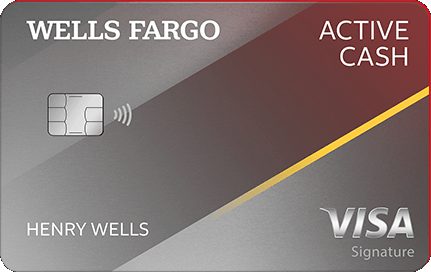
A perfect credit card for this credit card hack is the Wells Fargo Active Cash® Card. Get a $200 cash bonus after spending $500 within the first 3 months! Plus, earn unlimited 2% cash back on all your purchases. It also comes with a $0 annual fee. Click here for more info…
3.4 Activate and Use Card-Linked Offers
Most credit cards provide special offers that are linked directly to the card. The card needs to be activated before you can use it. These offers can be extremely lucrative, because many offer additional cash back on purchases at certain retailers. Therefore, why not make it a habit to review these deals regularly—perhaps as part of your weekly budgeting routine? Activating these offers before you shop will ensure you’re always getting the best deal available.

American Express credit cards are ideal for this credit card hack. American Express offers the “Amex Offers” program which provides various deals and discounts that can be activated and linked directly to your card. Once these offers are activated, any qualifying purchases made with the card automatically earn additional rewards. Rewards such as statement credits or bonus points, without affecting your existing rewards structure. Click here for more info…
3.5 Use Your Card for Every Purchase
Use your cash back credit card for everything. Use it for every purchase, big or small. From a morning coffee, to a car wash, to an online streaming service. Make sure you’re collecting cash back (which is the nature of the card) on every transaction. In truth, the key here is to be vigilant and pay off your card balance in full each month by the deadline. If you don’t, the interest will whittle away any rewards you’ve earned.
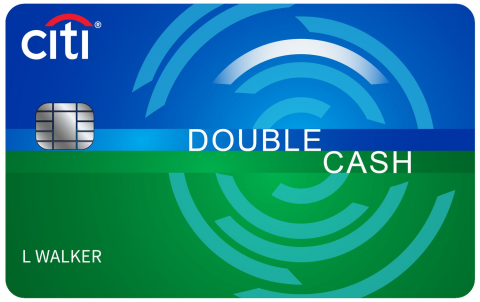
A well matching credit card for this credit card hack is the Citi® Double Cash Card. You can use this card for every day purchase because it offers 2% cash back on every purchase. It’s perfect for using on all transactions to maximize returns. Click here for more info…
3.6 Automate Your Recurring Payments
If you want to do a strategic move, automate your recurring payments by linking them to a cash back credit card. Now, your regular expenses turn into sources of rewards. You can set up your monthly fixed costs like the electricity bill, the insurance payment, and Netflix to be automatically charged to your cash back card. This method helps you better manage of your finances by reducing the number of transactions you need to handle manually, but it also makes sure that you earn rewards on these recurring payments each and every month. Therefore very dollar spent on these fixed payments gives you more cash back.
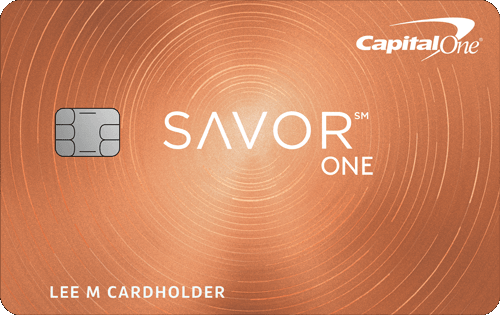
The ideal credit card for this credit card hack is the SavorOne Rewards from Capital One. You can use it to automate your recurring bill payments and earn 3% cash back on popular streaming services and 1% cash back on every purchase. Also, this card offers a $0 annual fee and low introduction Annual Percentage Rate (APR). Click here for more info…
3.7 Diversify Your Card Portfolio
If you want to make the most of all your cash back opportunities, it’s a good idea to have several credit cards. Why you ask? Because each credit card offers different types of cash back rewards and you can chose the appropriate one for the appropriate reward. For example, one card might give you the best cash back when you eat out, so use that one to pay for meals. Another might be better for booking flights and hotels. Use that on for travel. By using each card for its best rewards category, you can earn more cash back overall. This strategy helps you get more benefits from your spending and can also improve your credit score by showing you can handle multiple accounts well. Make sure to pay all balances by their deadline to make it worthwhile.

The perfect match for this credit card hack is the Bank of America® Customized Cash Rewards Credit Card. Its flexible cash back categories make it a good choice to use alongside other specific-use cards. It offers, 3% cash back on dining, travel, online shopping, 2% cash back on groceries and wholesale, 1% on other purchases, and possible 25%-75% bank bonus rewards on purchases. Click here for more info…
3.8 Assess Annual Fees Against Benefits
Every year, take the time to evaluate the cost-effectiveness of each credit card that charges an annual fee. Look beyond just the cash back earned; consider other perks such as complimentary travel insurance, extended warranties, or exclusive discounts that add value to your lifestyle. If you find that the total value of these rewards and benefits does not justify the fee, it might be a sign to reconsider the card.
Comparing these cards with no-annual-fee alternatives can be eye-opening. Sometimes, switching to a card that offers slightly lower rewards but no annual fee could increase your net savings. This assessment helps ensure that every dollar you spend on fees is actually working to bring you greater overall value, aligning with your spending habits and financial goals.

A great credit card to switch to in order to take full advantage of this credit card hack is the Capital One Venture Rewards Credit Card. It has a small annual fee of $95 and offers a 3 month introductory 75,000 bonus miles you spend $4,000, unlimited 2X the miles per dollar on every purchase, every day, and unlimited 5X the miles on hotels and rental cars booked through Capital One Travel. Click here for more info…
3.9 Take Advantage of Online Shopping Portals
Credit card shopping portals can significantly boost your cash back earnings. These portals have partnerships with a multitude of retailers, ranging from clothing and electronics to home improvement stores, often providing higher cash back rates than you’d receive from shopping directly. Before making any online purchase, it’s worthwhile to first visit your credit card’s shopping portal to see if the retailer is listed.
Now, credit card shopping portals are not usually made public. You cannot access them like a regular website. Because they need to authenticate the user, you can only get to them via your account on the credit card company’s website.
Here’s how you can access these shopping portals through some of the major credit card issuers:
Chase: For Chase cardholders, the shopping portal is called “Shop through Chase.” Access it by logging into your account at Chase’s website.
American Express: American Express users should look for “Amex Offers” after logging into their accounts at American Express’s website.
Citi: Citi’s “Citi Bonus Cash Center” is accessible through the Citi account portal at Citi’s website.
Bank of America: Bank of America customers can find “BankAmeriDeals” by signing into their accounts at Bank of America’s website.
Discover: Discover cardholders can use “Discover Deals” by logging into their accounts at Discover’s website.
Capital One Shopping: This a tool that automatically finds and applies the best deals at checkout. It offers extra rewards, saving you money and maximizing your earnings on every online purchase. You can access it at Capital One Shopping.
This extra step can lead to substantial savings, especially during promotional periods when cash back rates are increased to entice shoppers. Also, combining these portal deals with other ongoing sales or coupons can maximize your savings even further, making each online purchase more rewarding.
3.10 Plan Your Billing Cycle Strategically
Timing your spending can be just as crucial as managing what you spend on. By aligning your larger purchases or significant bill payments with the start of your credit card’s billing cycle, you can optimize the use of your card’s grace period. The grace period is the time during which any purchases made do not accrue interest, typically lasting between 21 to 25 days after the close of a billing cycle.
Making big-ticket purchases right after your billing cycle resets essentially gives you nearly a full month plus the length of the grace period before any payment is due. This can be incredibly beneficial for cash flow management, as it allows your money to remain in your bank account longer. During this time, you can use these funds in ways that might be more immediately necessary or beneficial, such as investing, paying down other debts with higher interest rates, or simply keeping your savings intact to accrue interest.
4. Cashback Rewards Credit Card Hacks
These credit card hacks specifically tailored to help you maximize your Cashback Rewards. Here as well, let’s delve deeper into each of these strategies and see how you can effectively optimize each hack so you can get the most satisfying rewards possible with every swipe of your card.
4.1 Leverage Reward Multipliers
Maximizing your rewards is all about strategic card usage, especially when it comes to cards that offer multiple points per dollar spent in specific categories. For instance, if your credit card offers 3X the points on grocery spending, make sure to use it every time you’re at the supermarket. Furthermore, if you frequently dine out or travel, using a card that multiplies rewards in these categories. It will similarly accelerate your points accumulation. It’s also beneficial to keep an eye out for special promotions or limited-time offers that temporarily boost point multipliers, allowing you to plan purchases around these periods. By aligning your spending with these multipliers and timing your purchases strategically, you can exponentially increase the rewards earned, making each transaction more valuable.
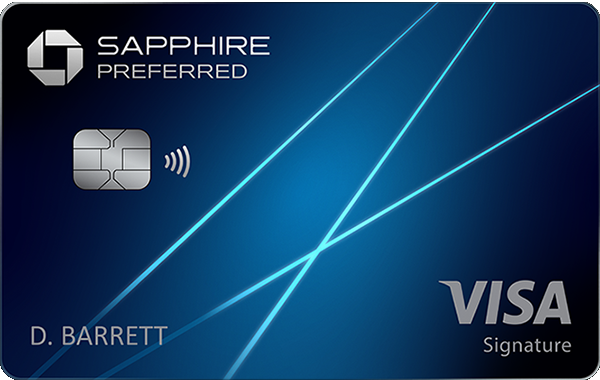
A superb fit for this credit card hack is the Chase Sapphire Preferred® Card. It has a robust rewards structure and flexibility points redemption options. You can earn 5x the total points on travel purchased through Chase Travel, 3x the points on dining (also delivery services, takeout and dining out). 3x the points on online groceries, 3x the points on streaming services and 1 point per dollar everywhere else. You can also transfer points at a 1:1 ratio to numerous frequent traveler programs. Click here for more info…
4.2 Combine Cards for Layered Rewards
For this credit card hack, it’s about using a combination of credit cards strategically so you can significantly amplify the rewards you earn from a single purchase. This approach, often called “reward stacking,” involves using different cards to capitalize on various bonus categories and special offers. For example, begin by accessing a retailer through your credit card’s online shopping portal that offers additional points or cash back.
Once at checkout, switch to another card that provides a high reward rate specifically for online purchases or for that particular type of retailer, such as electronics or fashion stores. Additionally, if any of your cards offer seasonal promotions or dynamic spending bonuses, coordinating their use in a single transaction can multiply the benefits. This layered approach ensures that you maximize the potential cash back or points available, turning everyday purchases into a more lucrative opportunity.
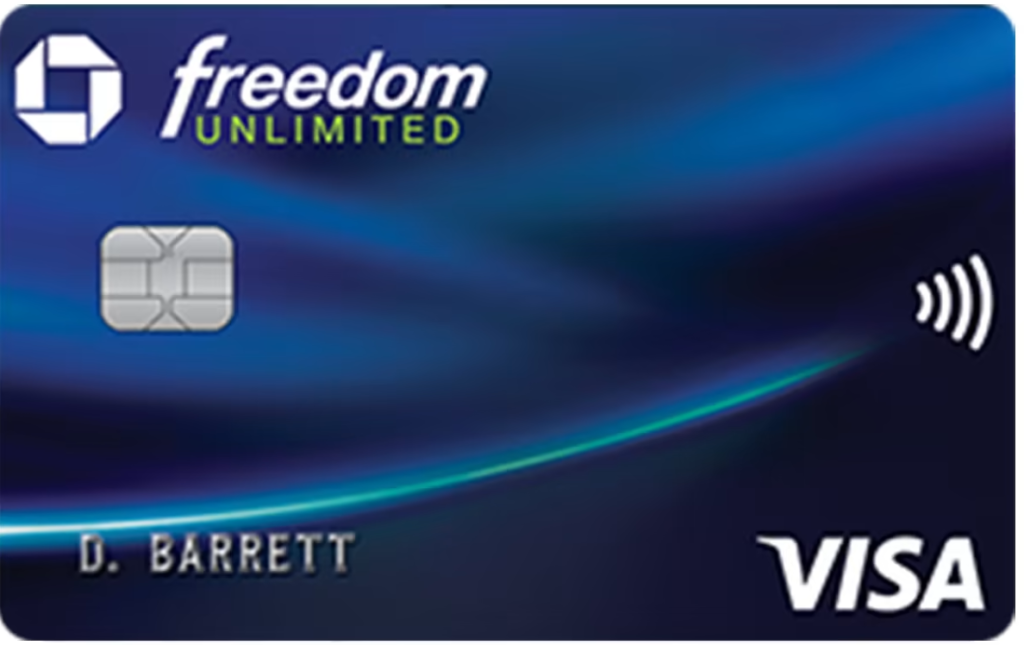
An excellent card for this credit card hack is Chase Freedom Unlimited®. It offers 5% on travel purchased through Chase Ultimate Rewards®, 3% on dining at restaurants, (including takeout and delivery services, 3% on drugstore purchases and 1.5% cash back on all other purchases). It can be used with several other Chase credit cards to achieve layered rewards, especially with those that also earn Ultimate Rewards points. Click here for more info…
4.3 Optimize Redemption for Peak Value
To maximize the value you get from your points, it’s important to redeem them during promotional periods when their value is significantly increased. Credit card issuers frequently offer promotions that enhance the value of points, particularly for travel-related redemptions such as flights and hotel stays. For example, during a promotional event, your credit card may offer a 20% to 50% bonus on points redeemed through their travel portal. This means that points typically worth $0.01 each could increase to $0.015 or even $0.02 during the promotion. It may not sound like a lot, but it is.
To take advantage of these enhanced values, keep track of upcoming promotions by subscribing to your credit card’s newsletter or regularly checking their website. Planning your redemptions around these peak times can lead to substantial savings, especially for expensive purchases like international flights or luxury hotel stays. Additionally, some credit card companies extend similar bonuses to other types of redemptions, such as merchandise or exclusive experiences.
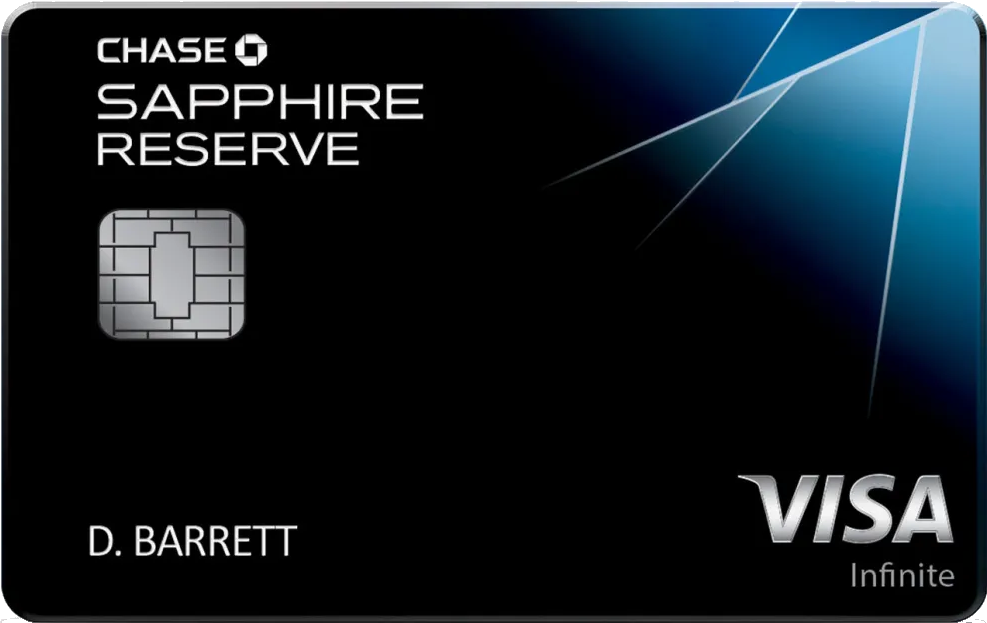
One of the best cards for this credit card hack is the Chase Sapphire Reserve®Credit Card. It comes with very generous travel redemption options and a really high rewards rate. When you use your points to book travel through Chase, you get 50% more value. So, 50,000 points become $750 in travel credit instead of $500 cash back. You can maximize the value of every point. Click here for more info…
4.4 Transfer Your Points Wisely
Moving your points to airline or hotel loyalty programs instead of using them directly through your credit card can often give you more bang for your buck. This is because some travel programs value the points more highly, especially for things like flight upgrades or luxury hotel stays. Before you transfer, look carefully at how many points you need to transfer and what you’ll get in return. Some programs have special deals where you need fewer points than usual for flights or hotel rooms, which can really add up to big savings.
Always compare different transfer options to find the best deal. This might mean checking several airlines or hotel chains to see where your points can stretch the furthest. By choosing the right time and program to transfer your points, you can make your rewards work harder and go further.
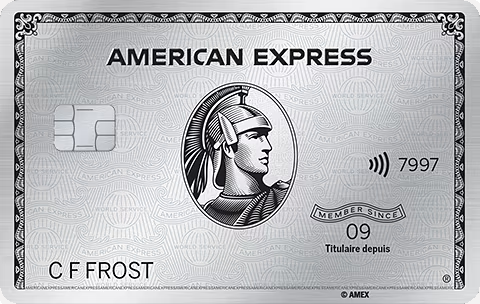
A truly epic card for this credit card hack is the American Express Platinum Card®. You can use it to transfer Membership Rewards points to many airline and hotel loyalty programs. Usually on a 1-to-1 basis. This includes major partners like British Airways, Delta Air Lines, Marriott Bonvoy, and many more. Sometimes, points transferred to these partners, have a higher value with them than with Amex. Especially for premium airline tickets or hotel stays. Click here for more info…
4.5 Take Advantage of Renewal Bonuses
Some credit cards offer you a special thank-you in the form of renewal bonuses when you pay your annual fee to keep the card for another year. These bonuses can be quite generous, giving you extra points or a higher percentage of cash back just for staying with the same card. These extra points can often match or even exceed the cost of the annual fee itself, making it a smart choice to renew your card. Before your renewal date, check what bonuses your card offers. It could be thousands of extra points that you can use for travel, shopping, or more, or an increased cashback rate that will apply to your purchases throughout the coming year. By taking advantage of these renewal bonuses, you essentially get more value back than the fee you pay, which can make sticking with your current card a smart financial move.
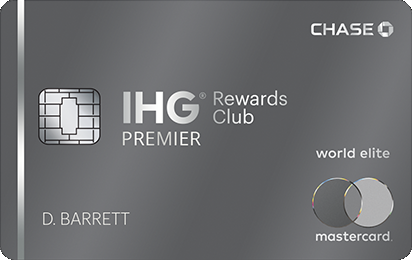
A smart choice for this credit card hack is the IHG® Rewards Club Premier Credit Card. Every year, this card offers you a free hotel night reward on the anniversary renewal of your credit card. The free night is usually a greater value than the $99 renewal fee making this a great deal especially for frequent travelers.
4.6 Exploit Shopping Portal Offers
This credit card hack is about making sure to visit your credit card’s rewards portal first, before you shop online. Many credit cards have partnerships with online stores. If you access these stores through your card’s portal, you can earn extra points or get more cash back than usual. For example, you might normally earn 1% cash back on purchases from a particular store, but if you visit the store through your credit card’s portal, you could earn 3% cash back or more. Always take a few minutes to check the portal for additional deals or bonus offers before making any online purchase.
So, here’s how you can access the shopping portals of some additional major credit card issuers. Five more have been listed above in section “3.9 Take Advantage of Online Shopping Portals“.
Capital One: Capital One cardholders can access “Capital One Shopping” by logging into their account at Capital One’s website.
Barclays: Barclays users can find “Barclaycard Rewards Boost” after logging into their accounts at Barclays’s website.
Wells Fargo: Wells Fargo’s “Earn More Mall” is accessible through the Wells Fargo account portal at Wells Fargo’s website.
U.S. Bank: U.S. Bank customers can find offers by signing into their accounts at U.S. Bank’s website.
HSBC: HSBC cardholders can use “HSBC Home&Away” by logging into their accounts at HSBC’s website.
4.7 Target Special Category Bonuses
Offers can change quickly and often. That’s why it’s important to stay alert to special category bonuses that your credit card company might offer for a limited time. These bonuses can significantly increase the points you earn on specific types of spending. For example, if your card offers a bonus like 5x points on dining during the summer months, make it a point to use this card when you dine out or order food. Additionally, some cards may offer increased rewards on categories like gas, groceries, or entertainment at different times of the year. Keeping track of these promotions and planning your spending around them can lead to substantial rewards accumulation. By aligning your purchasing habits with these temporary bonuses, you can make every dollar spent during these periods much more rewarding.
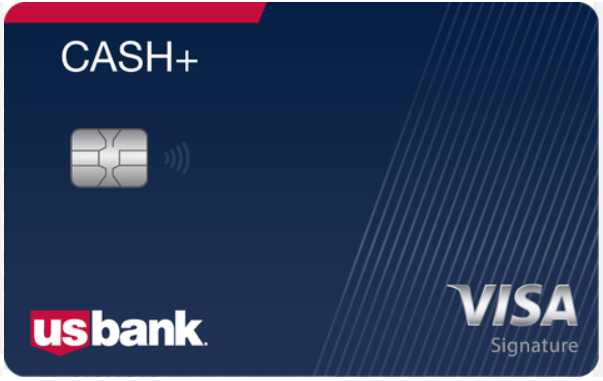
A card that’s work really well with this credit card hack, is the U.S. Bank Cash+® Visa Signature® Card because it has a very flexible rewards structure. It allows you to choose two categories during each quarter. For the first $2000 of purchases, you can get 5% cash back. Categories include department stores, cell phone service providers, fast food and many more. There is no annual fee and 2% cash back on everyday purchases like gas, grocery, and meals. Click here for more info…
4.8 Use Points for Gift Cards When Boosted
It’s wise to keep an eye out for special promotions from your credit card company that allow you to redeem your points for gift cards at an increased value. These promotions can make each point more valuable than usual. For instance, during a promotional period, you might be able to exchange fewer points for gift cards of higher denominations. This could mean turning what is normally $1 per 100 points into $1.25 or even $1.50 per 100 points. By taking advantage of these offers, you effectively increase the purchasing power of your points. So, make it a habit to check for these boosts, especially around major shopping seasons like the holidays, when many issuers offer enhanced redemption options. Redeeming points for gift cards during boosted times is a smart move that can help you stretch your budget further, whether you’re buying gifts or simply treating yourself.
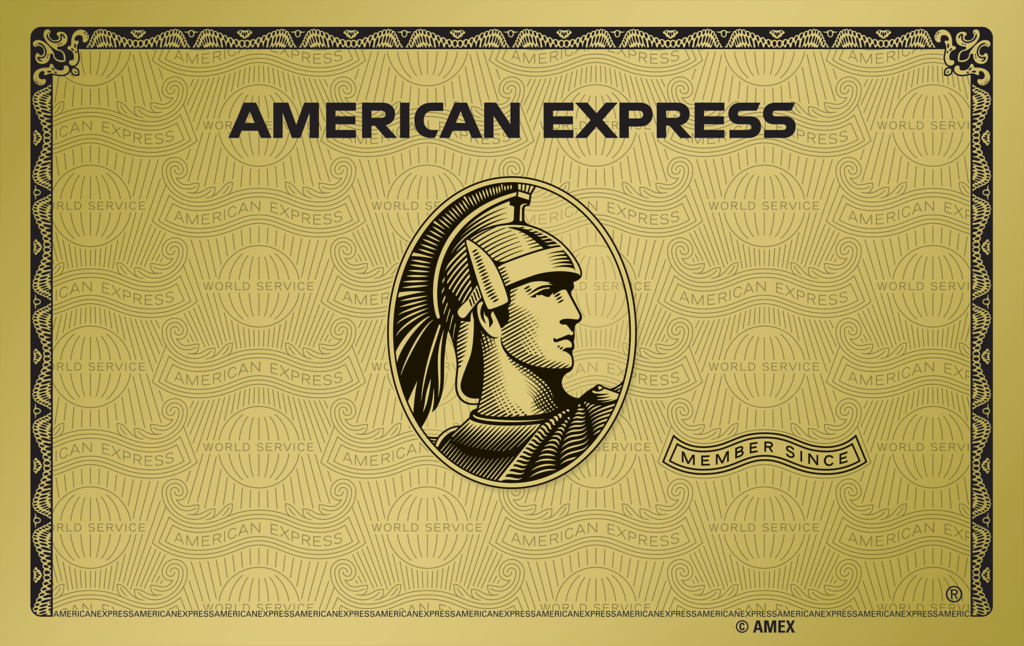
A card that is idea for this particular credit card hack is the well-known American Express Gold Card. Its membership rewards points can be redeemed for a variety of gift cards for retailers like Amazon, Best Buy and Home Depot. Points can also be redeemed for restaurant gift cards. From fast food to higher scale restaurants as well. Click here for more info…
4.9 Schedule Purchases Around Reward Calendars
This credit card hack is about making the most of your credit card’s rewards, by planning your bigger purchases according to the reward calendar. Many credit cards offer higher points for certain categories during specific times of the year. For instance, if your card provides extra rewards for electronics in the first quarter, hold off on buying that new laptop or smartphone until then. Similarly, if there are increased rewards for home appliances or travel bookings in another part of the year, try to schedule your spending to coincide with these periods. This planning not only maximizes the rewards you earn but also helps you manage your budget more effectively. By syncing your purchase timing with these reward boosts, you ensure that every large expense brings you the maximum possible benefit.
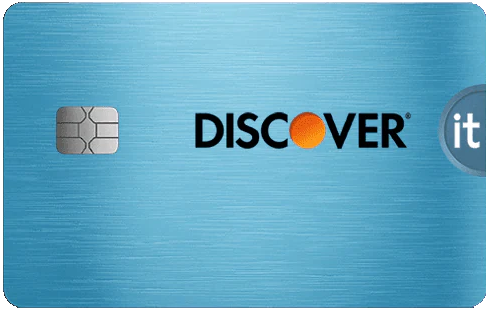
An excellent fit for this credit card hack is the Discover it® Cash Back Credit Card. This card features 5% cash back on different categories each quarter such as grocery stores, restaurants, gas stations, and Amazon.com, up to the quarterly maximum when you activate. These categories change every three months. The quarterly rotation allows you to plan your larger purchases in advance to coincide with the higher cash back percentages. For instance, if you know home improvement stores or Amazon will be a bonus category in an upcoming quarter, you might wait to make significant purchases until then to maximize your cash back. Click here for more info…
4.10 Engage with Card Services
Regularly talking to your credit card’s customer service can be more beneficial than you might think. By staying in touch, you can learn about special promotions or extra rewards that aren’t widely advertised. Don’t hesitate to call or chat online with customer service to ask about any new opportunities for earning bonus points or to get updates on upcoming promotions. Also, if you ever face any issues with your card, like unauthorized charges or service glitches, discussing these with customer service might not only resolve the problem but could also lead to you receiving discretionary points as compensation. Additionally, expressing your loyalty and satisfaction with the card can sometimes prompt the service representative to offer you exclusive rewards as a thank you. So, make it a point to engage proactively with card services—it can turn into a rewarding experience.
Download the Quick-List

Click here to download a handy quick-list of both the Cash Back and Cashback Rewards credit card hacks mentioned above. Learn how to maximize both types of rewards and check out our FREE bonus offer inside.
Once you’re done here, click the link to access Part 2 of this blog post series “Advanced Credit Card Hacks (Part 2): Maximizing Rewards for Business and Student Cards“. Learn how to boost rewards and unlock the secrets of high earnings business and student credit cards.




